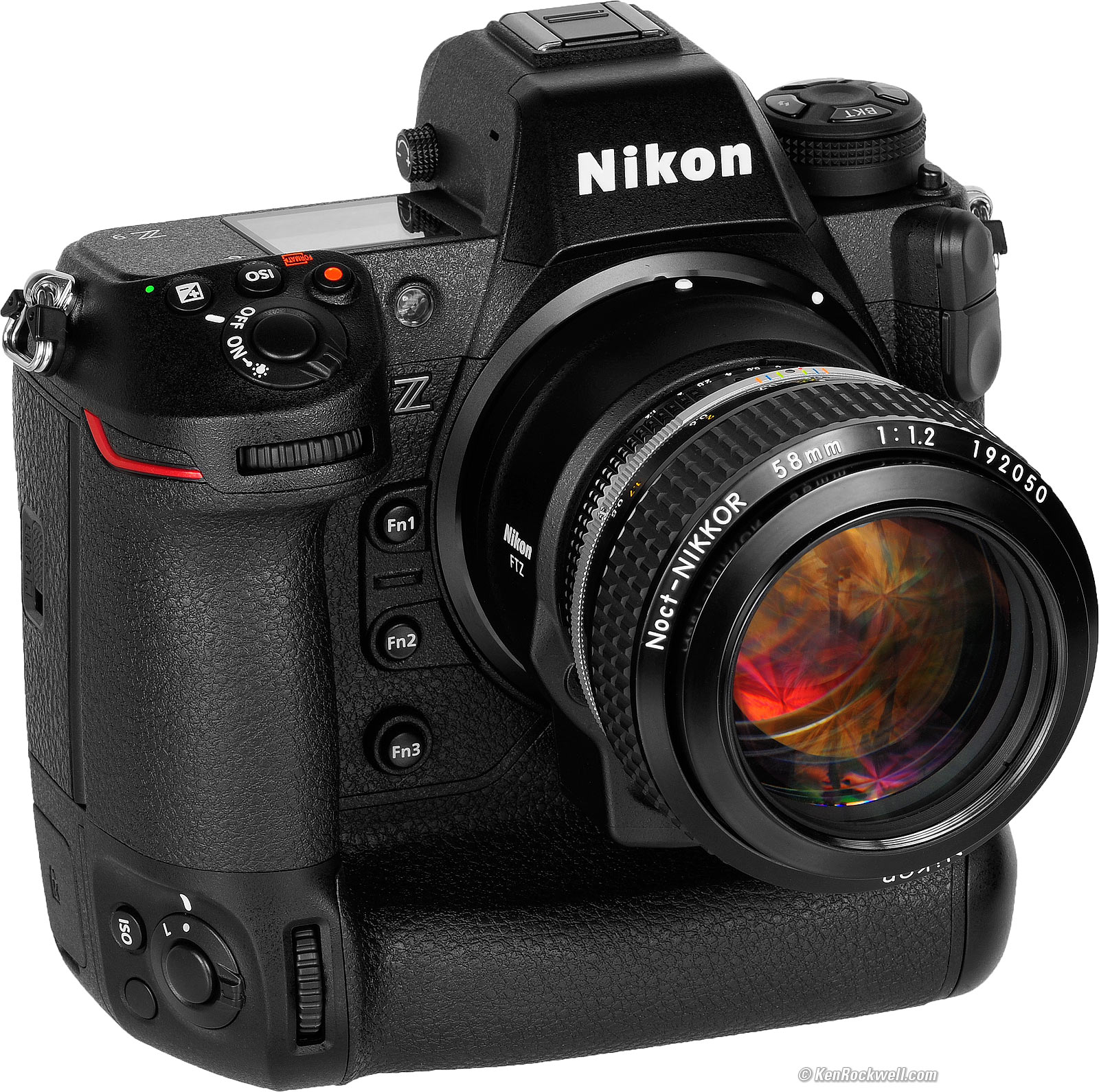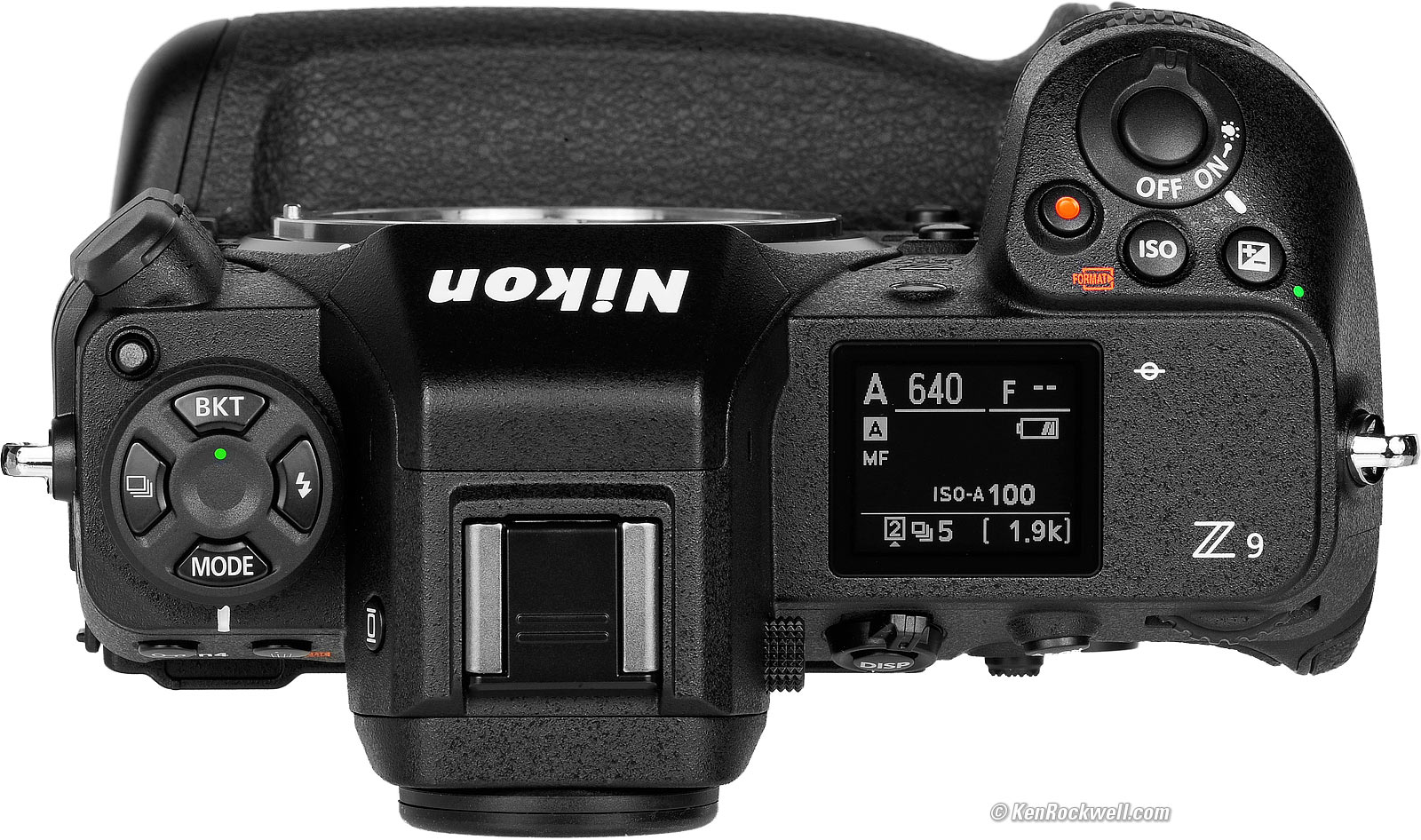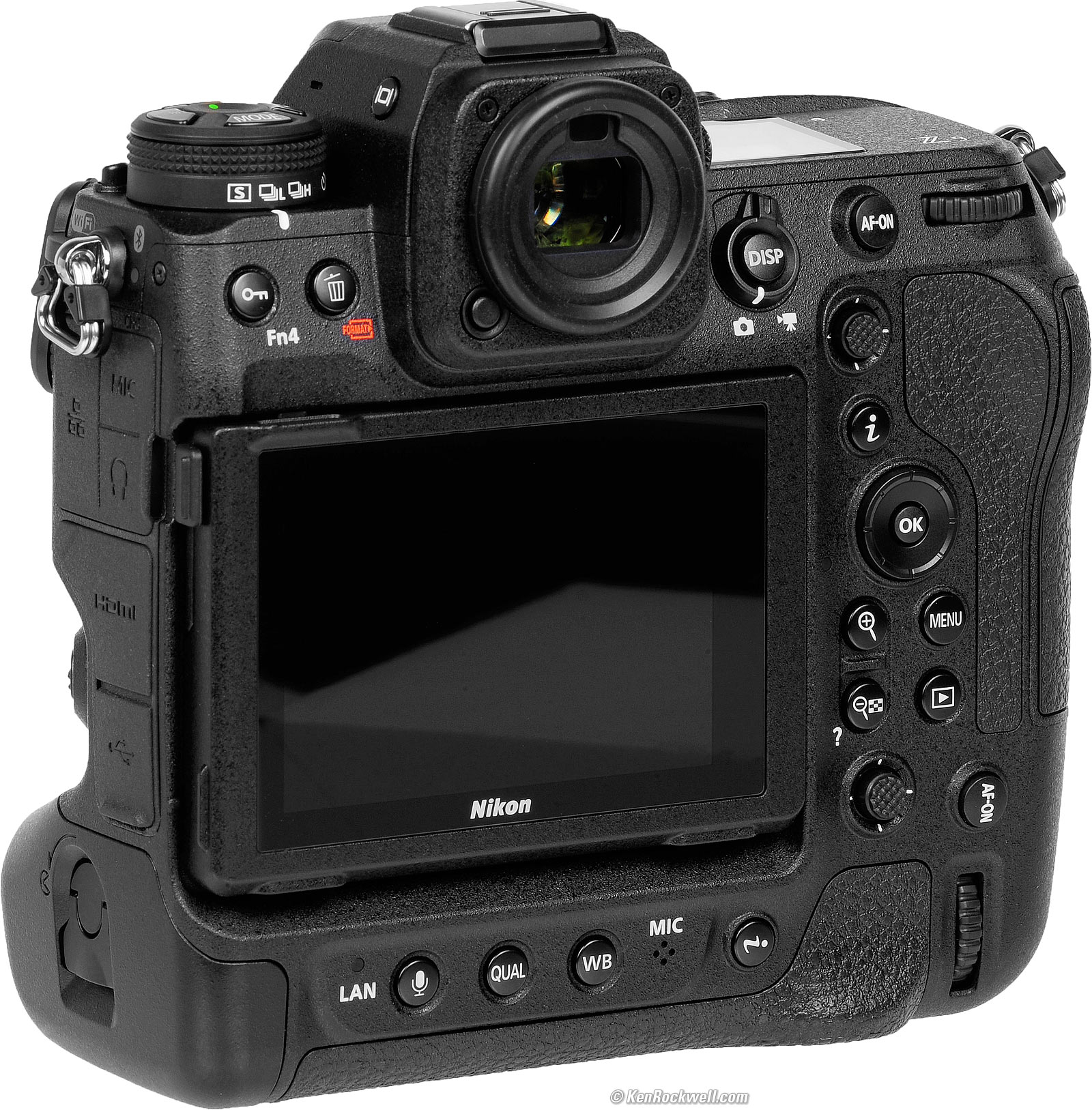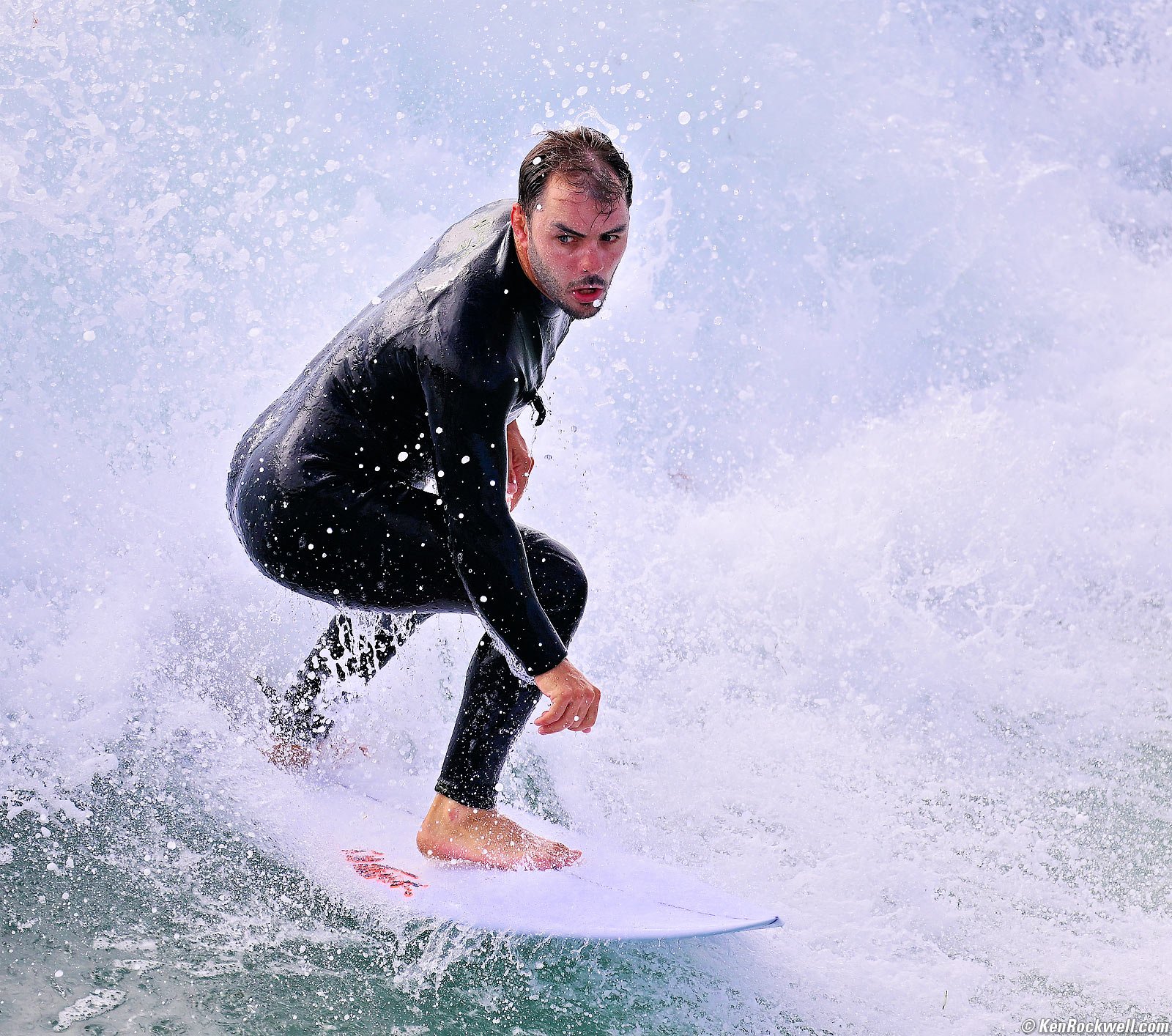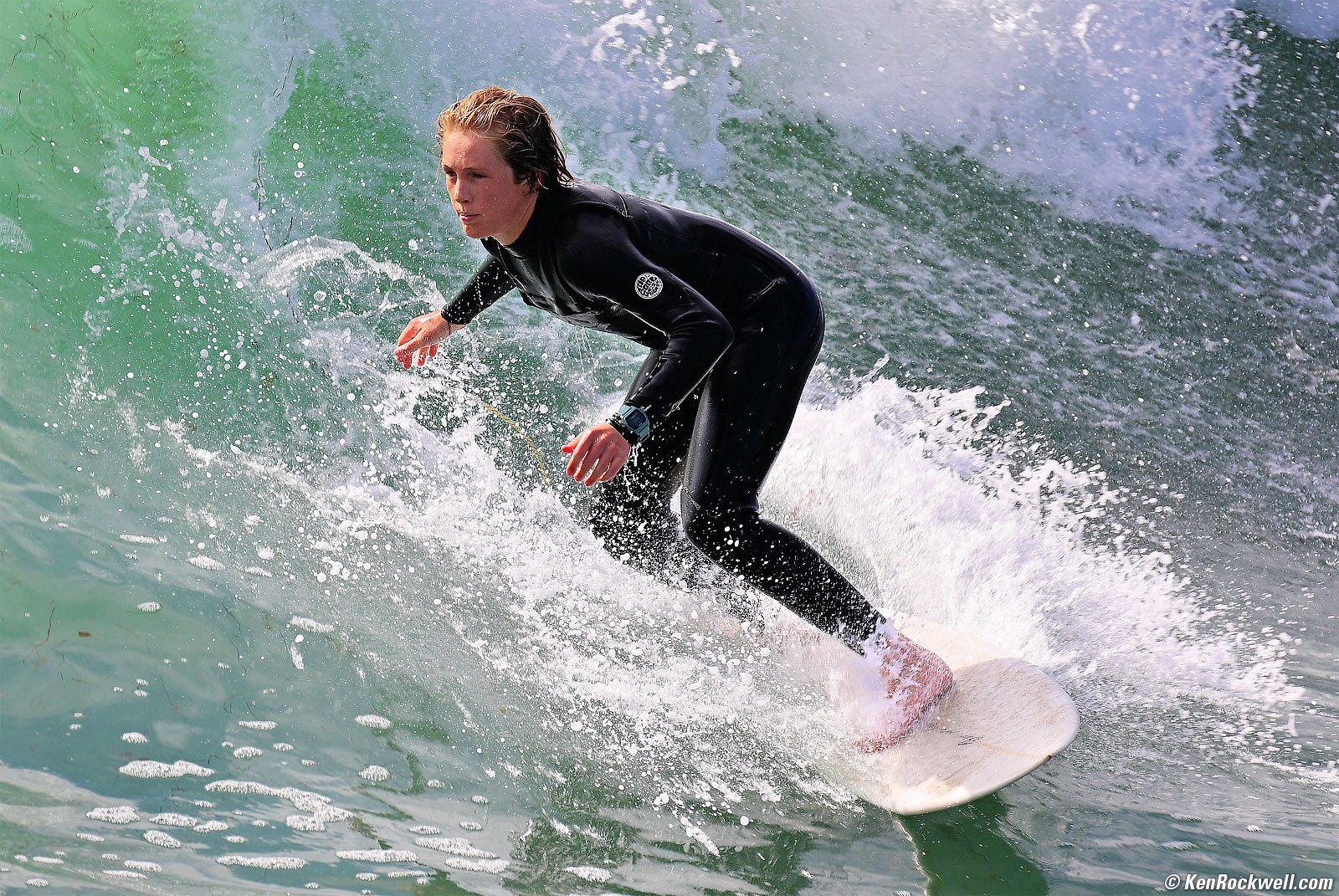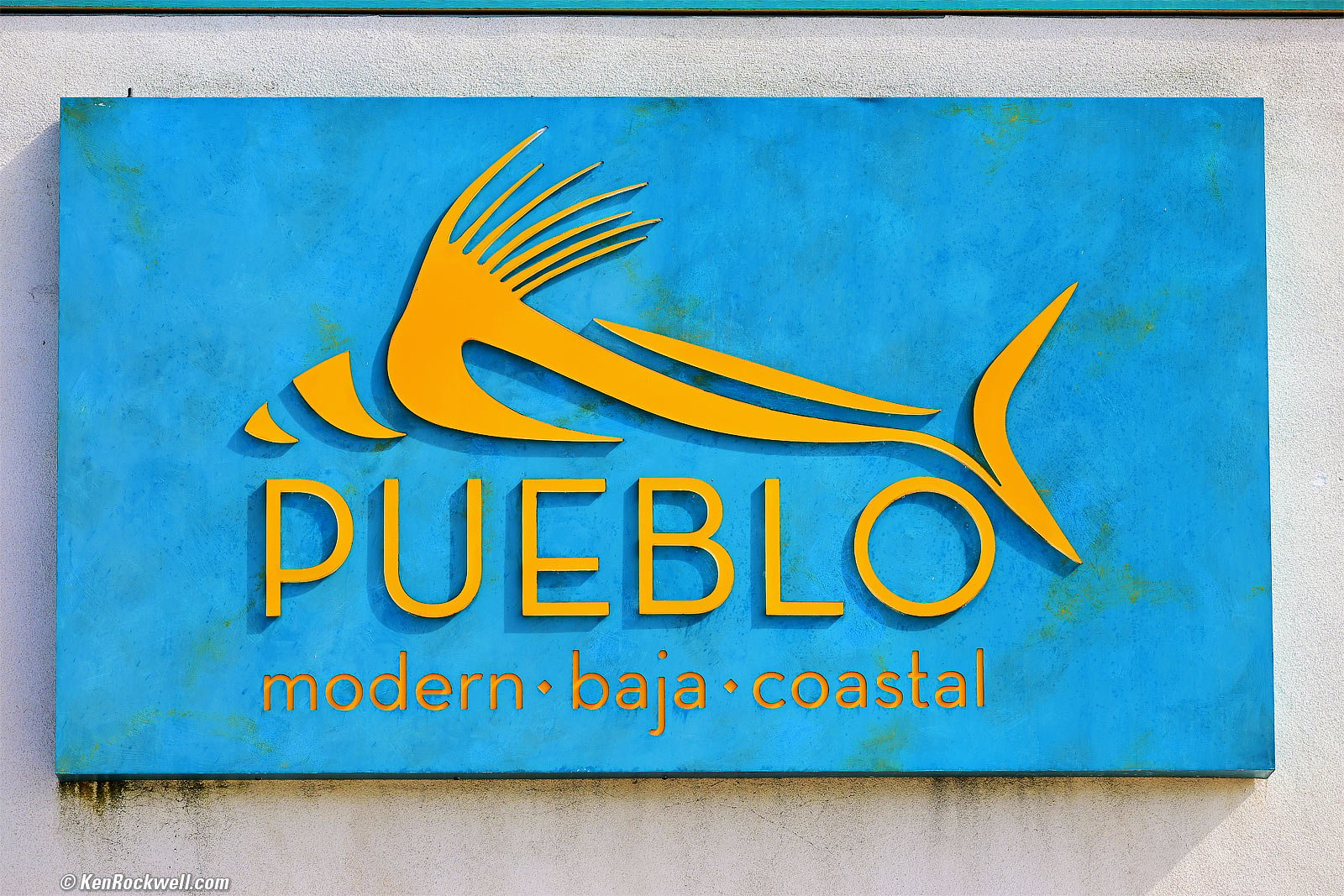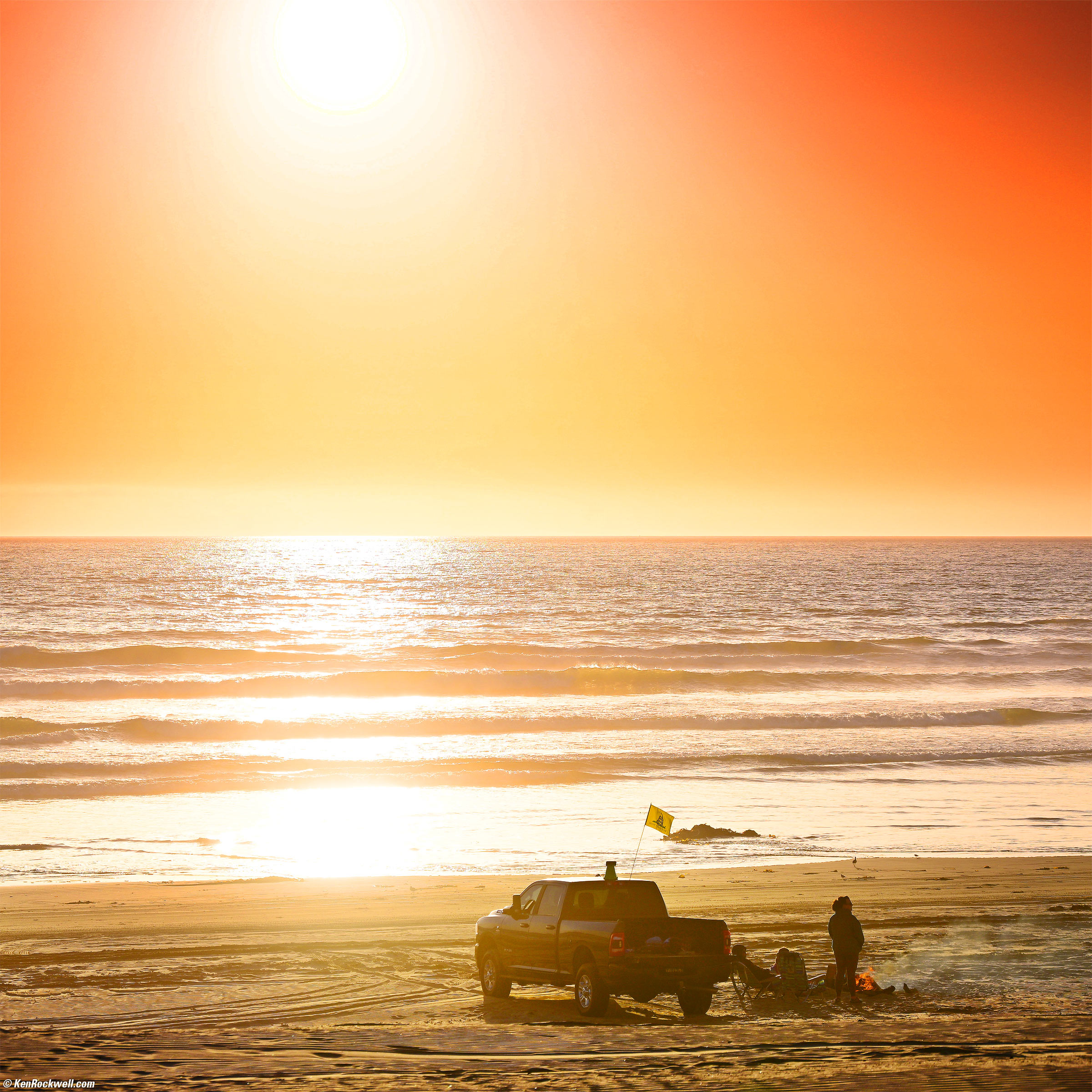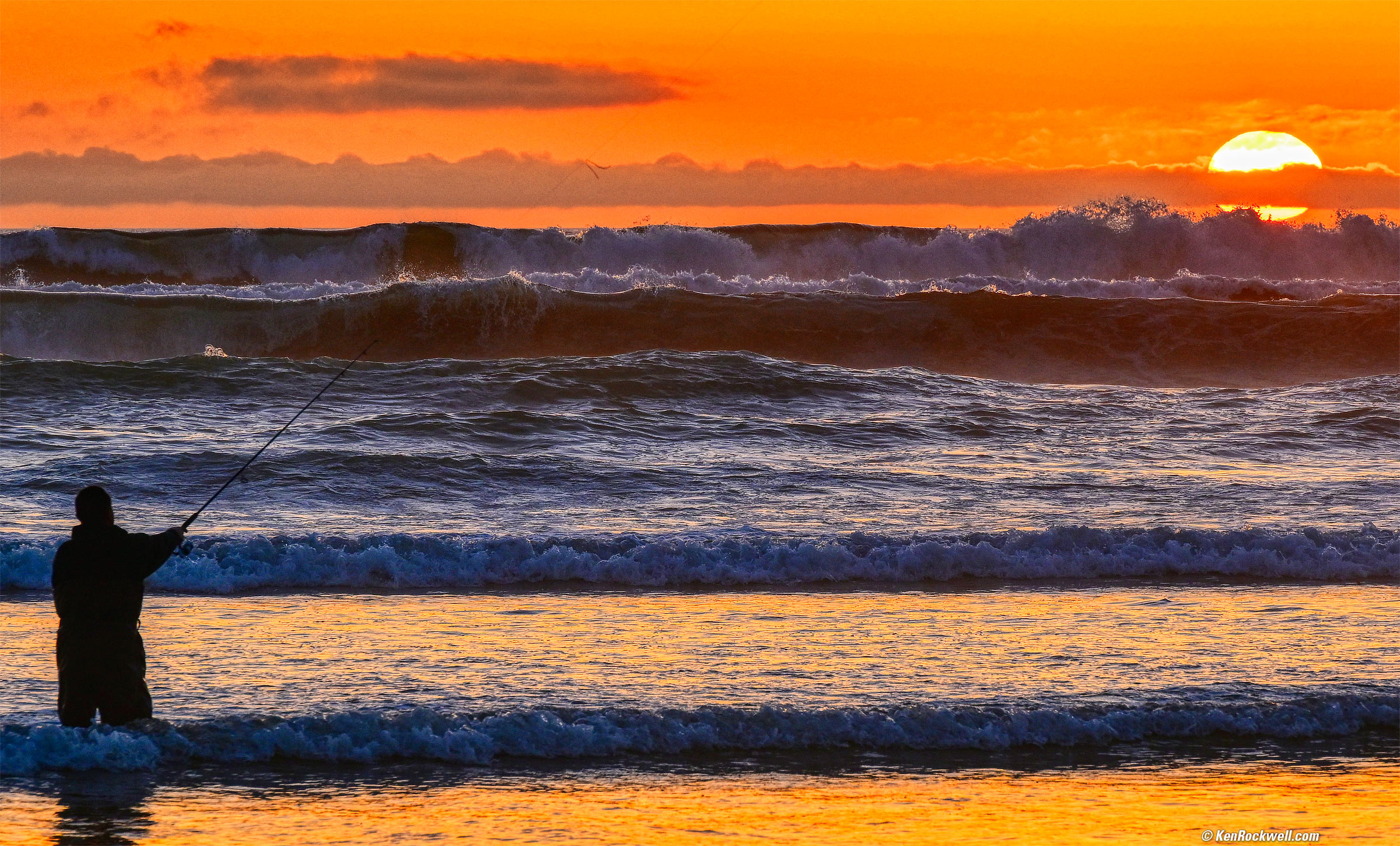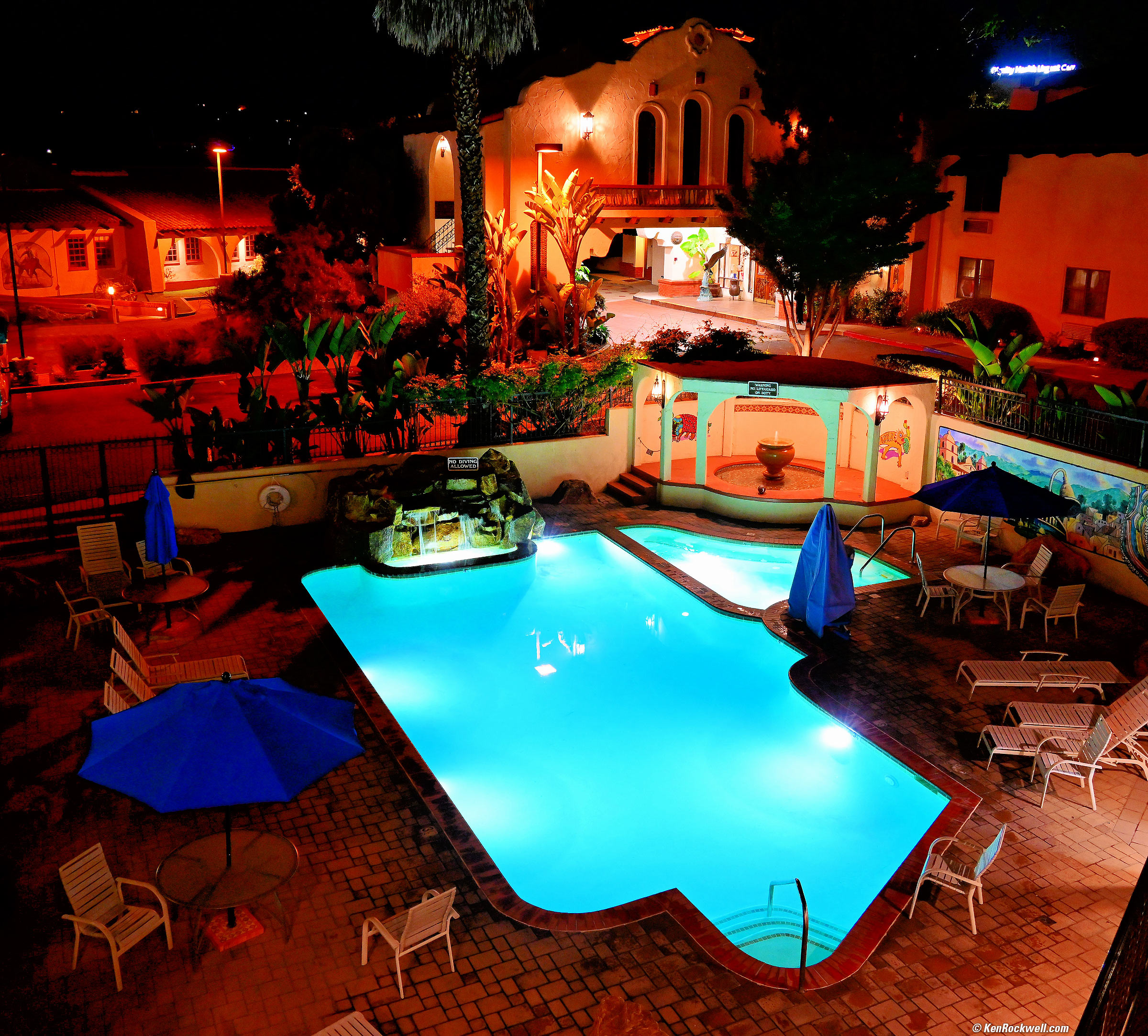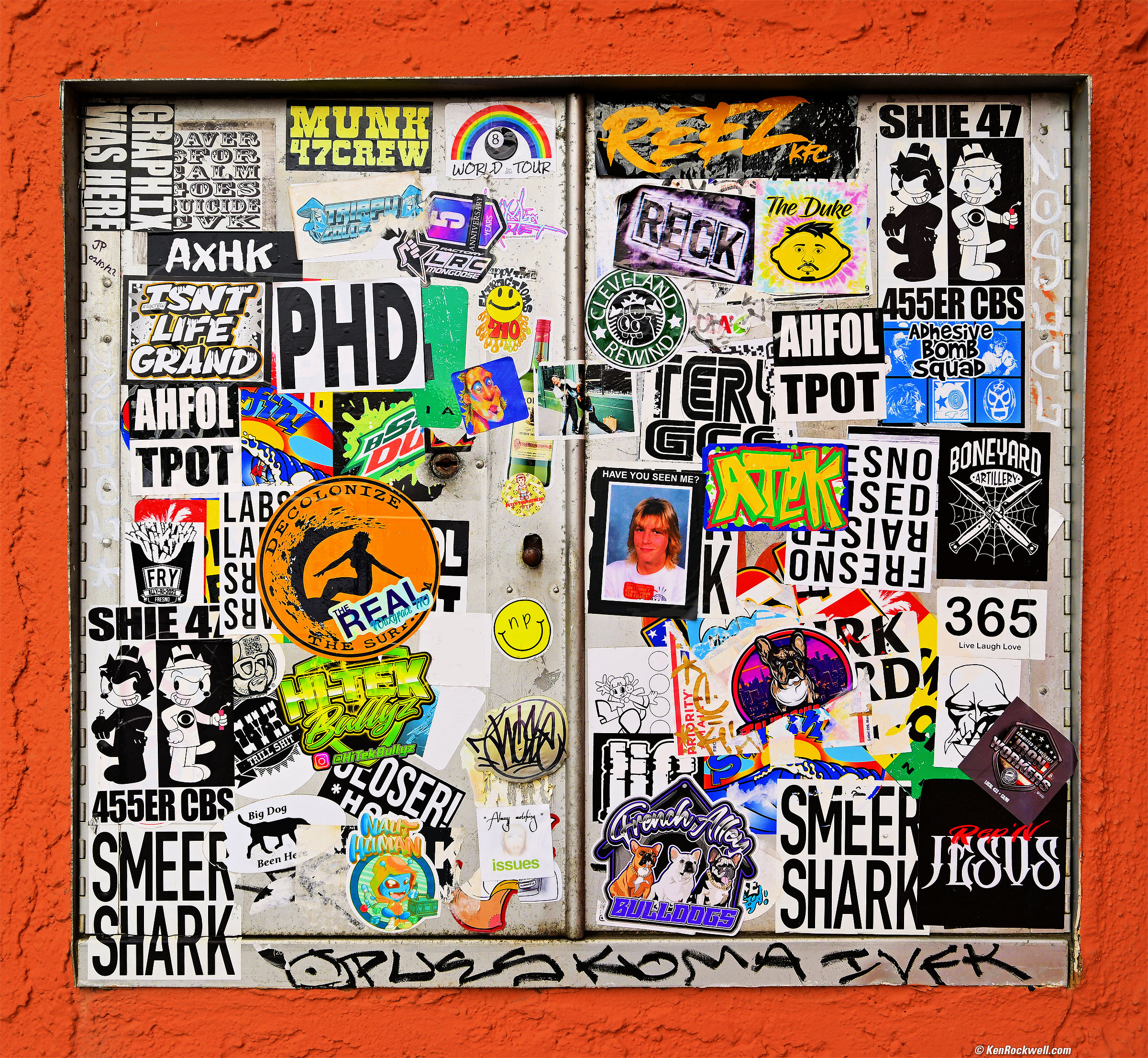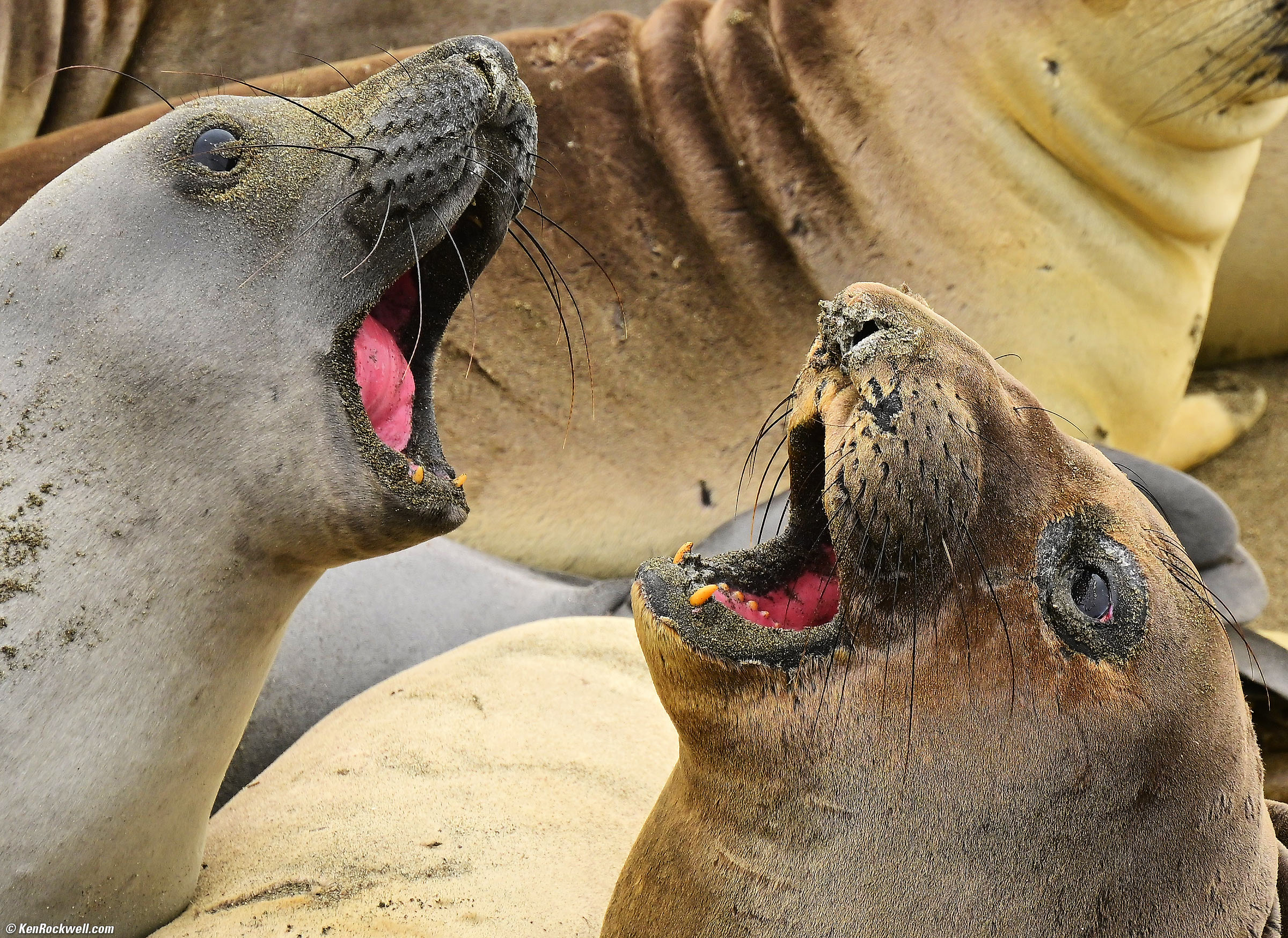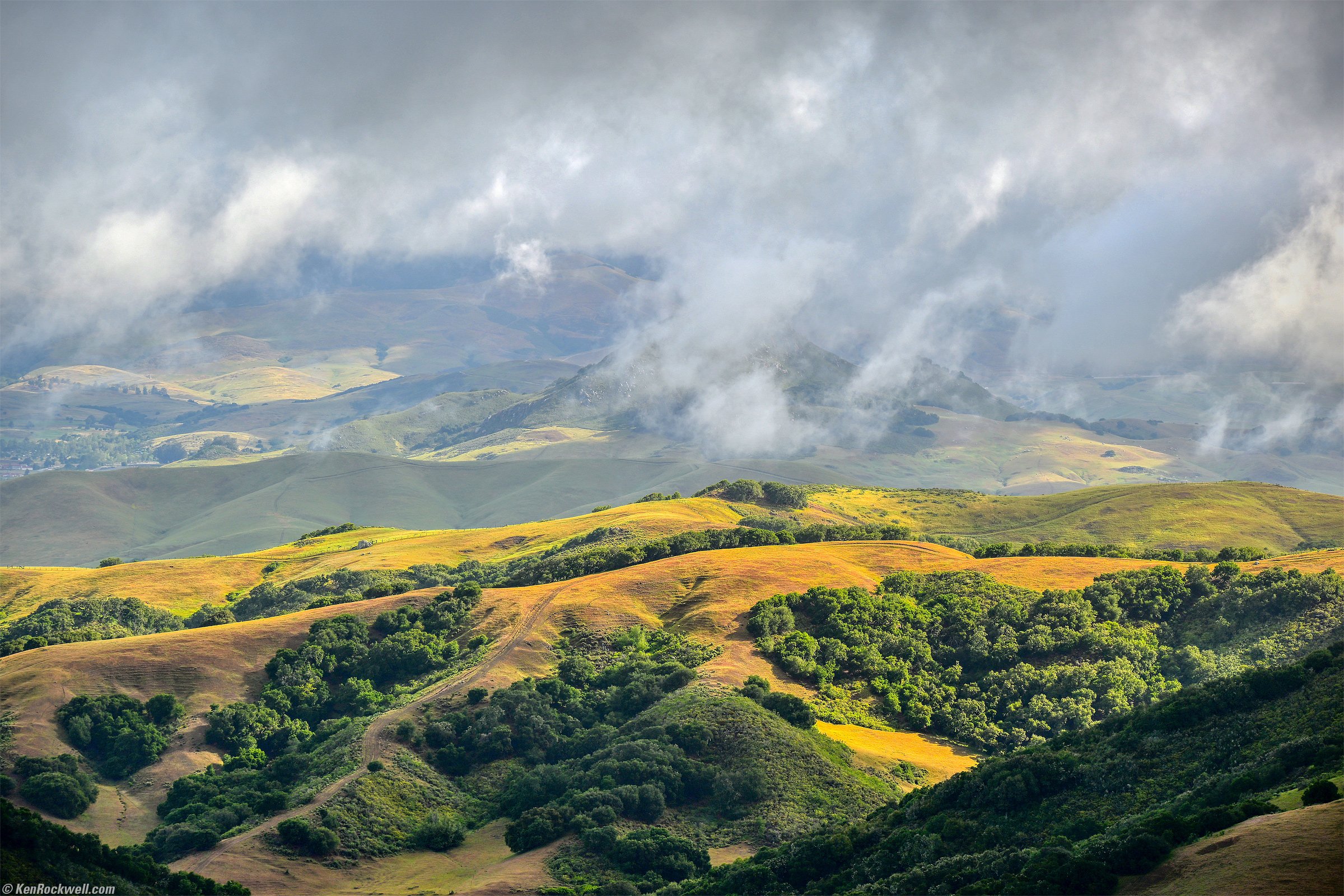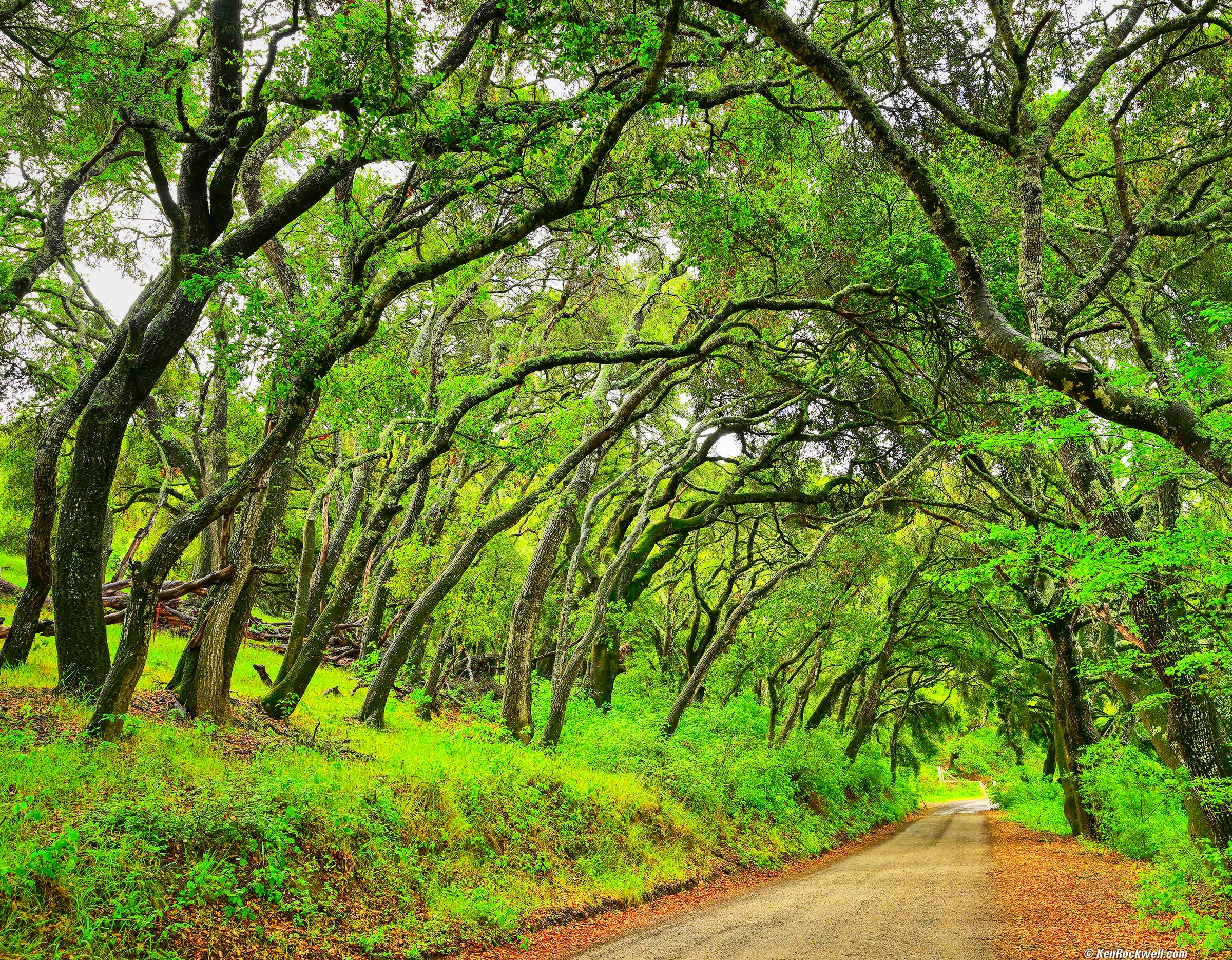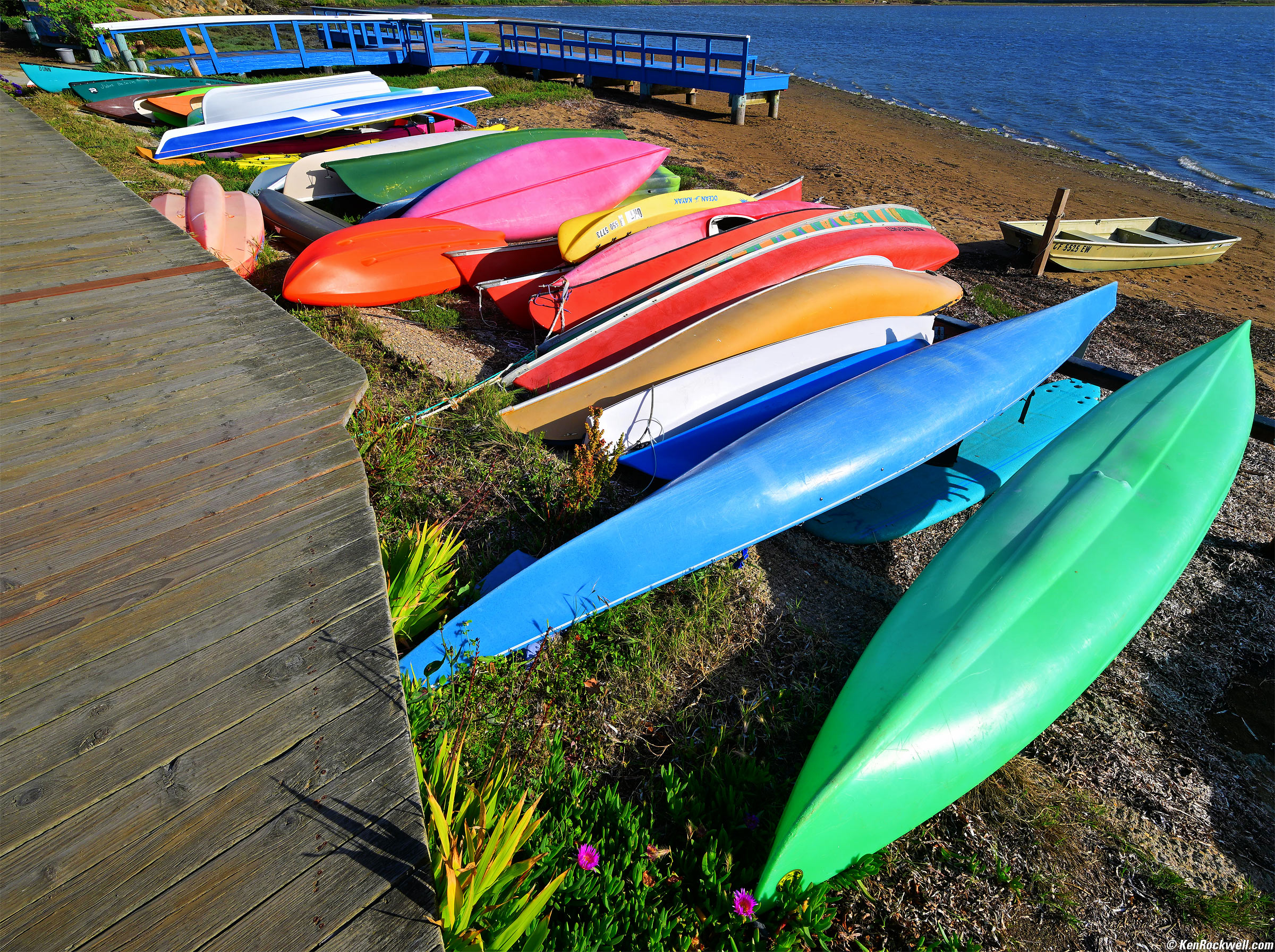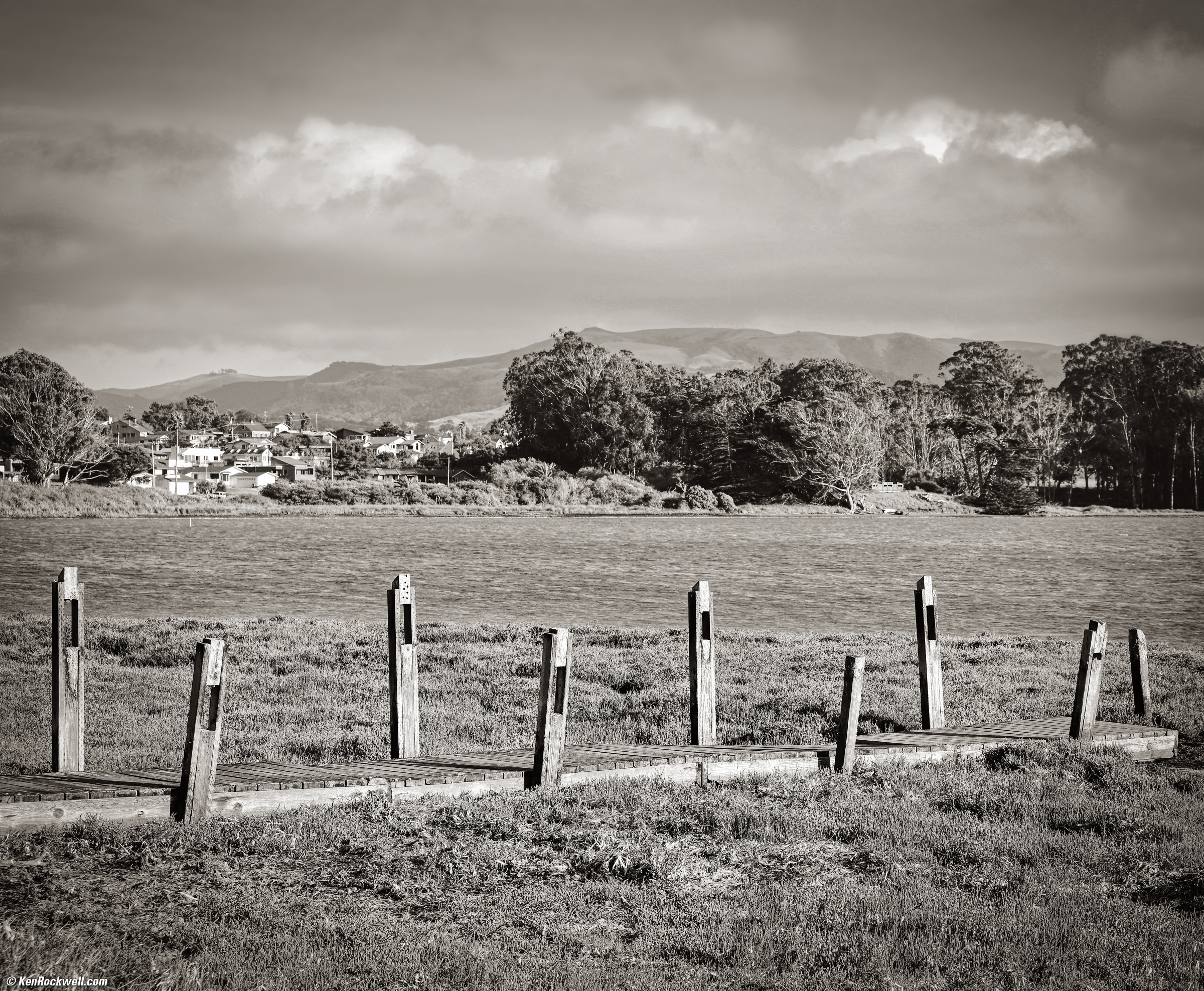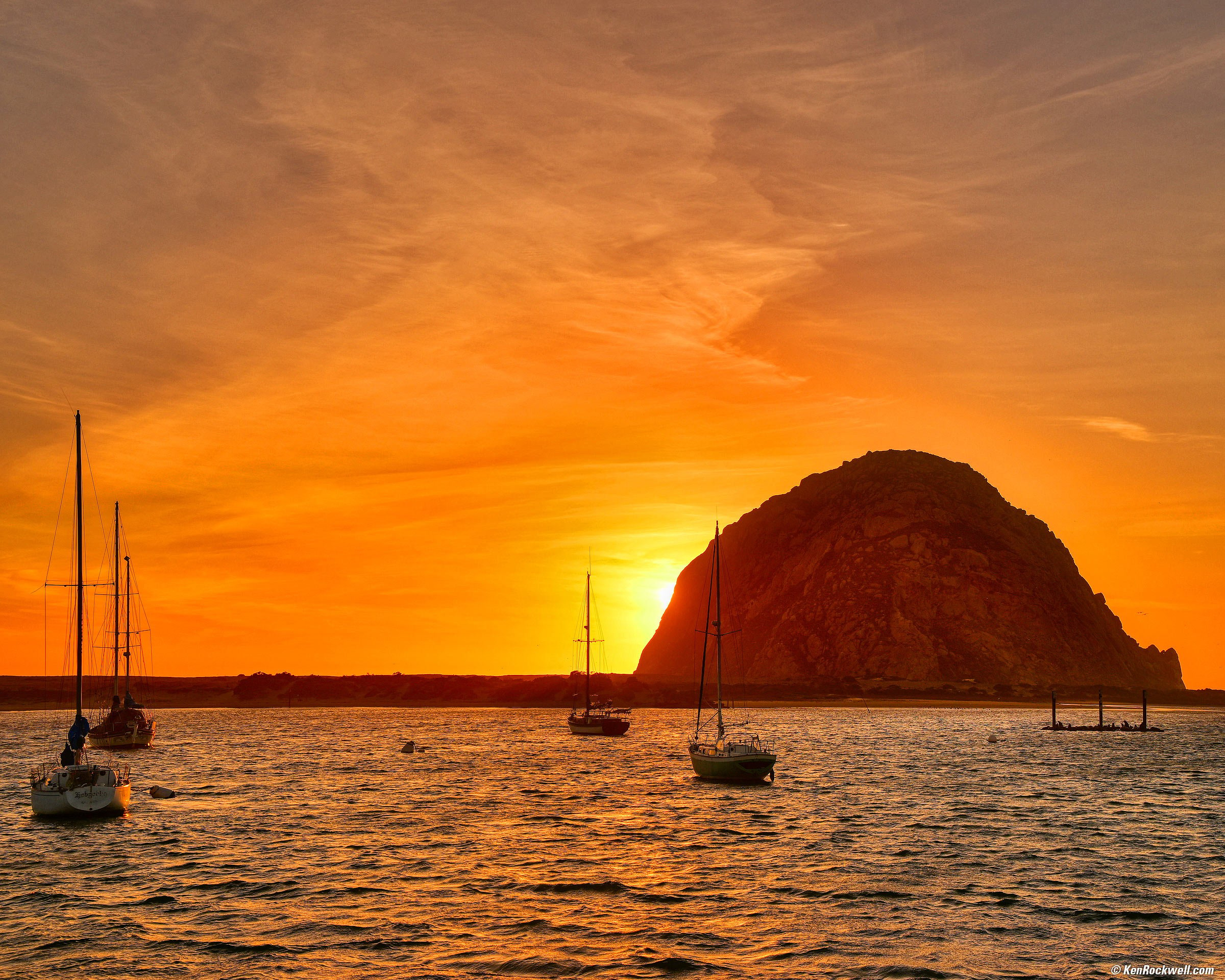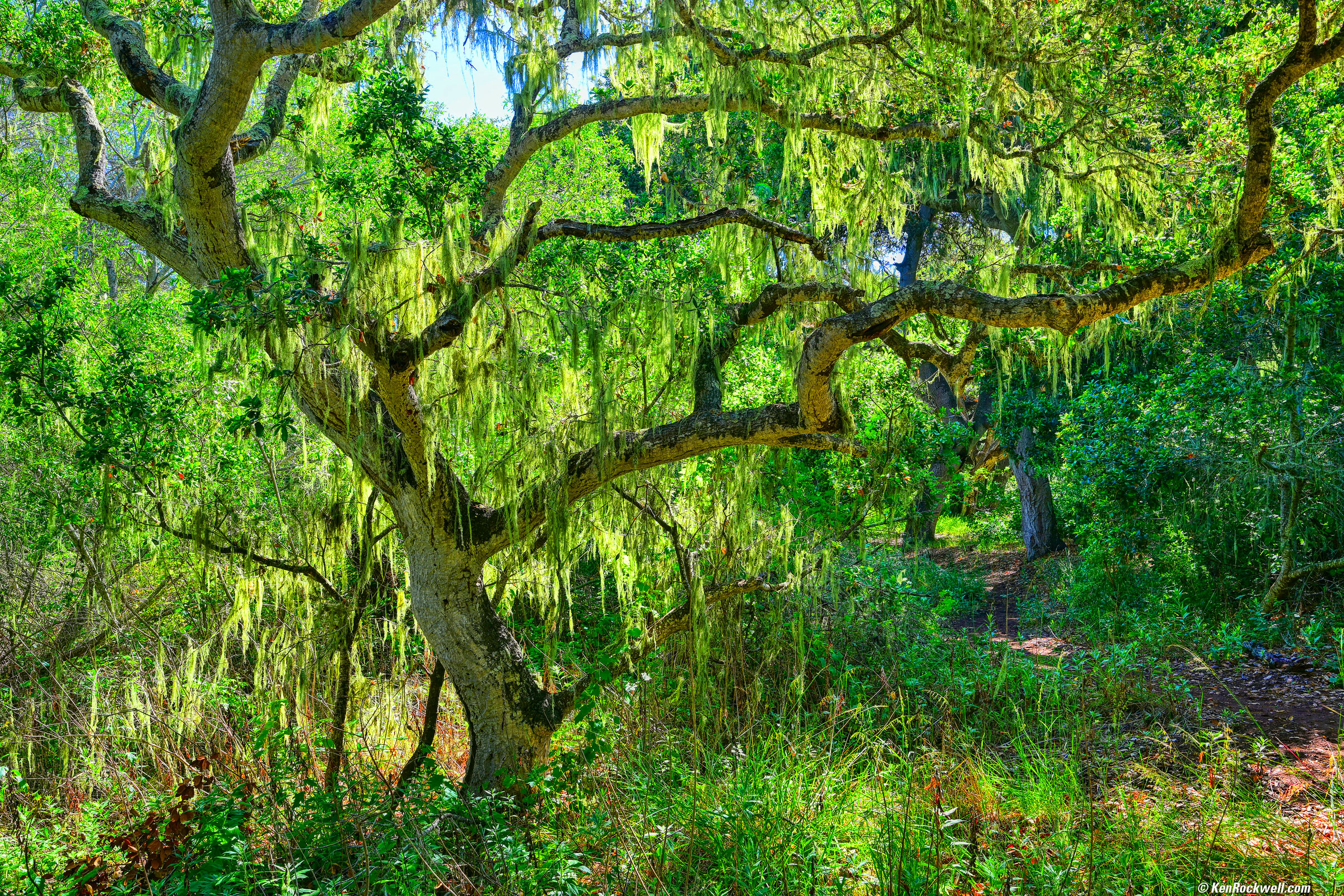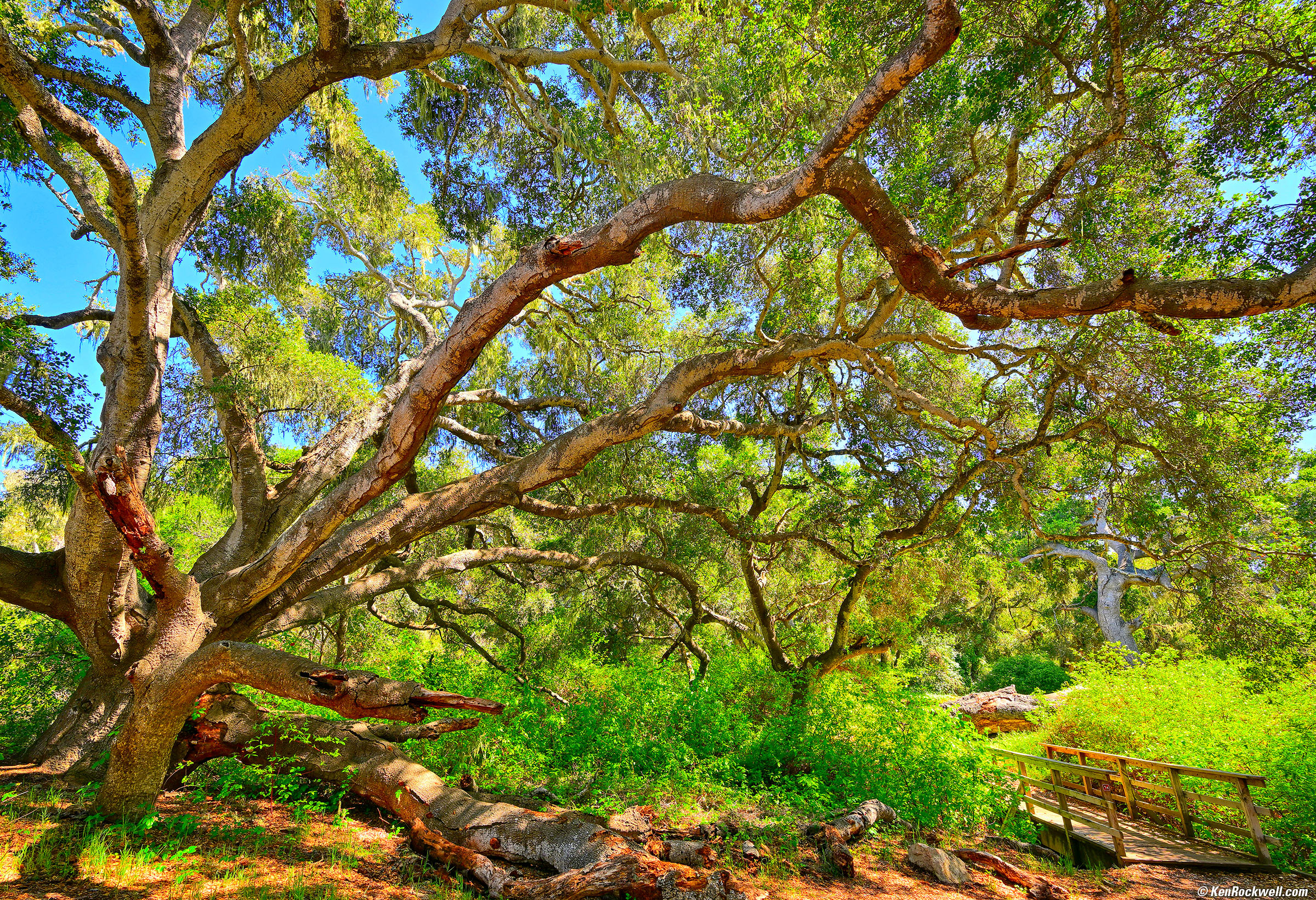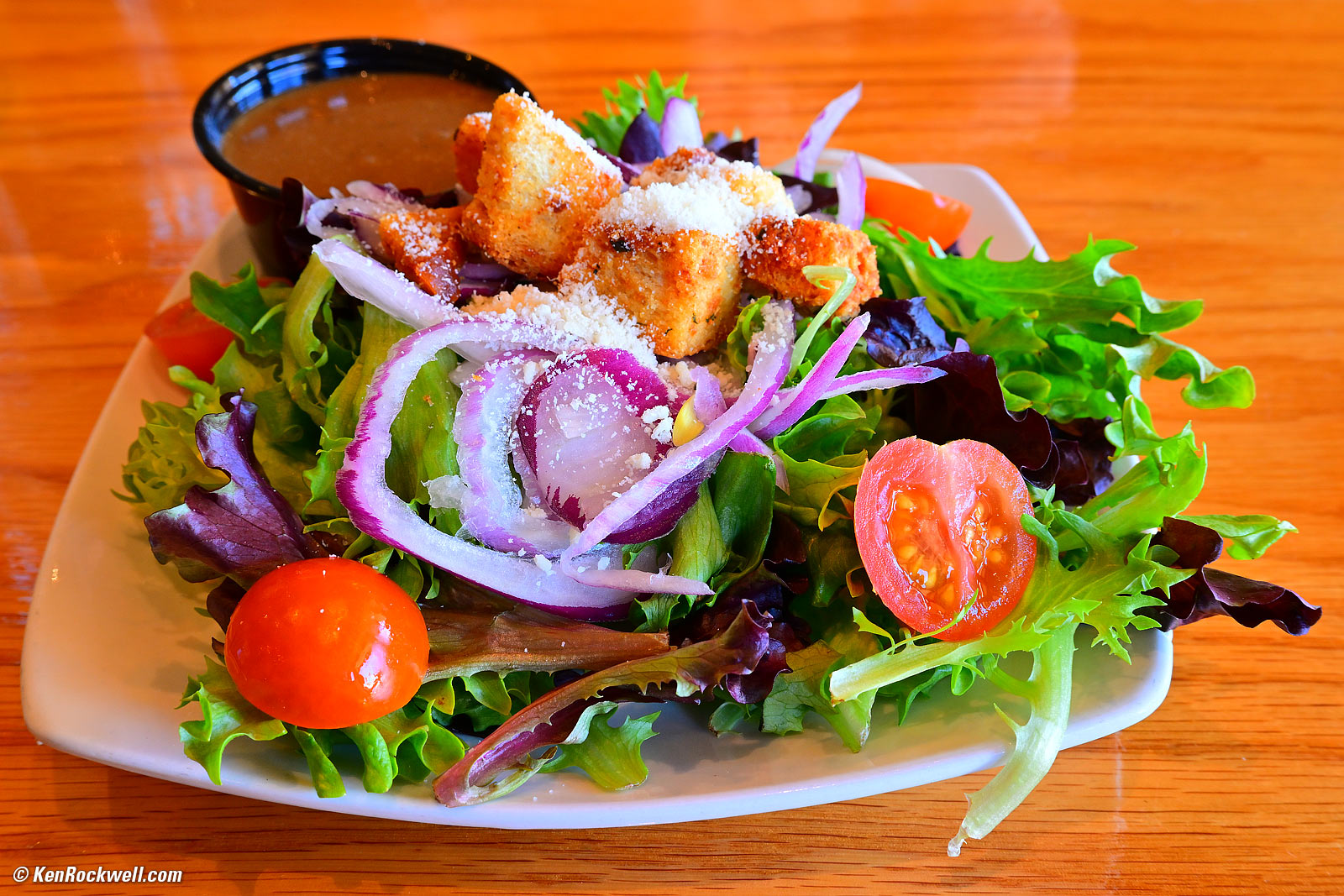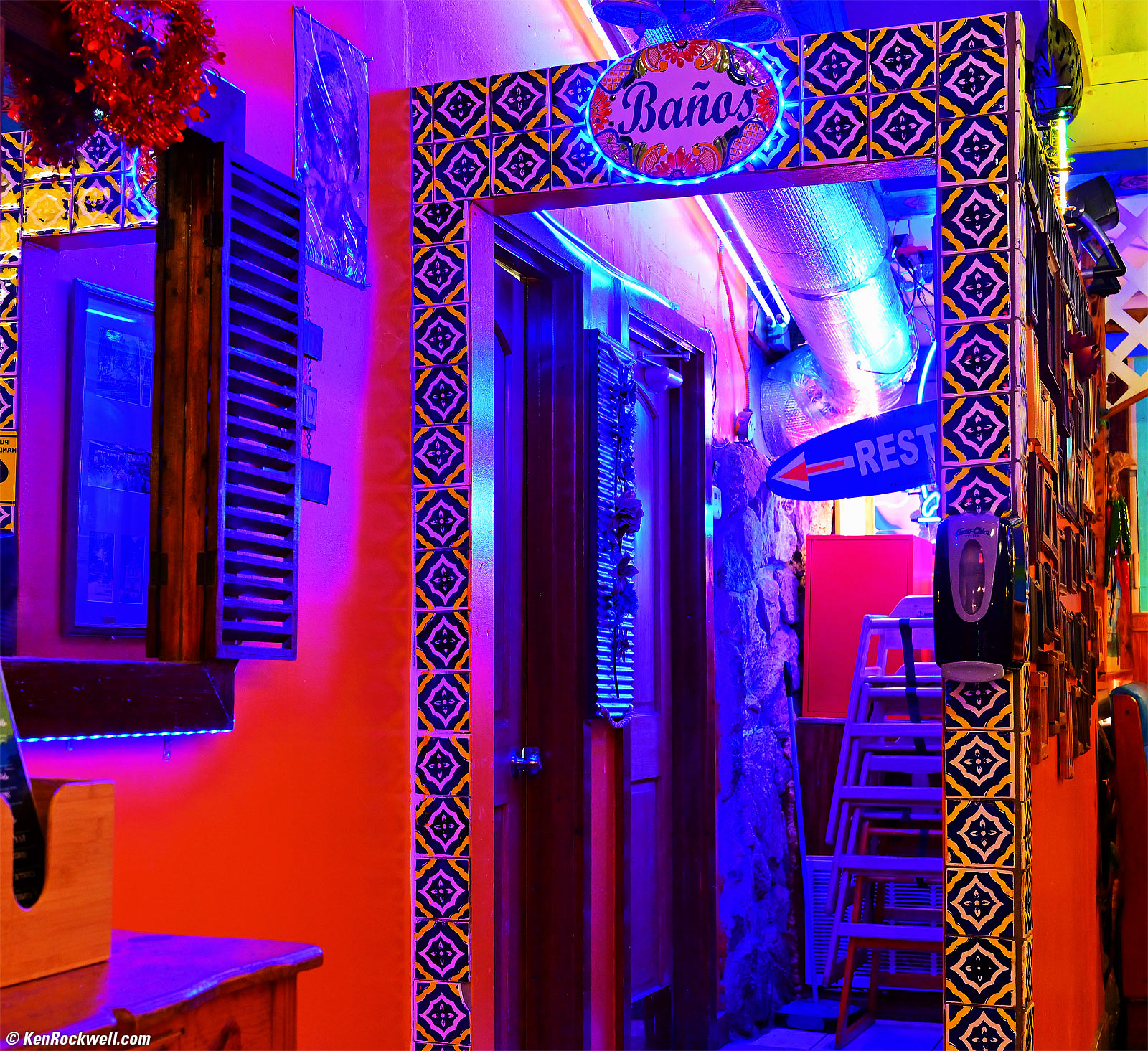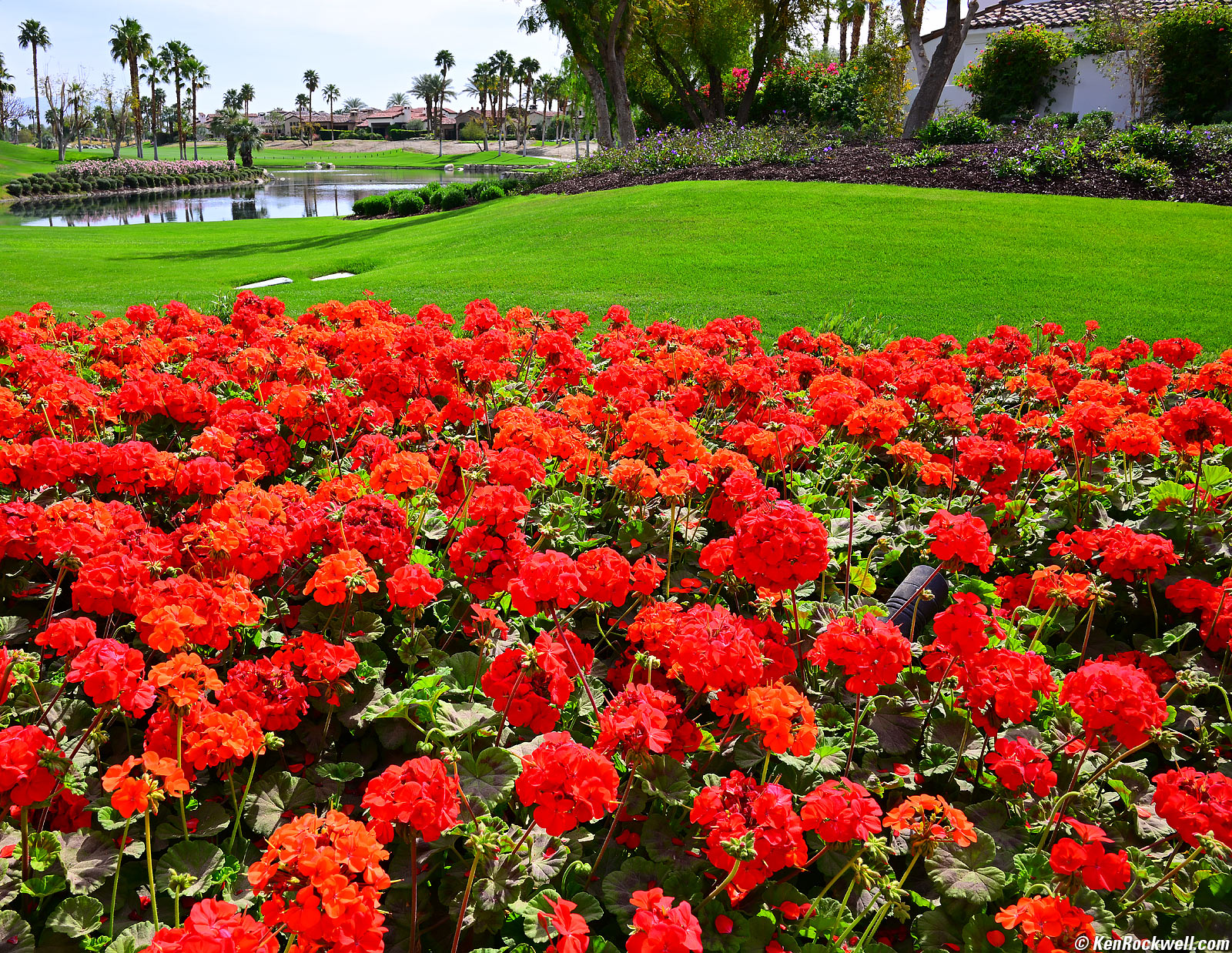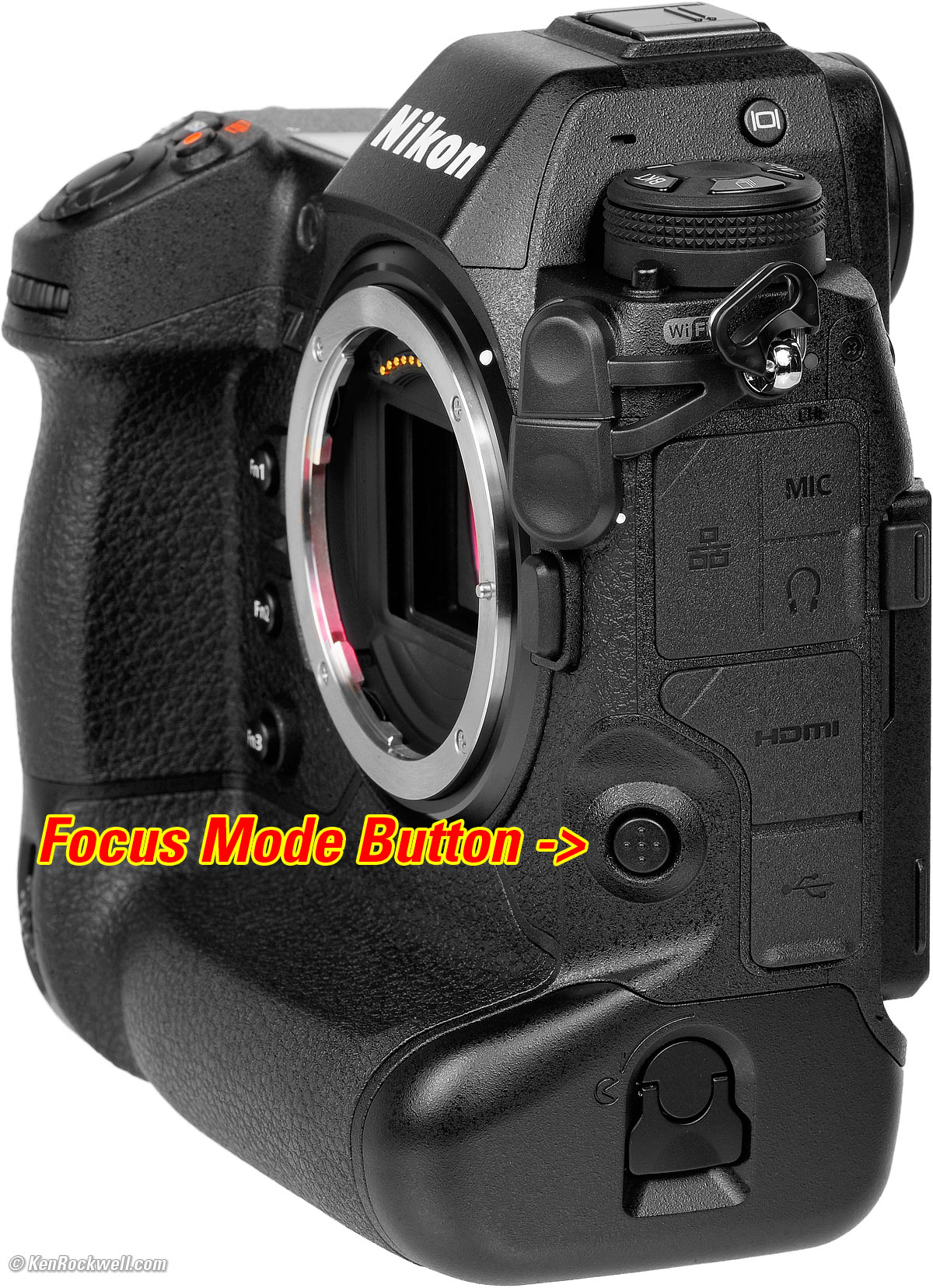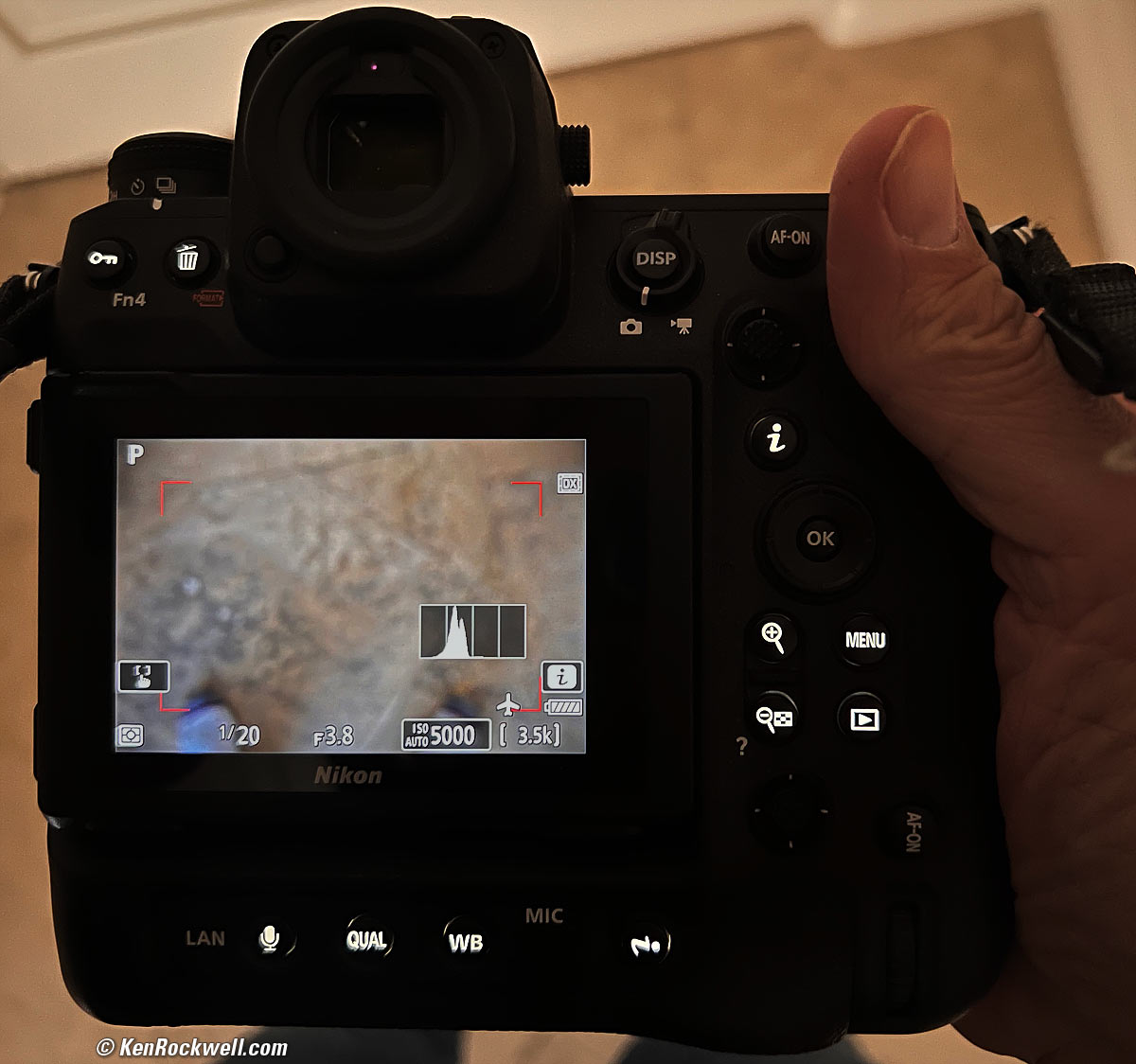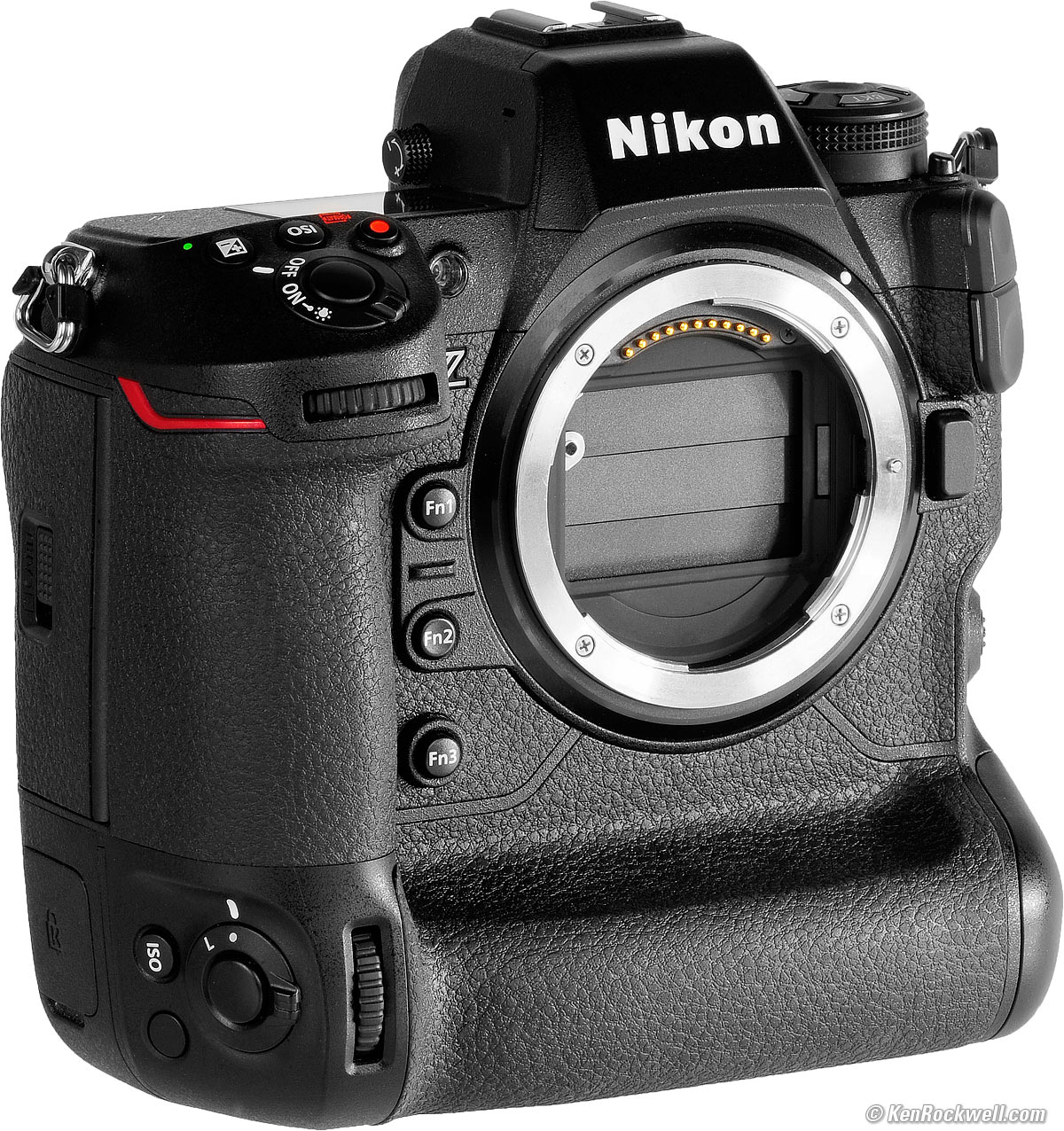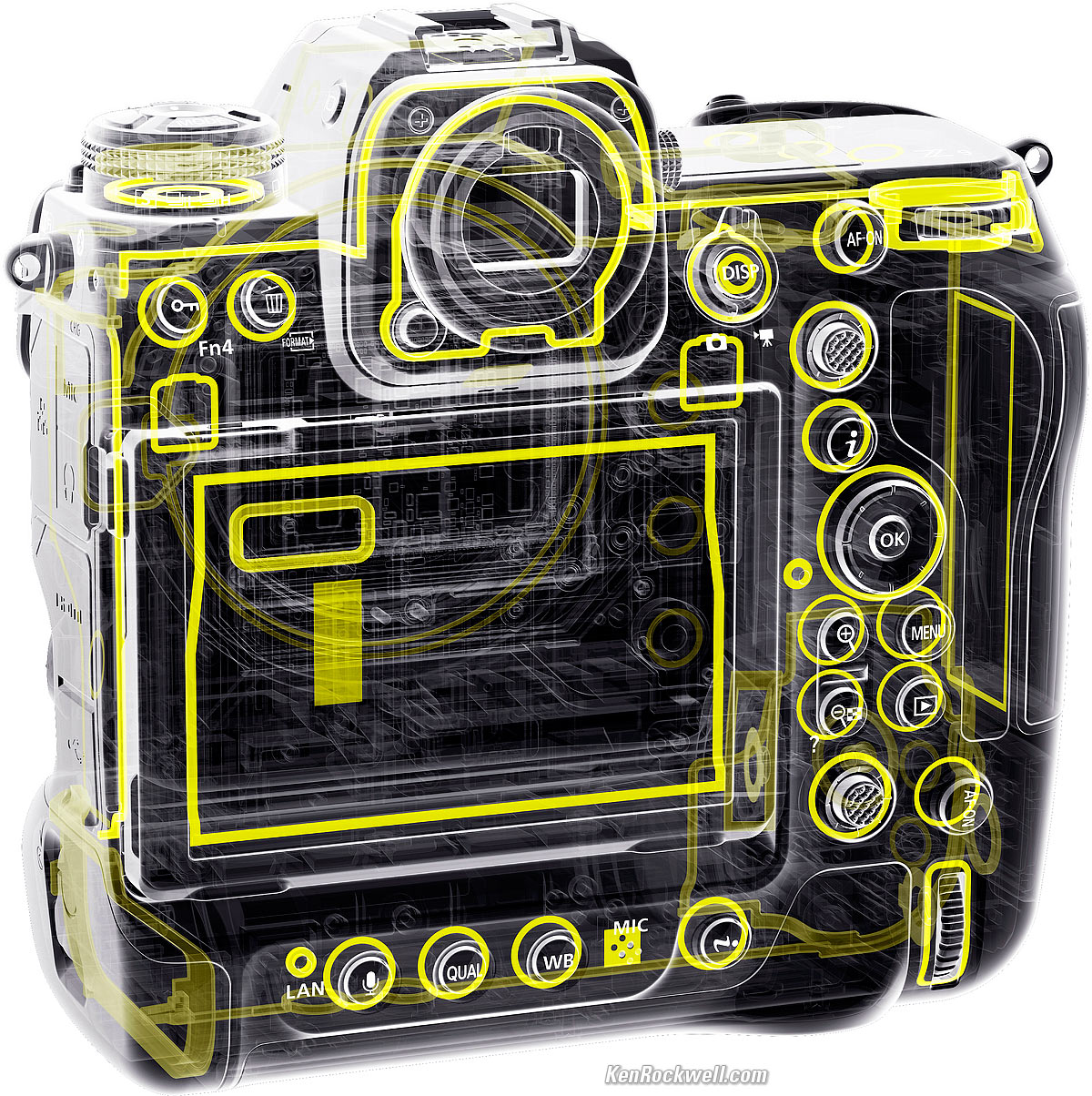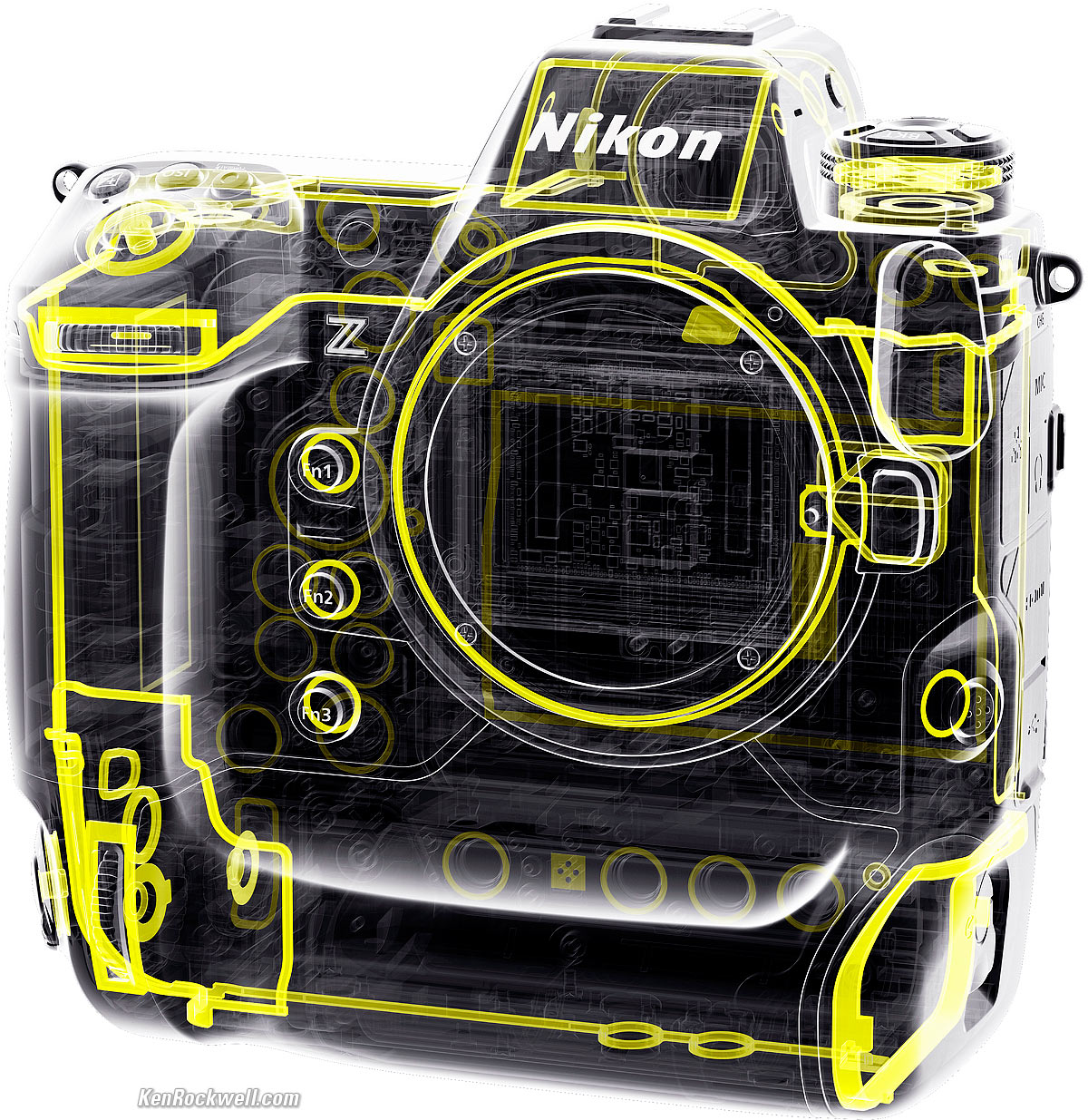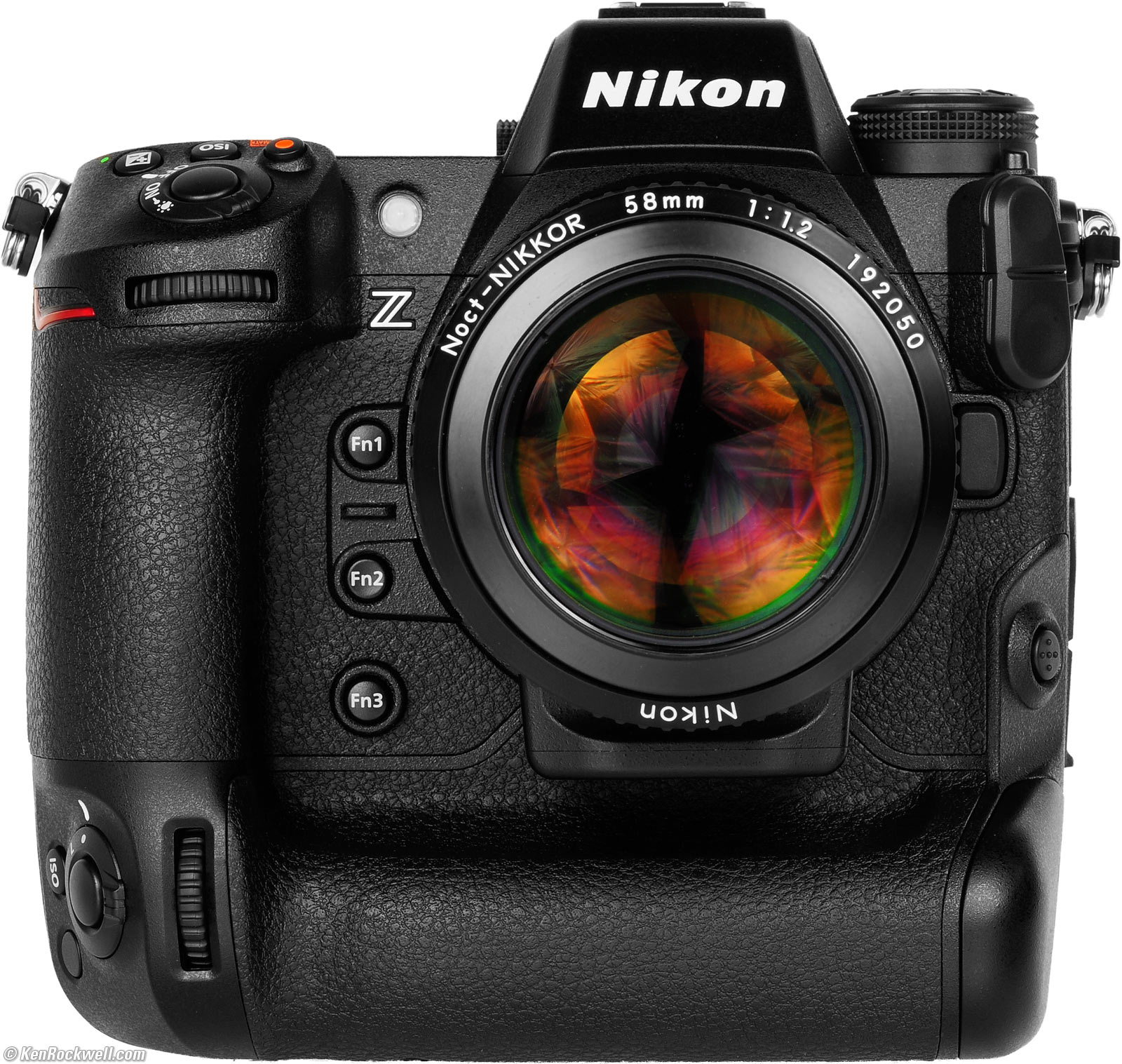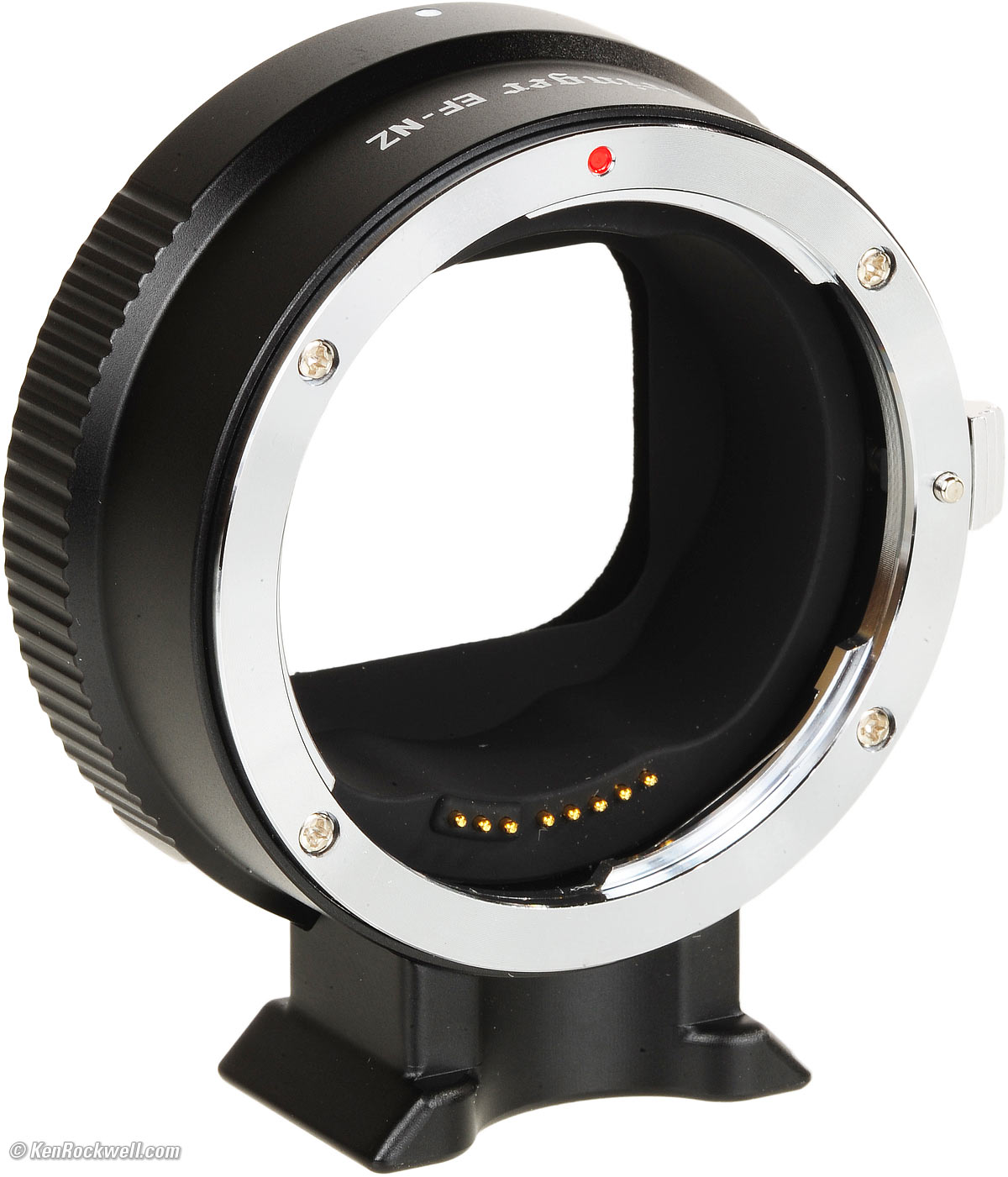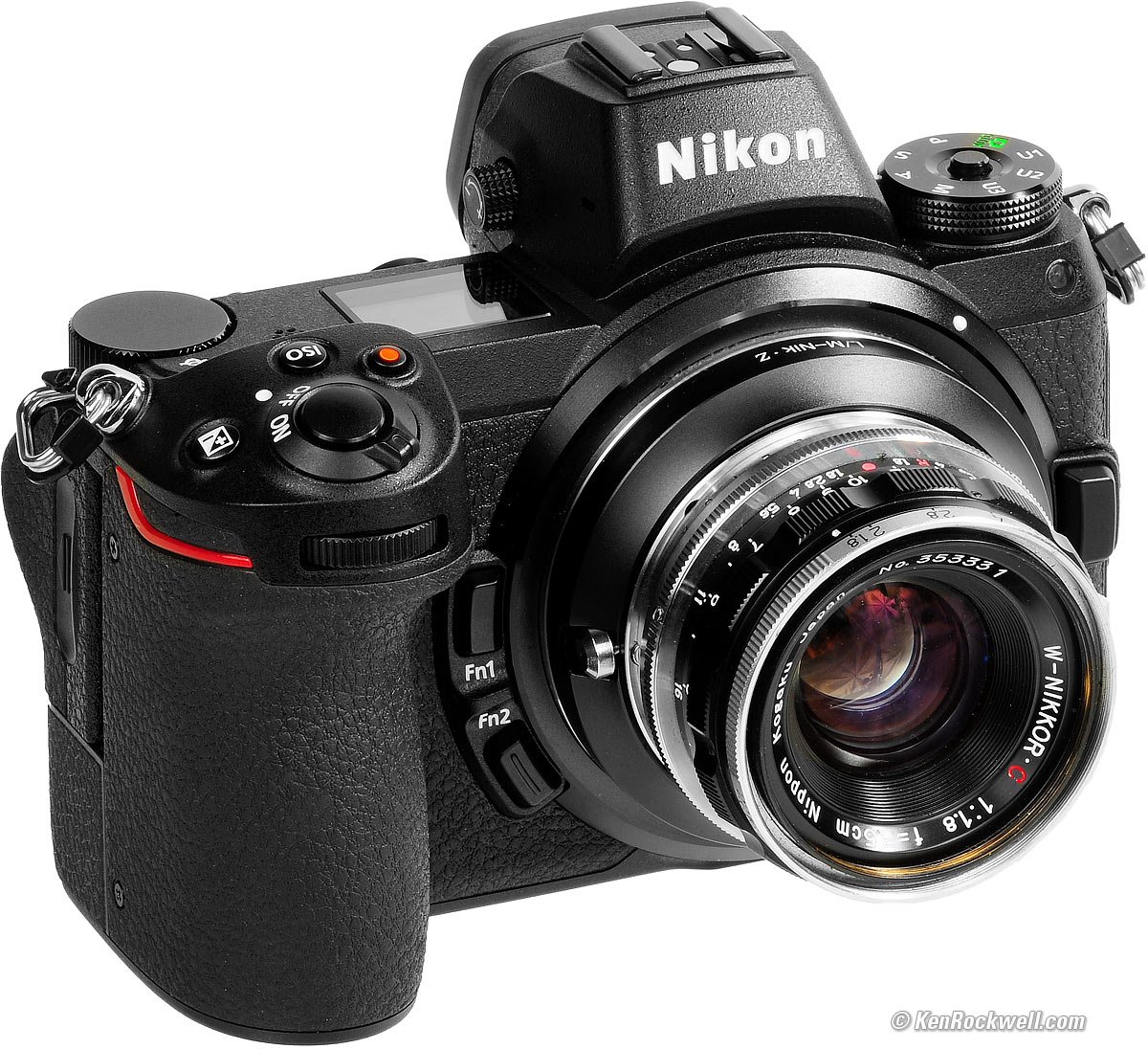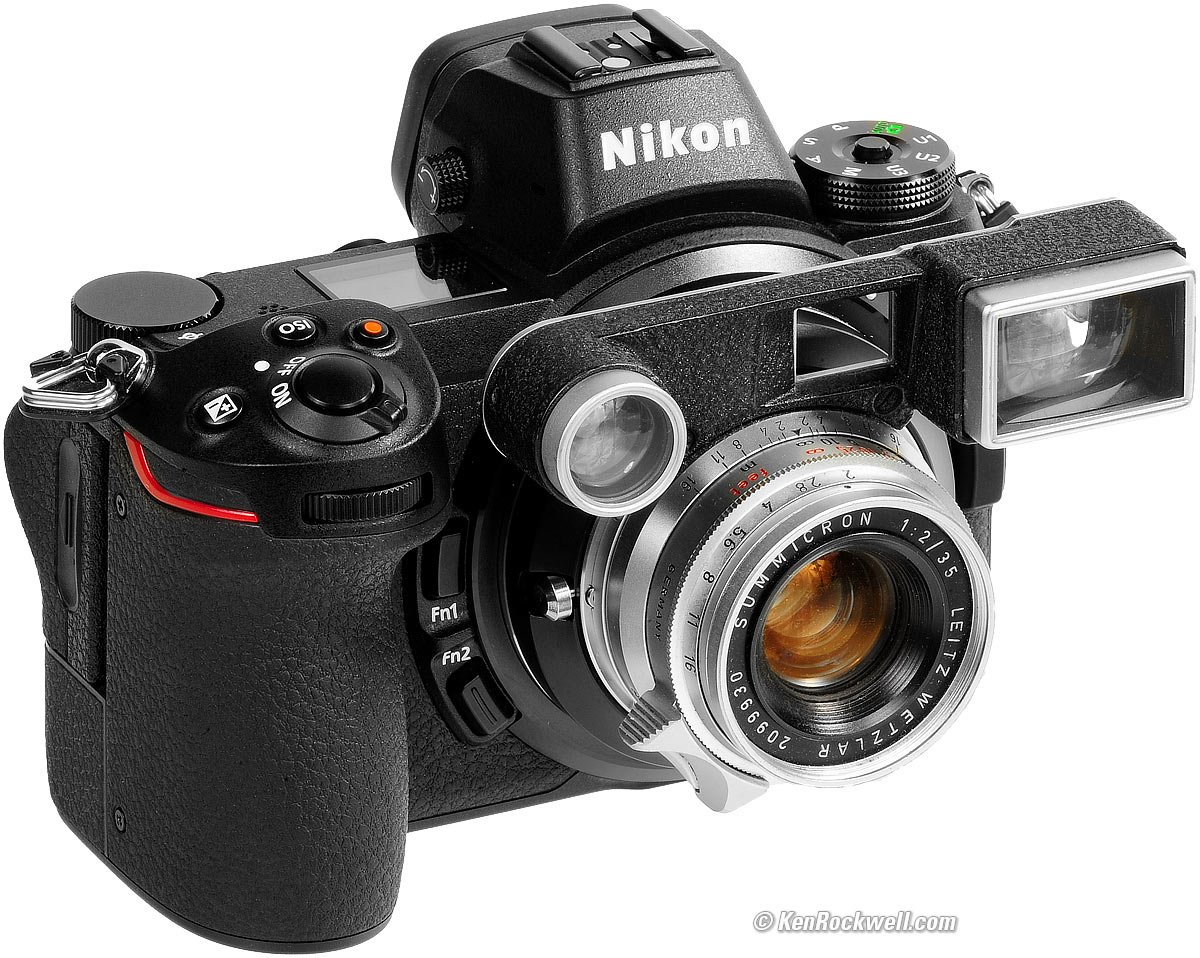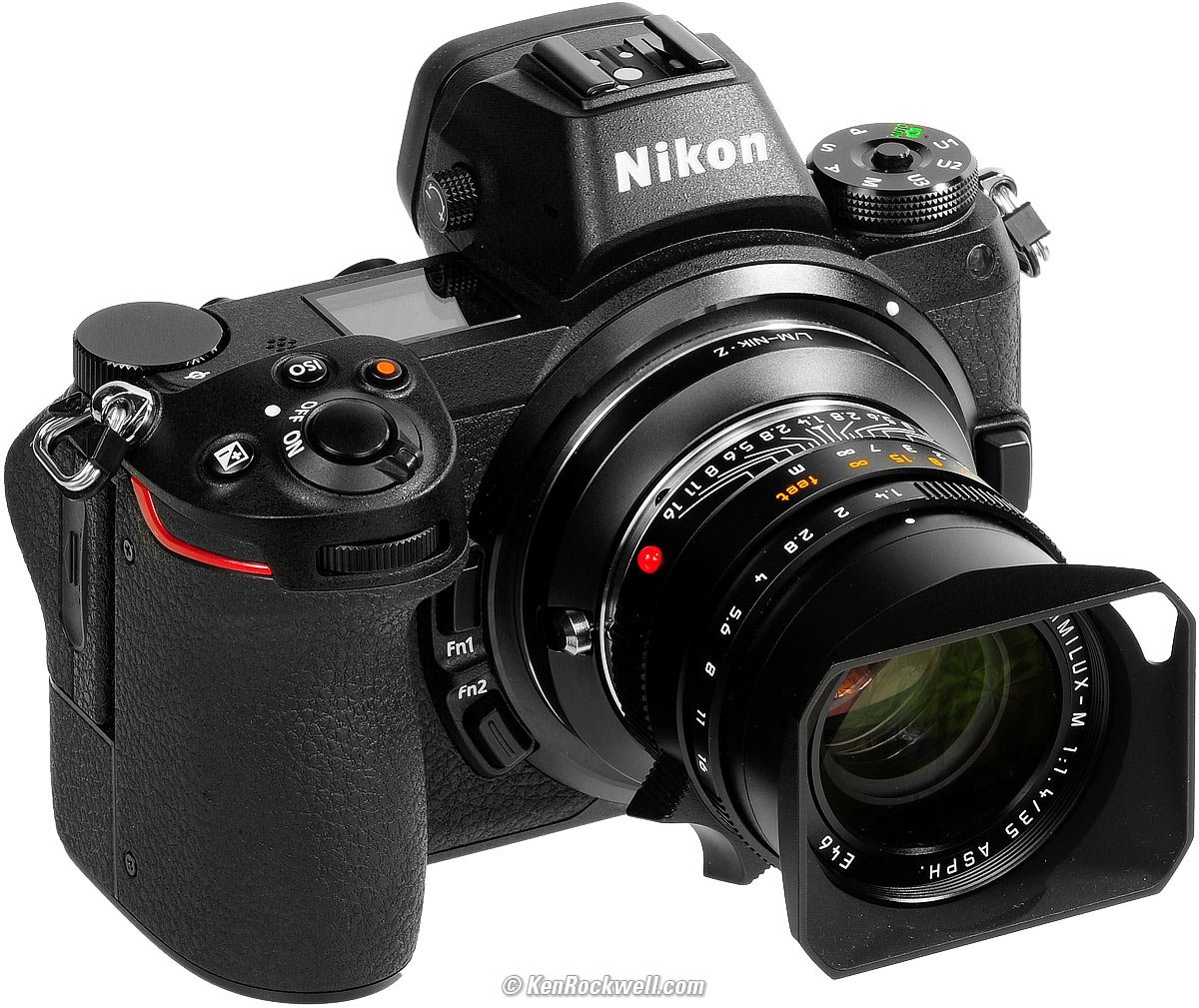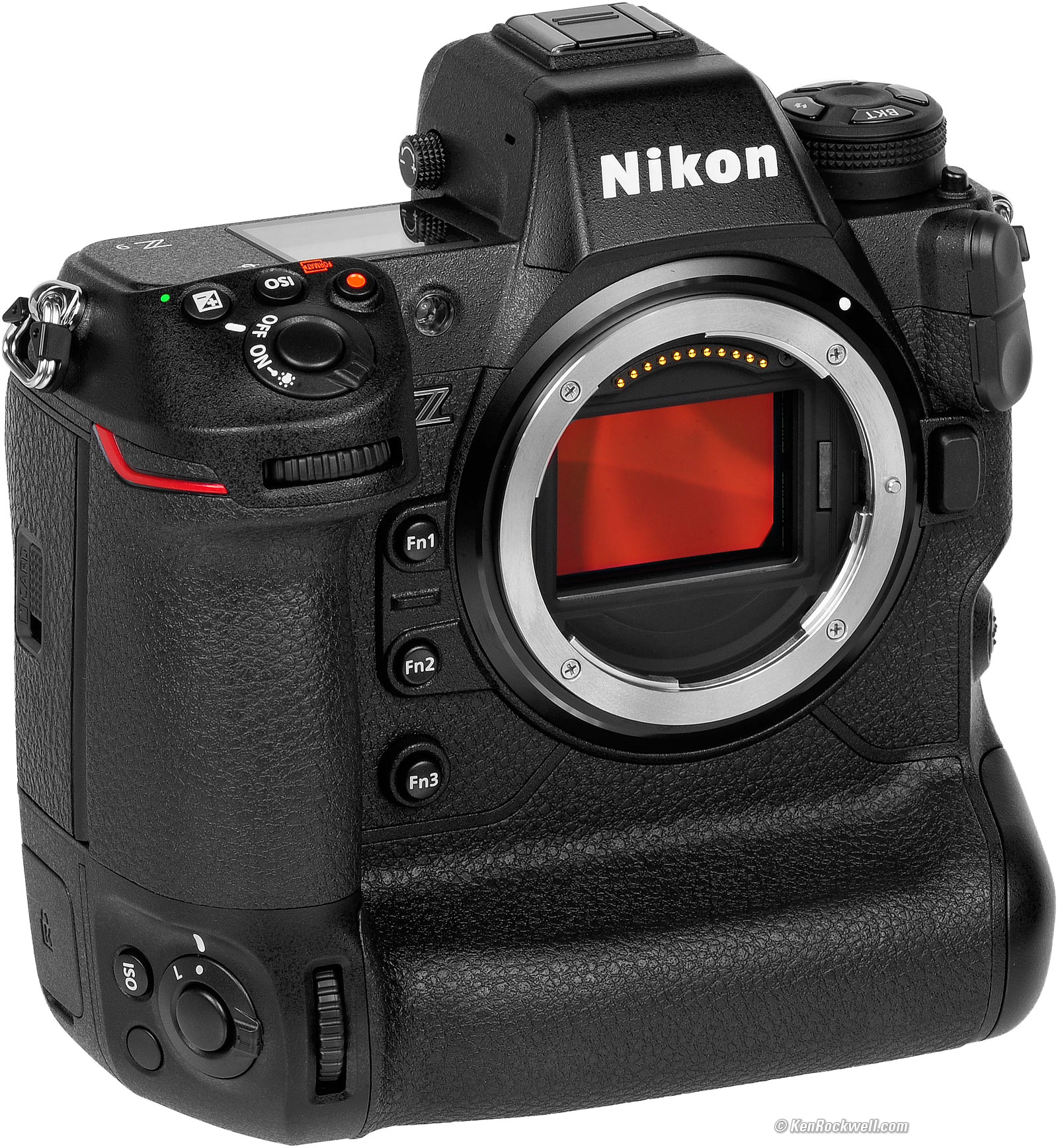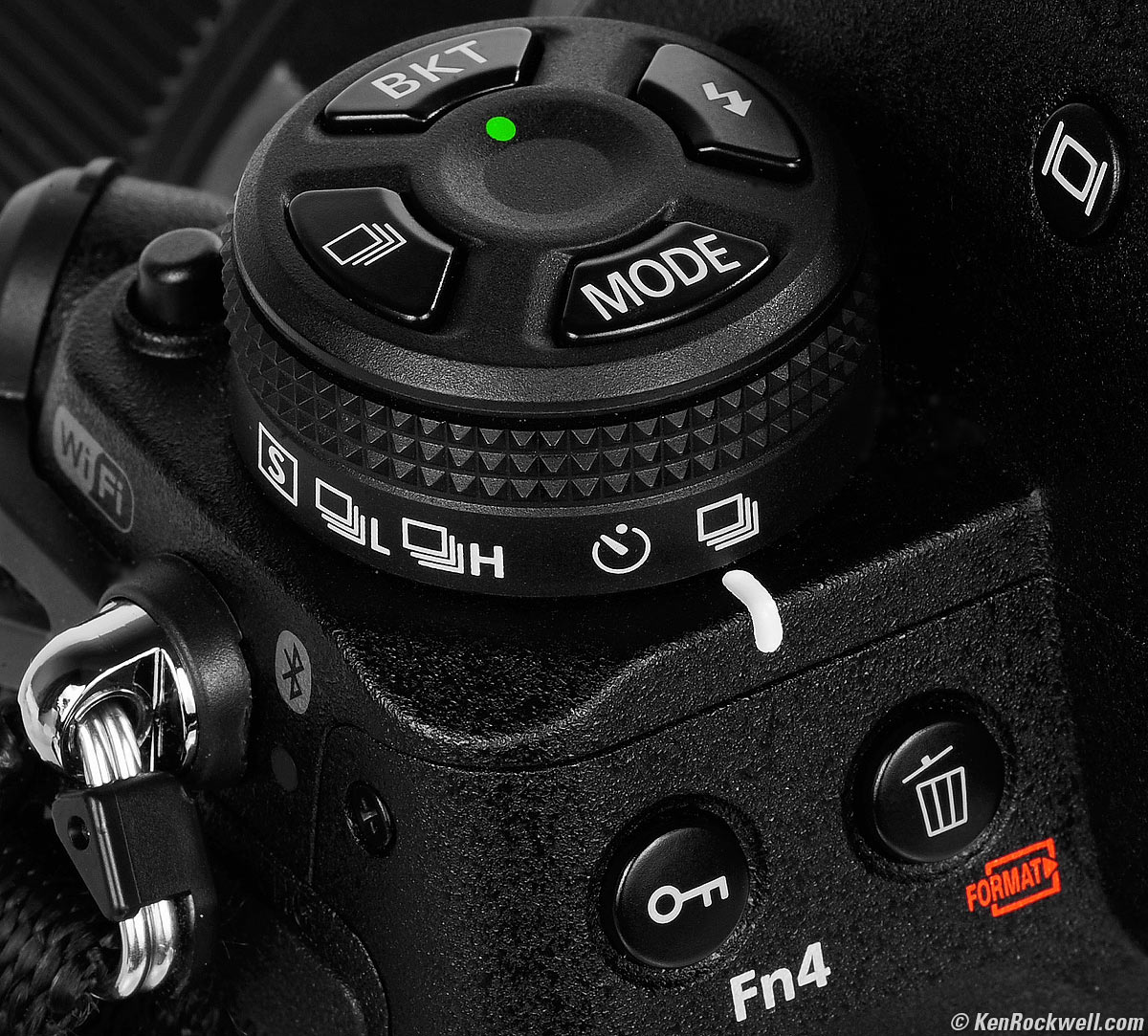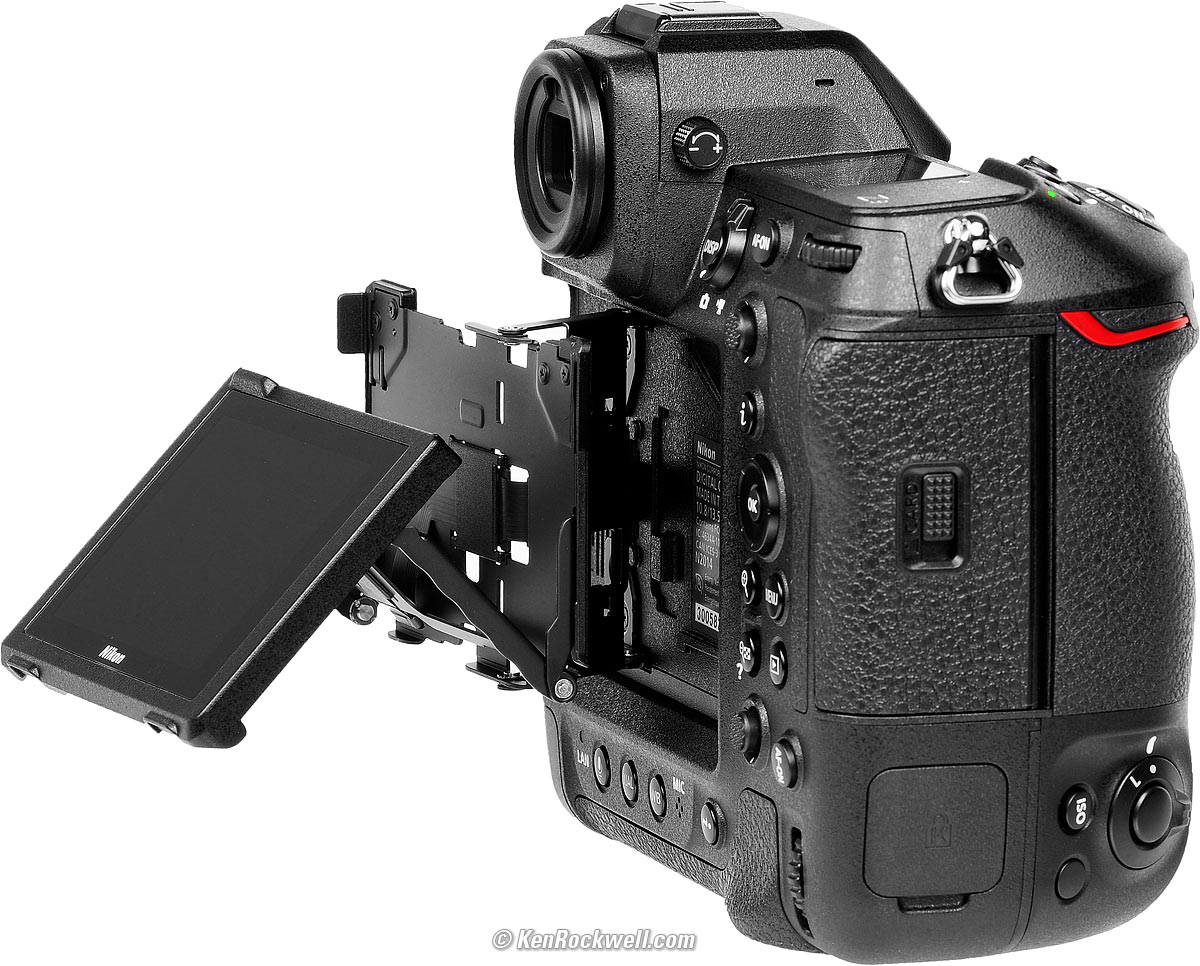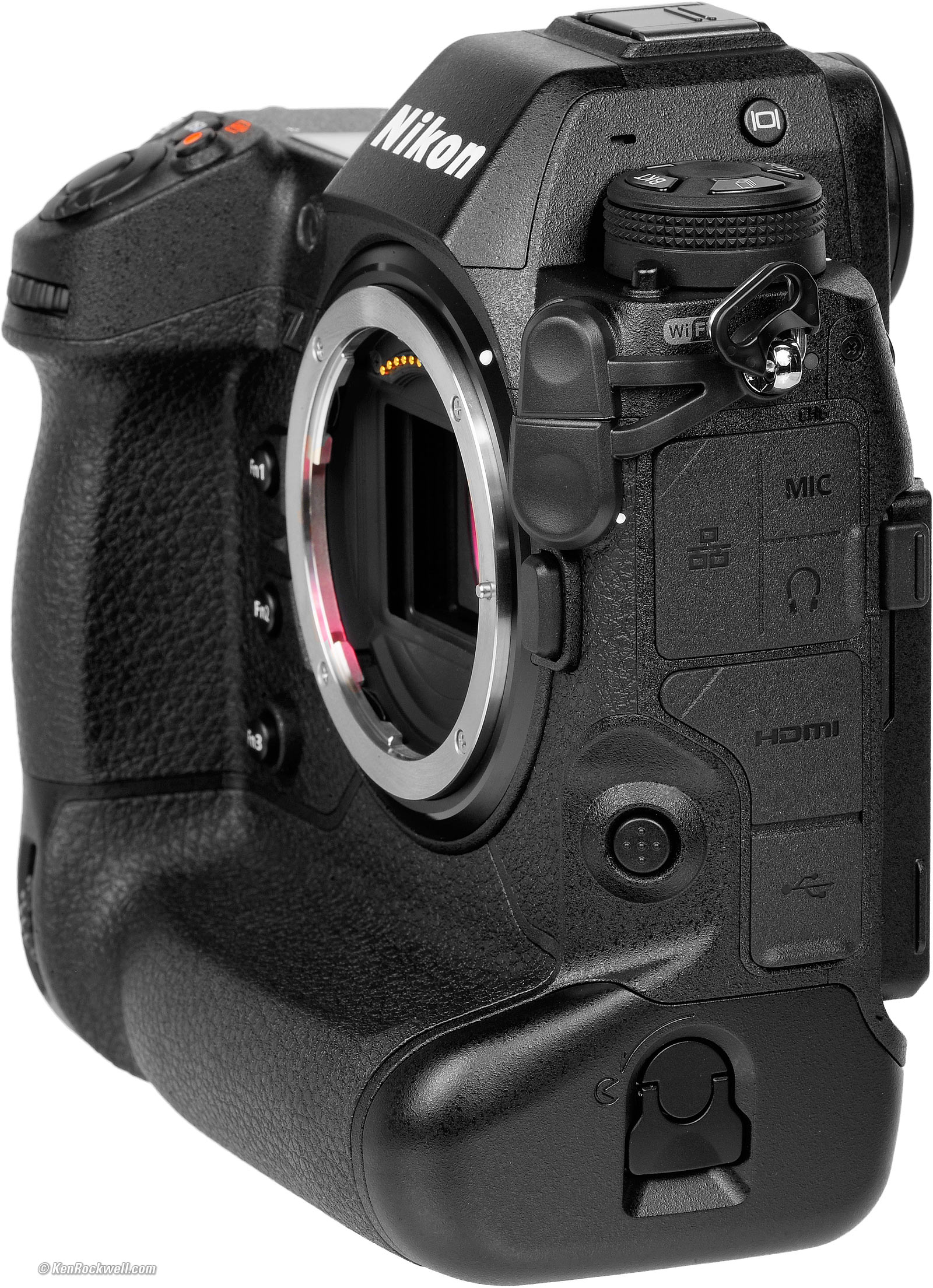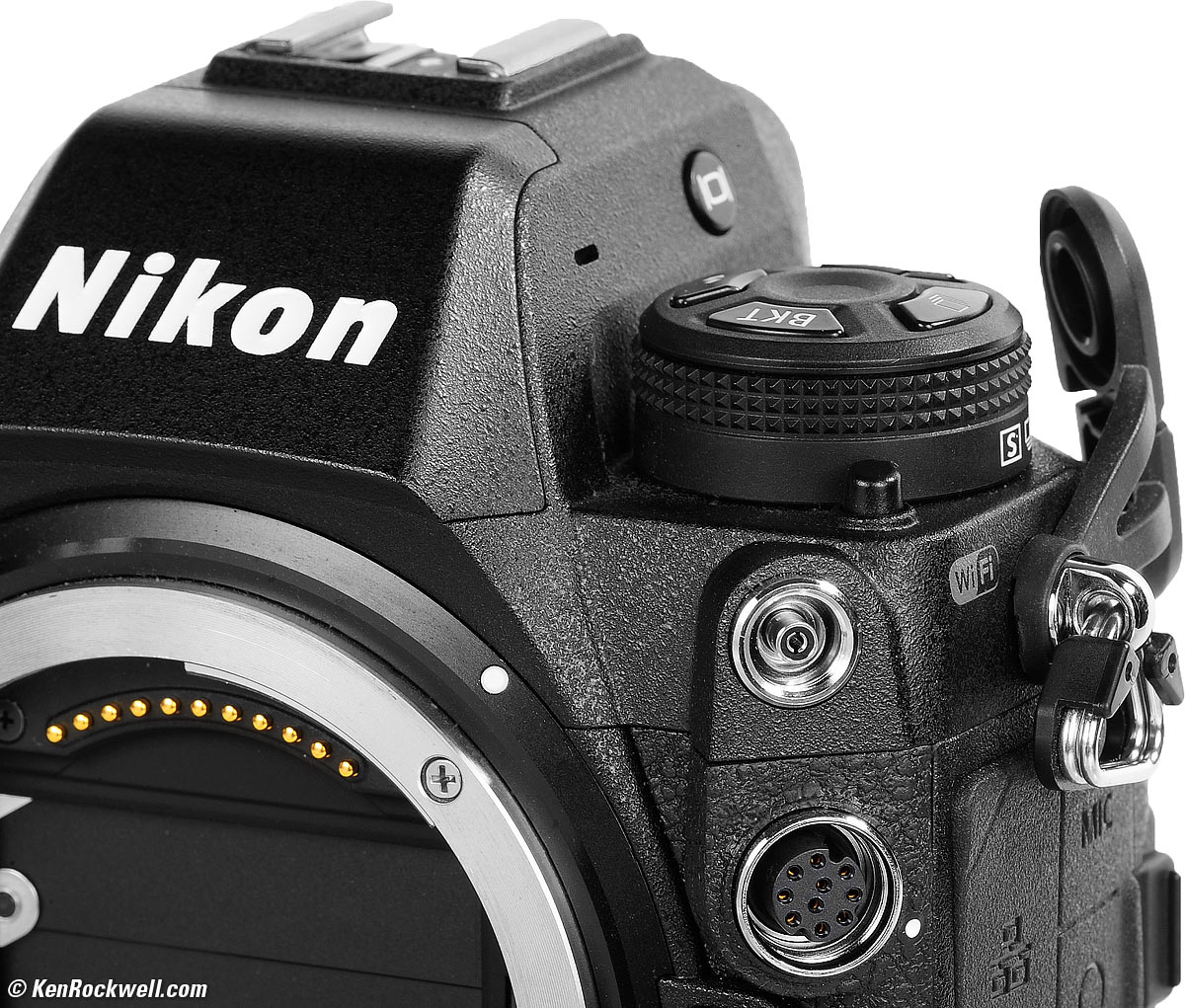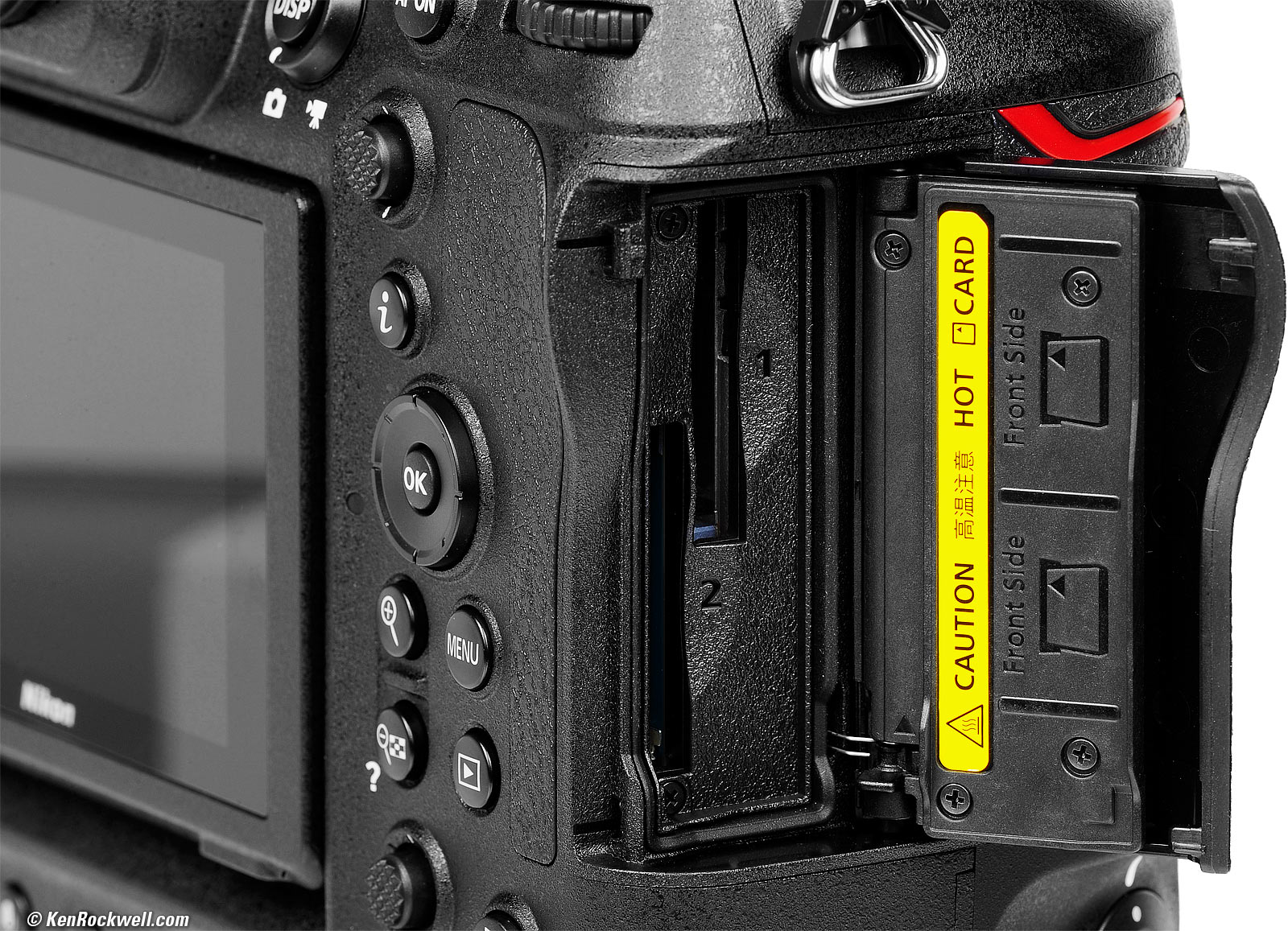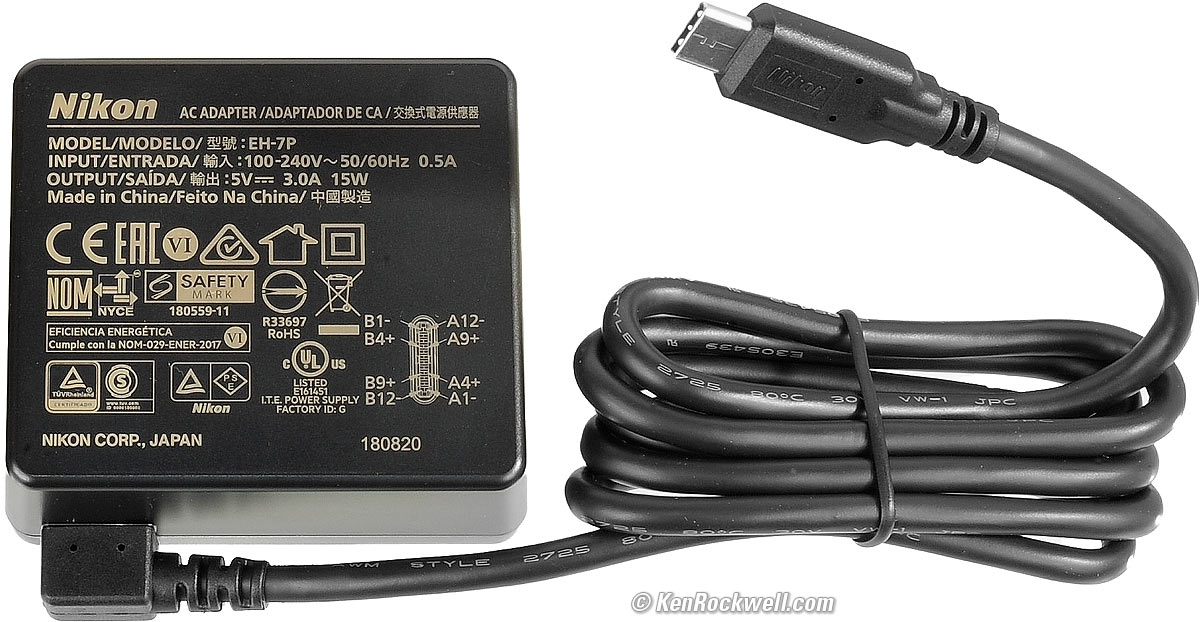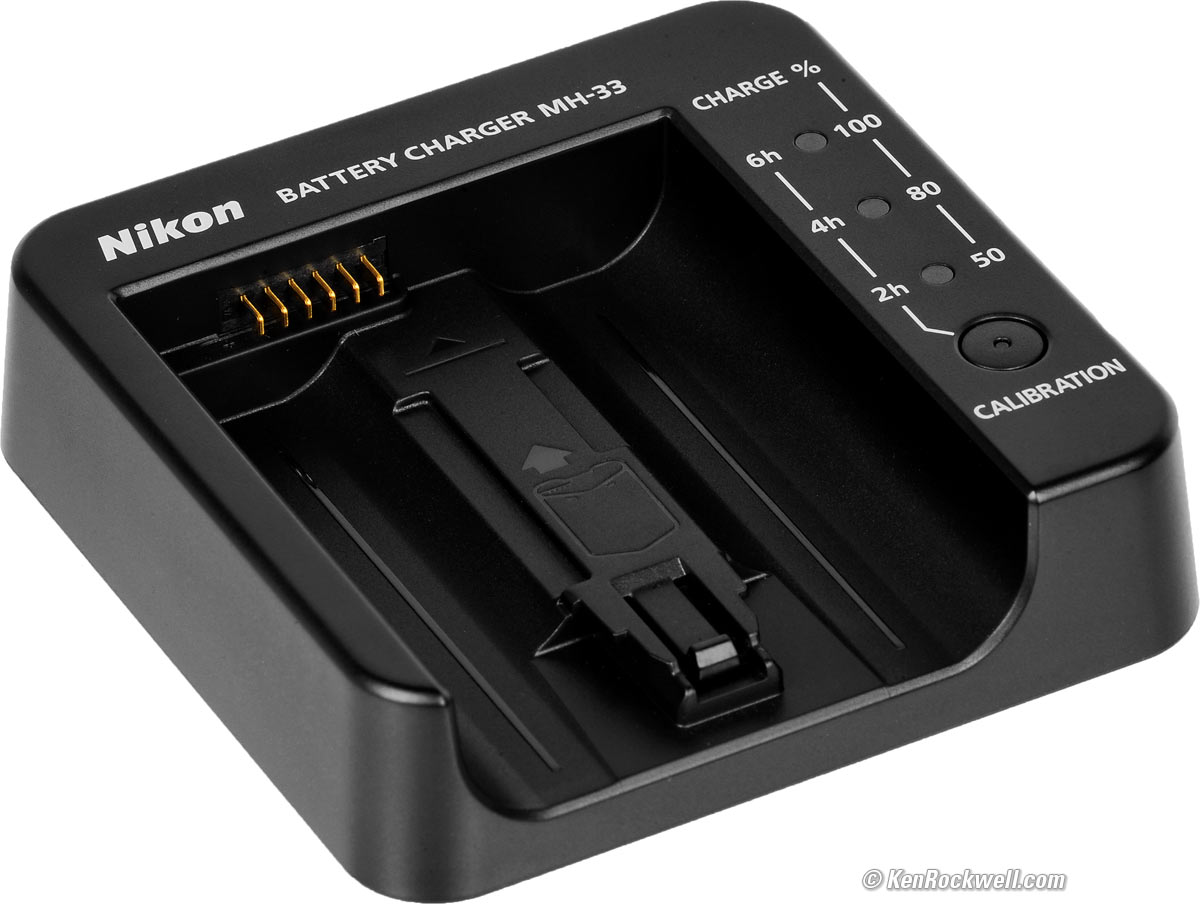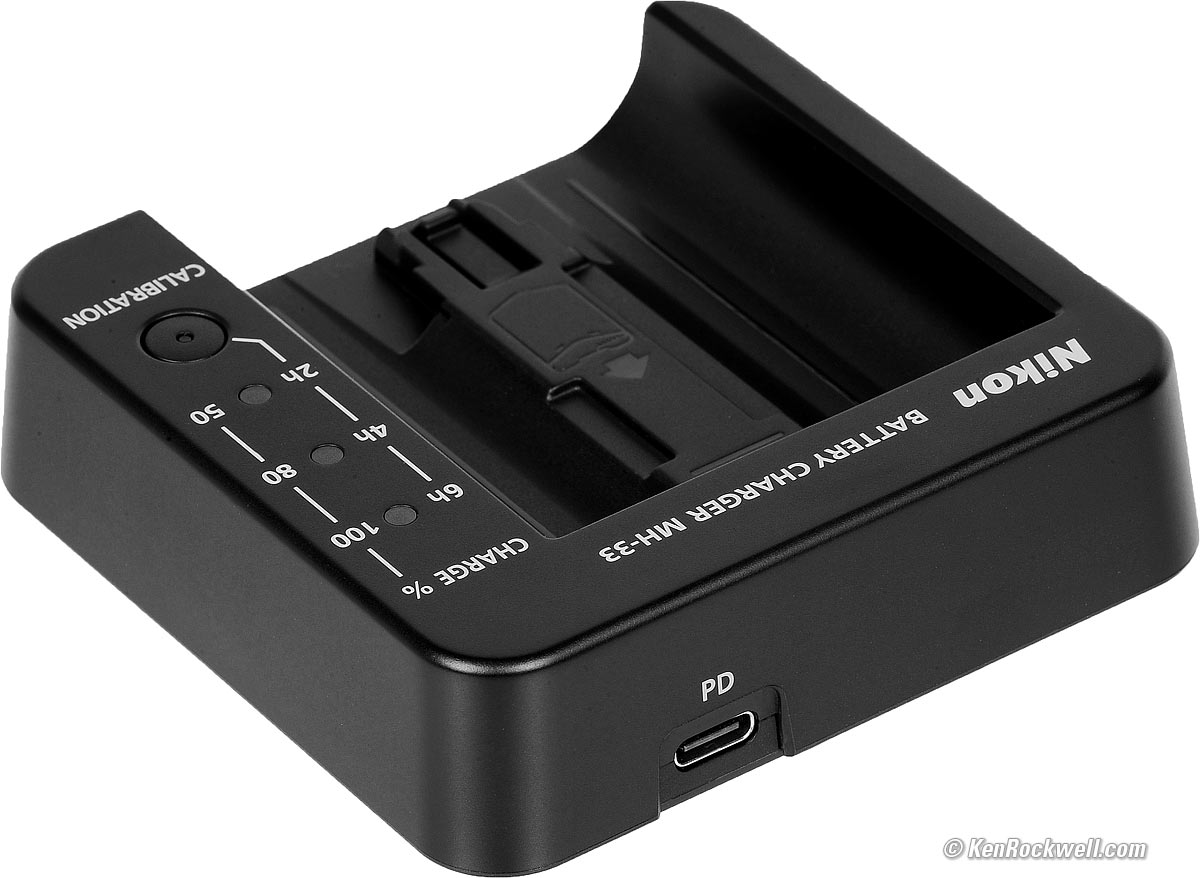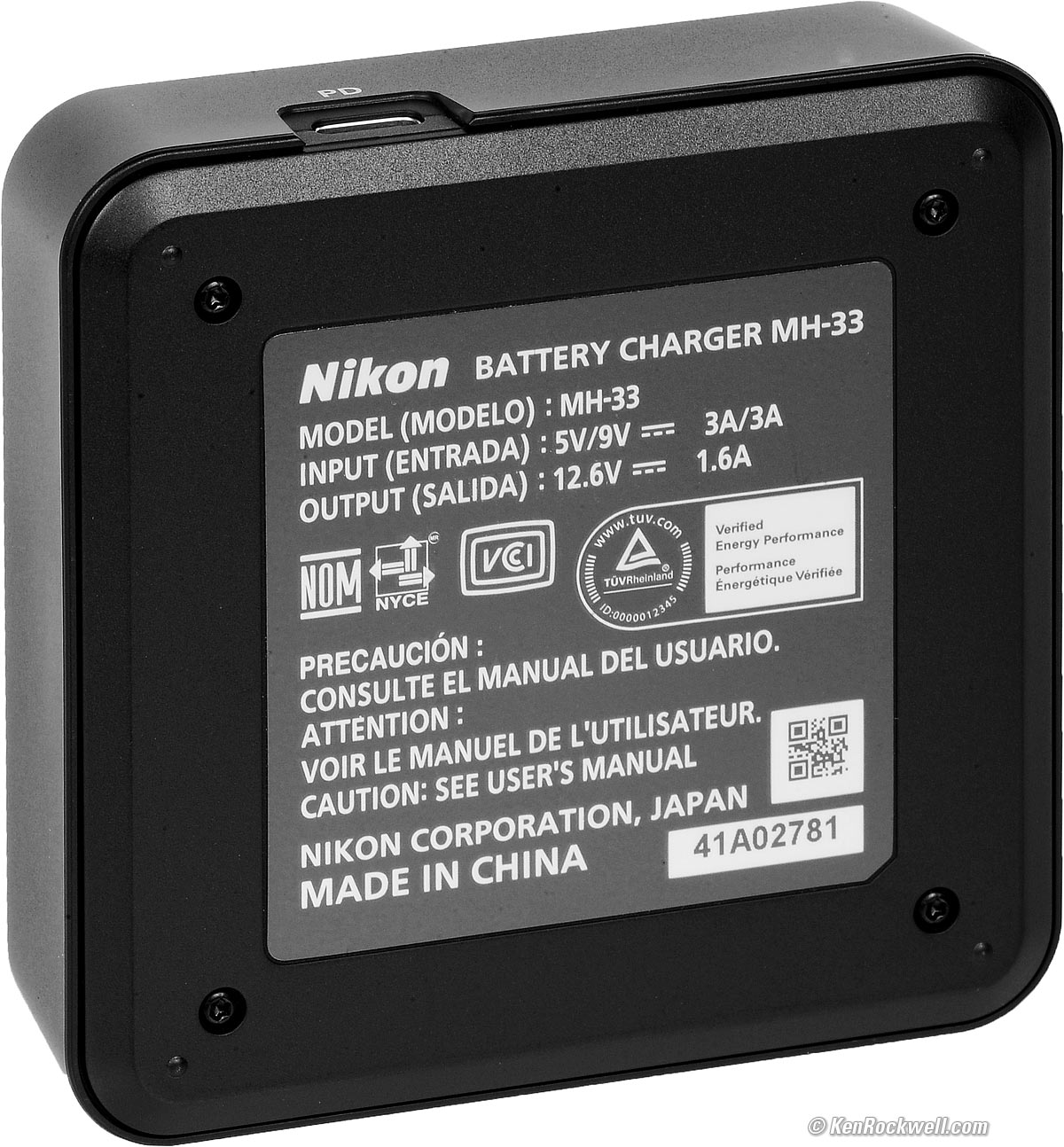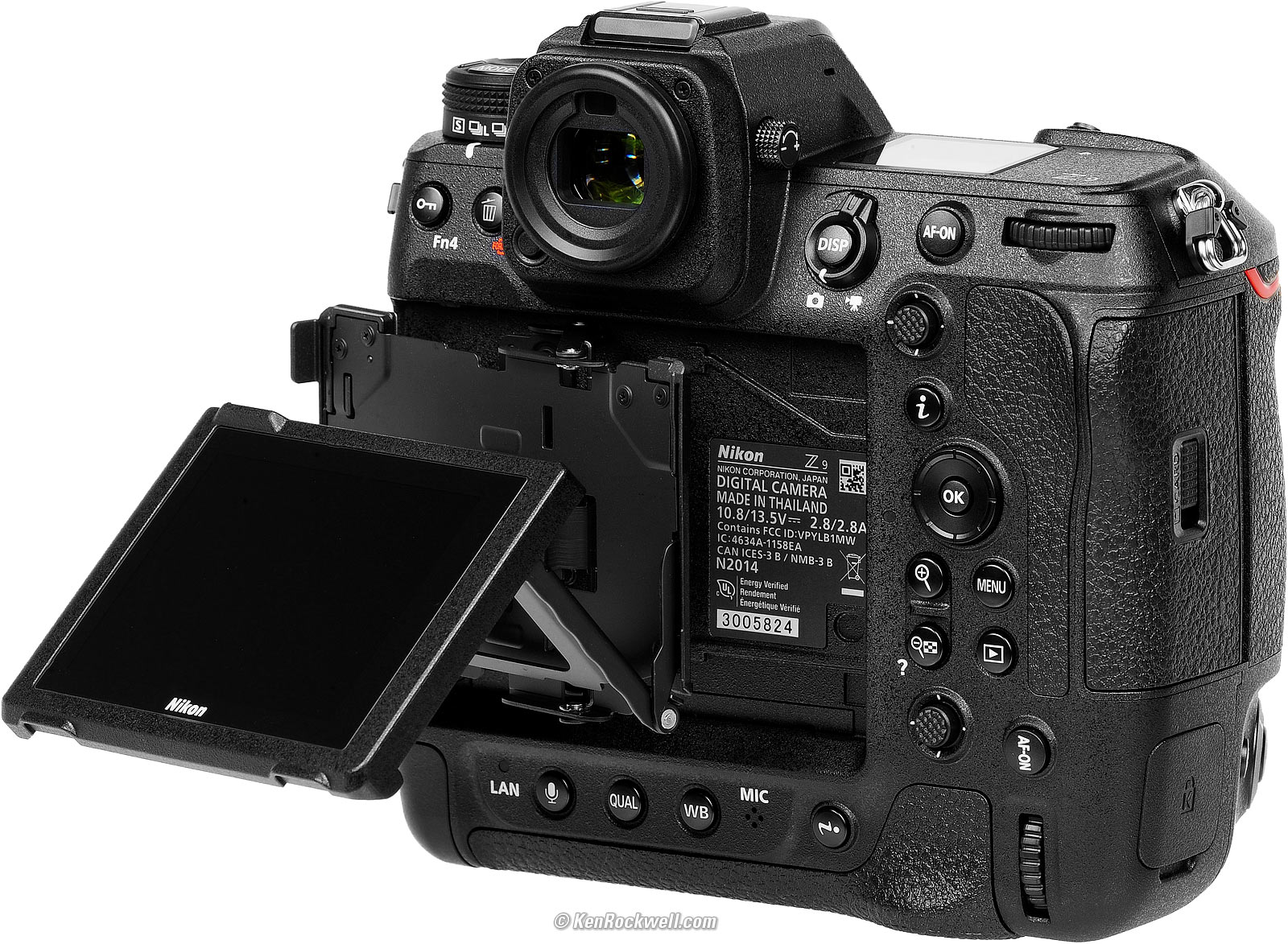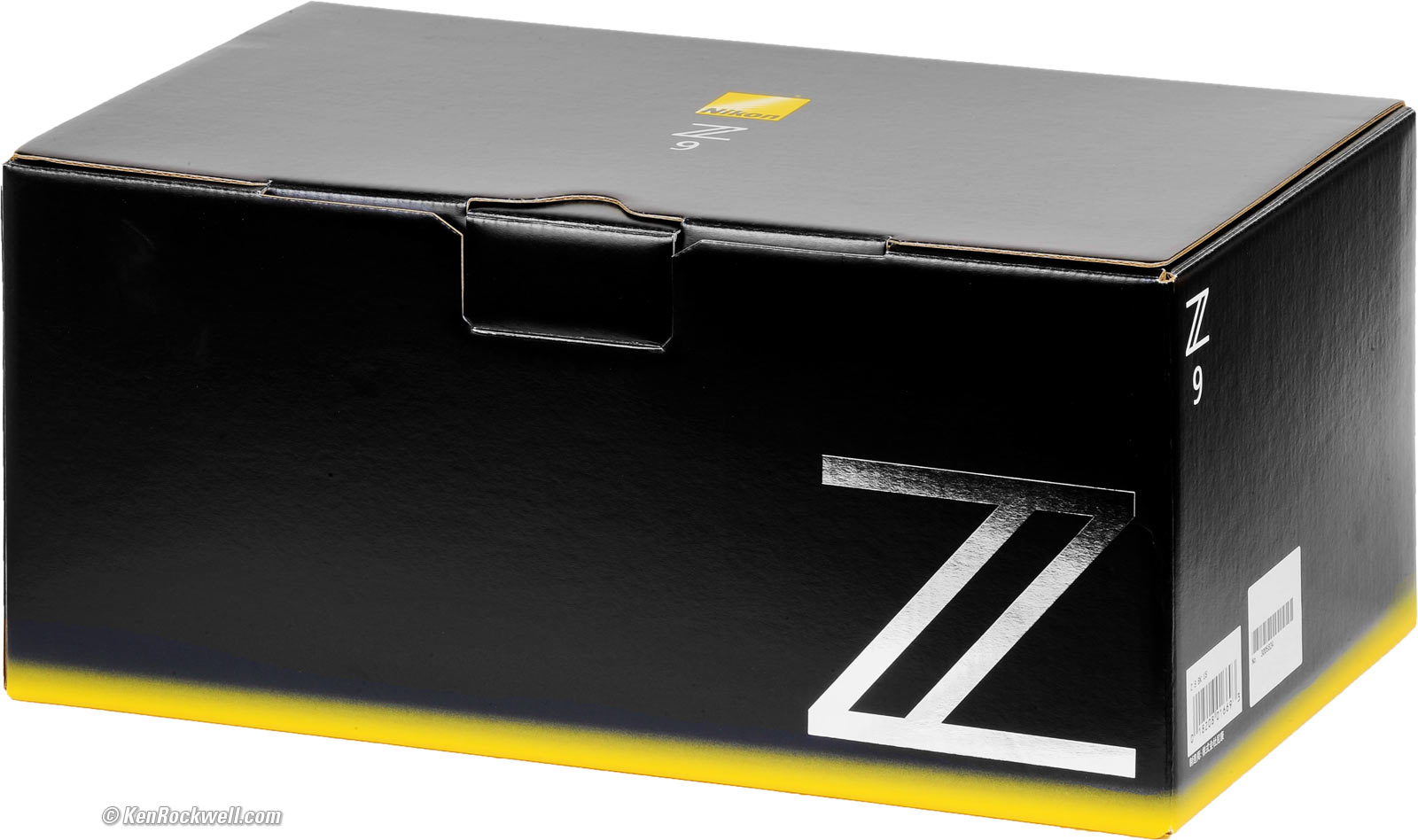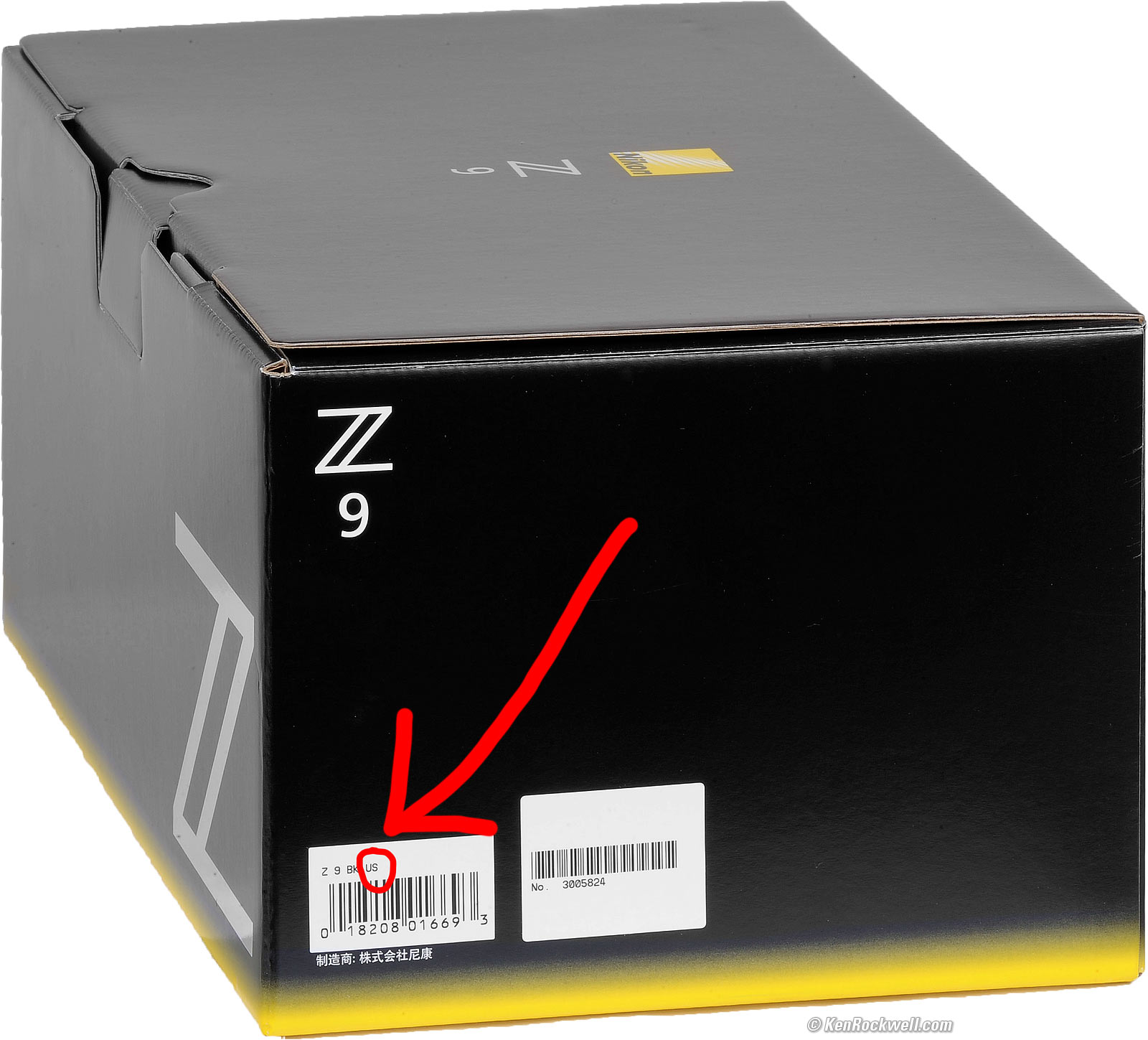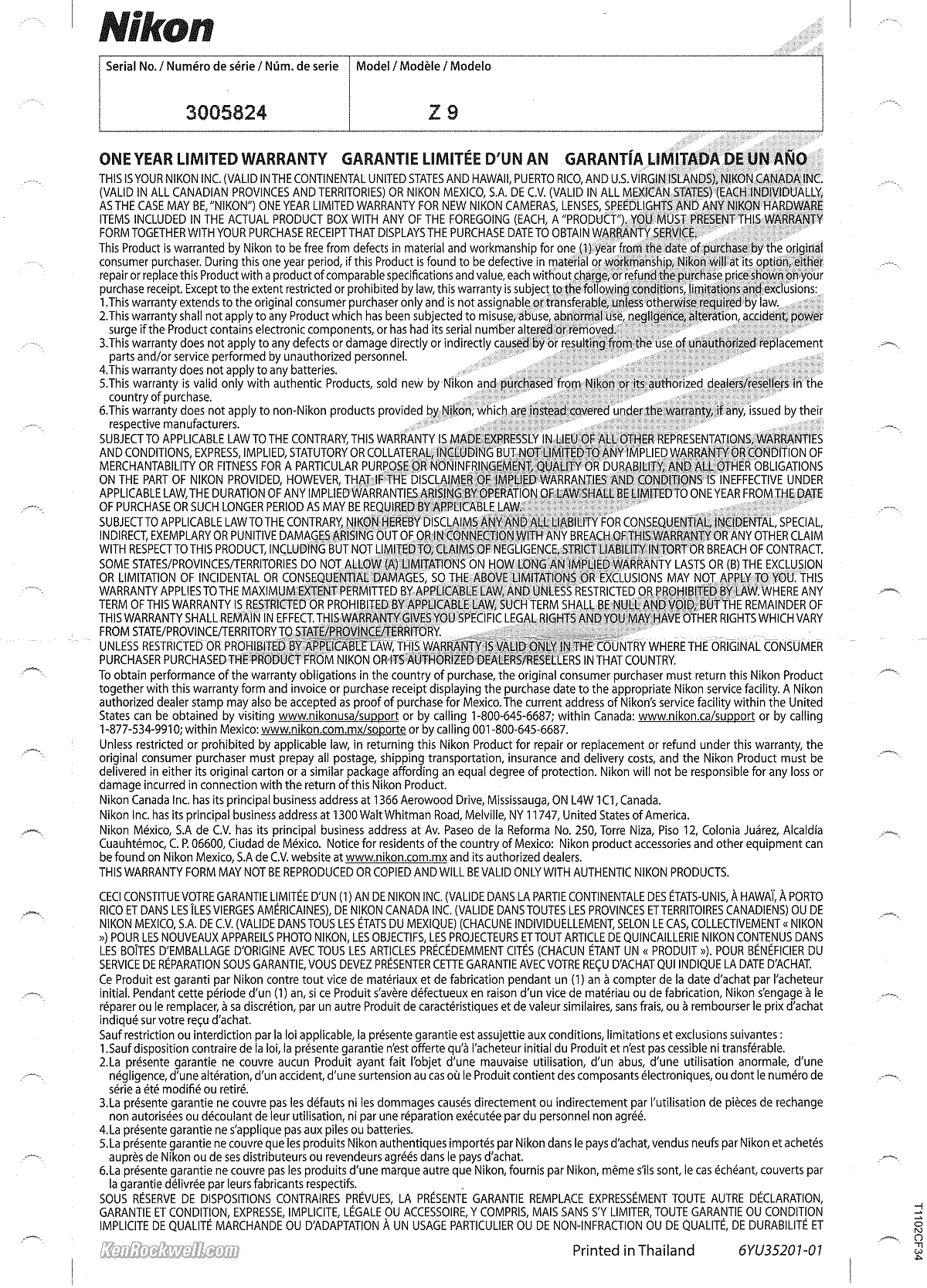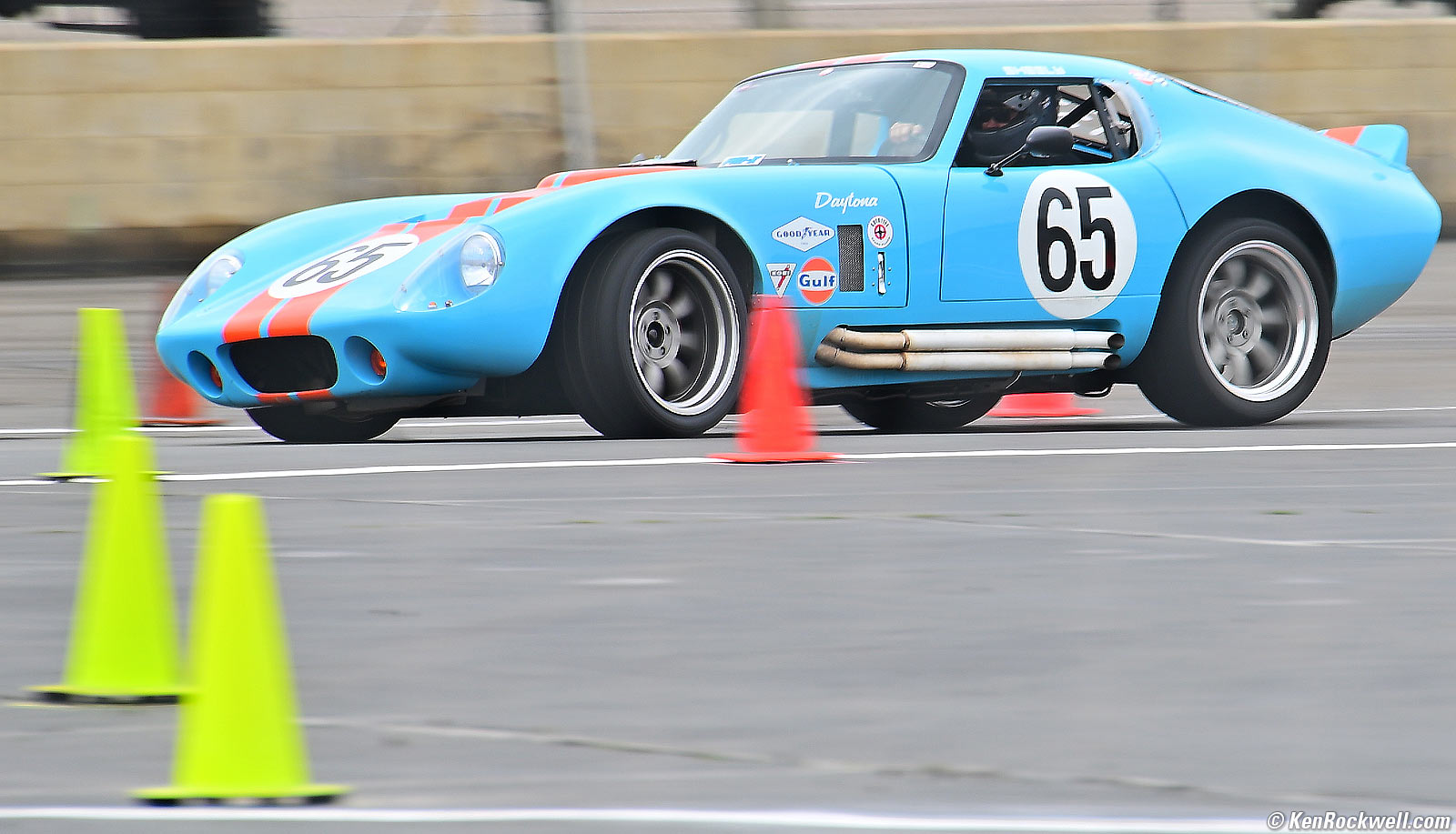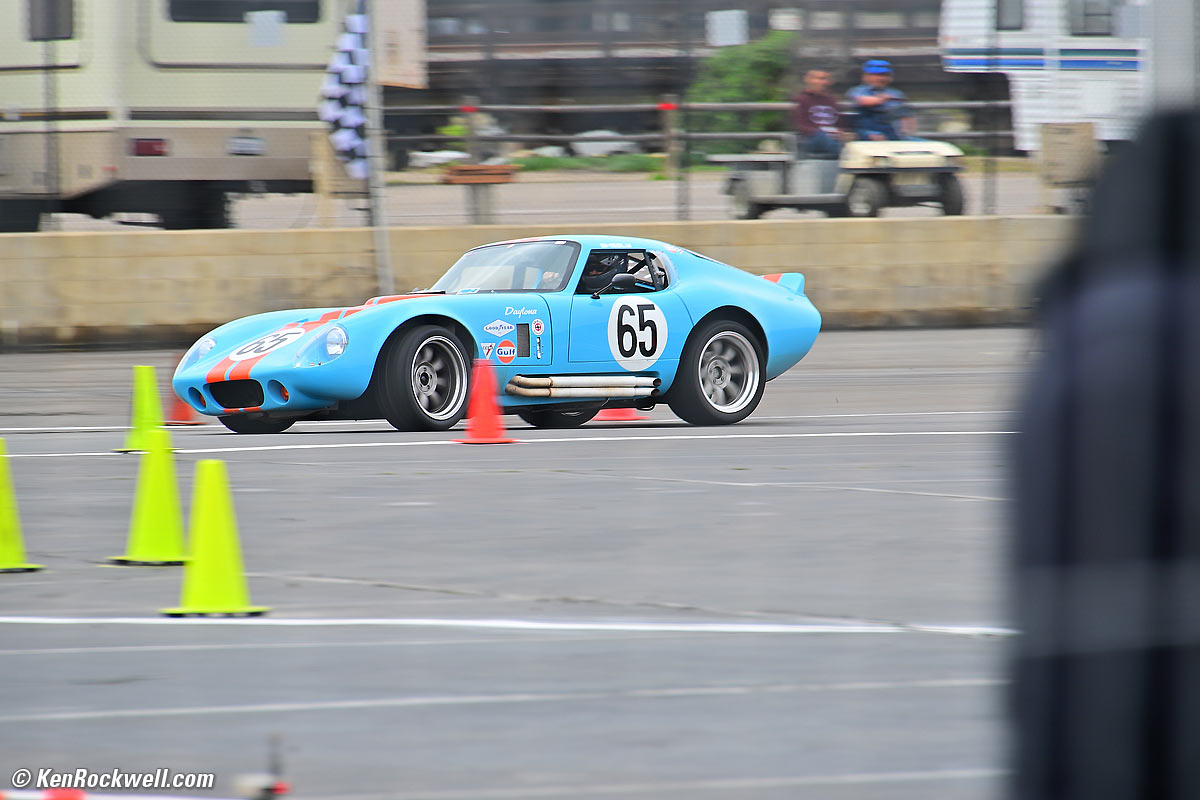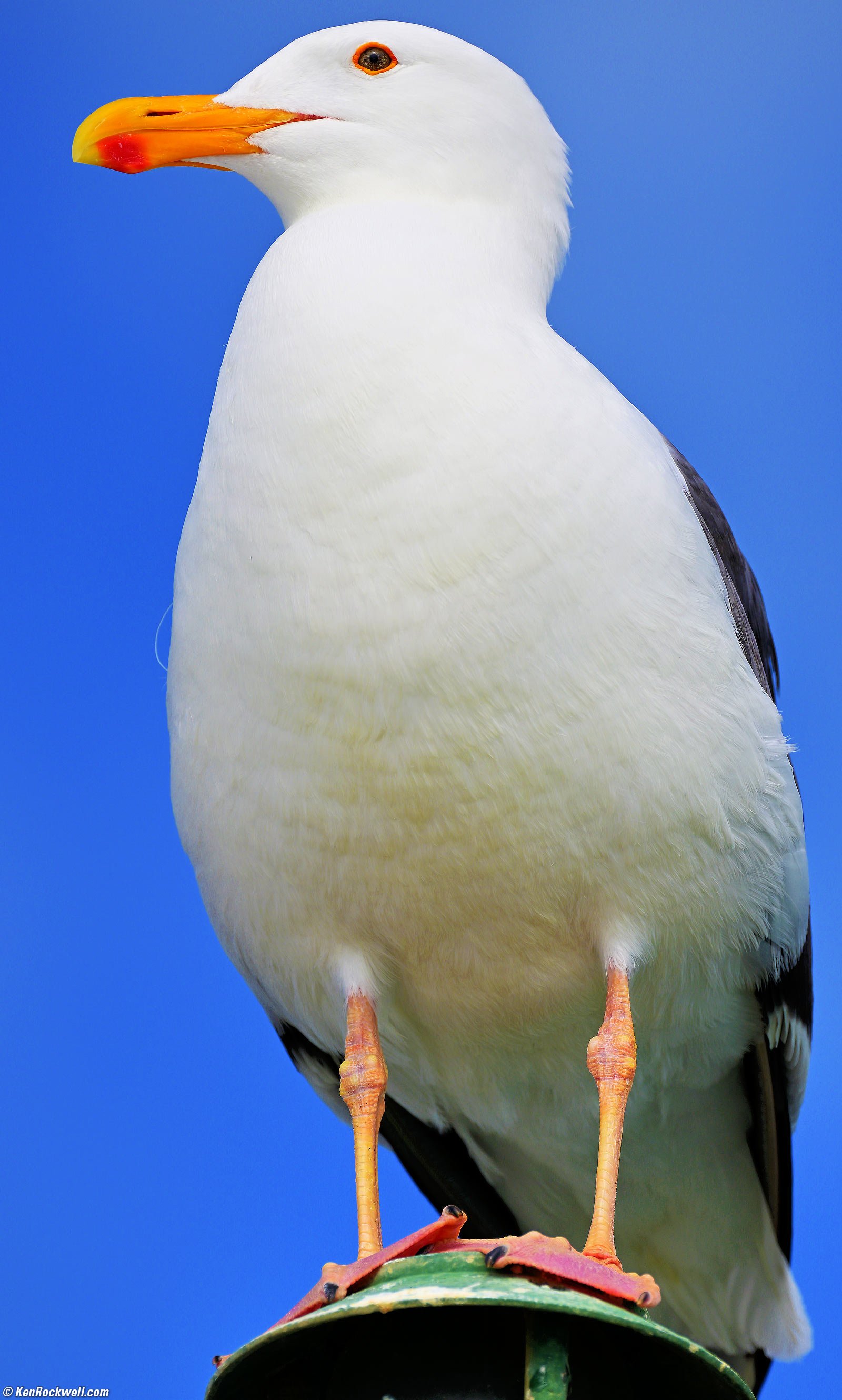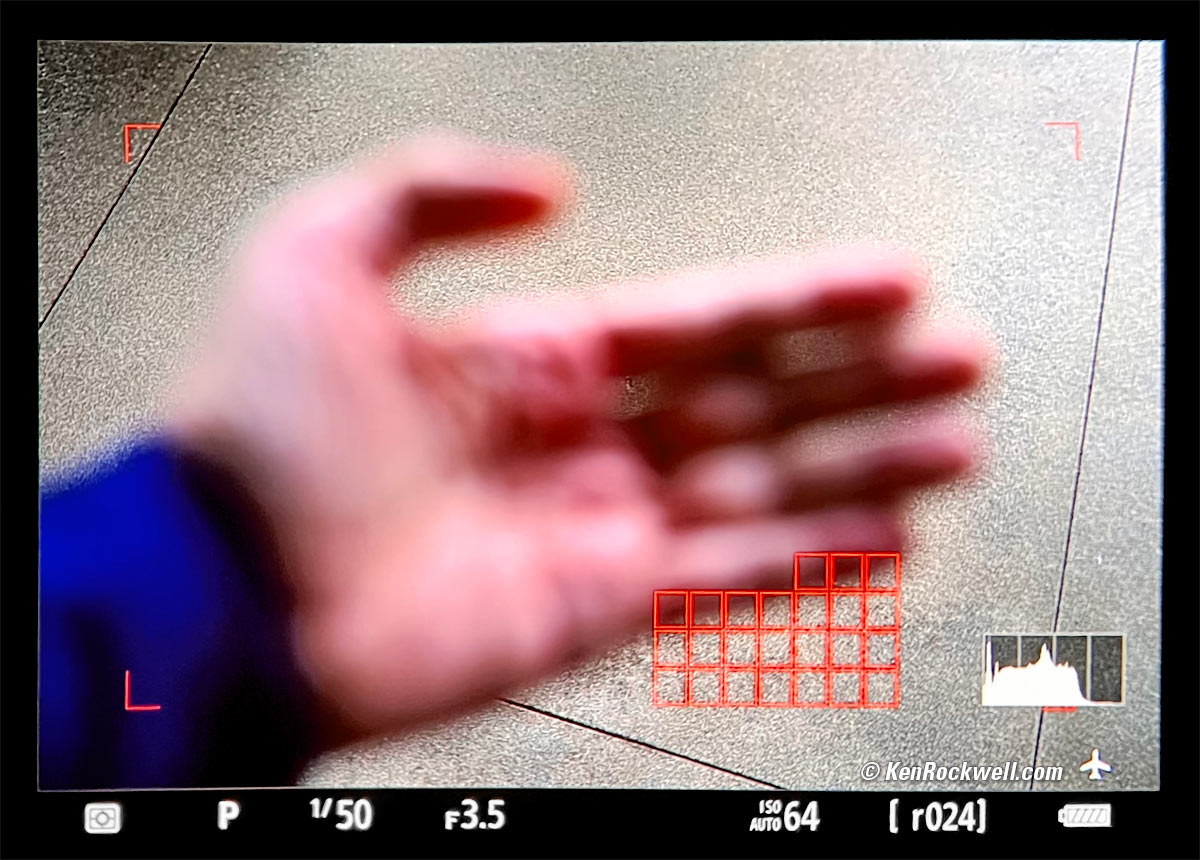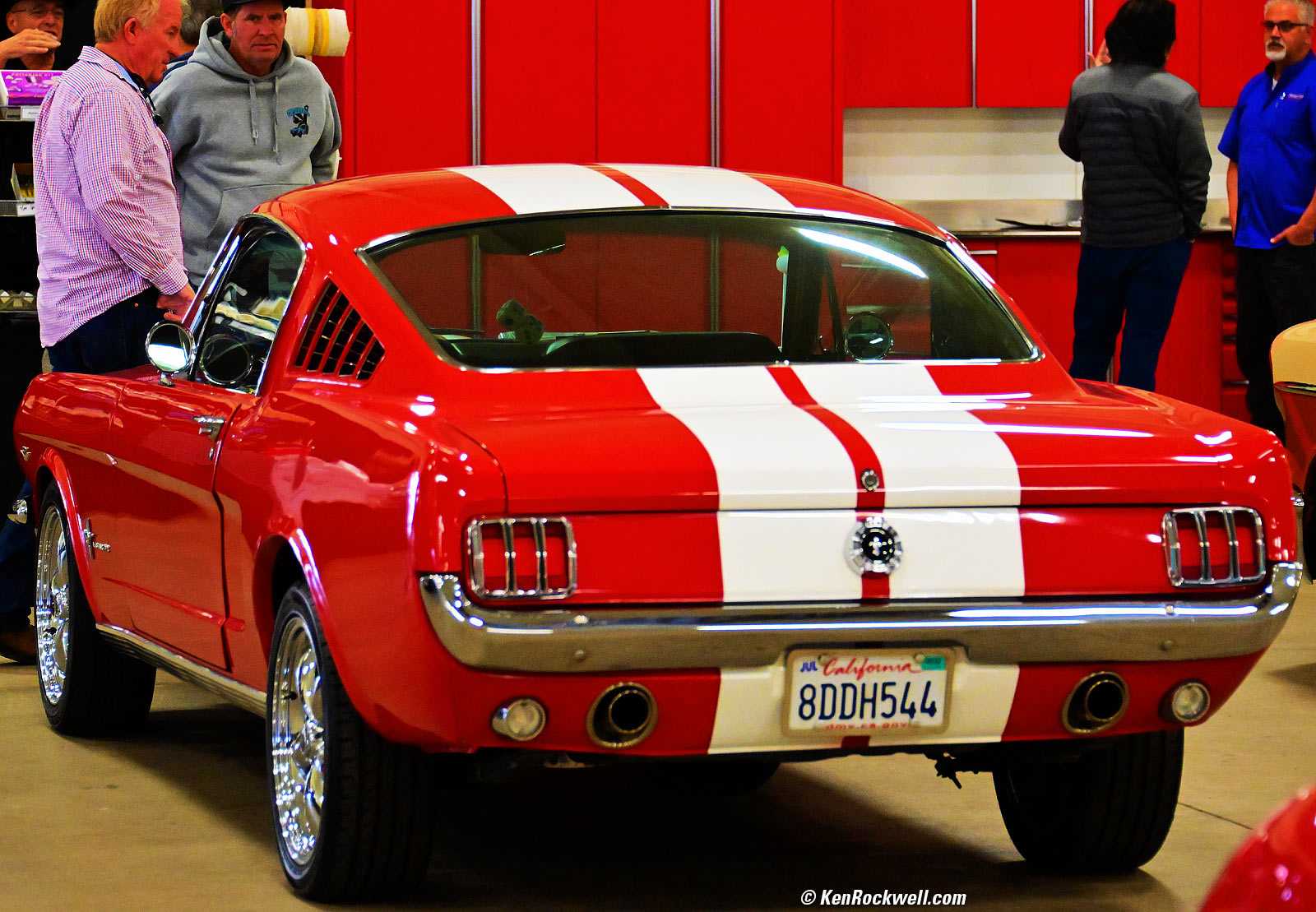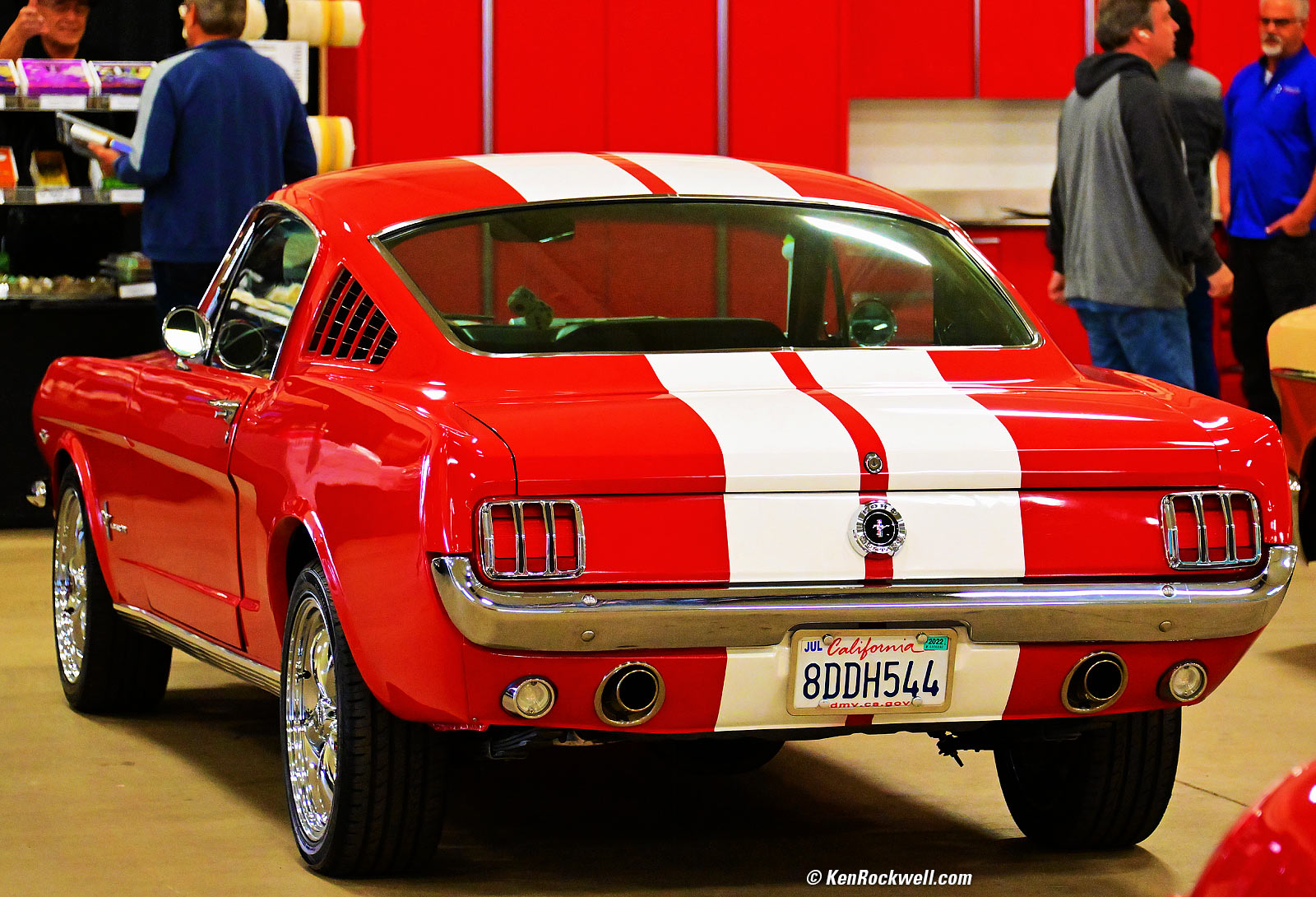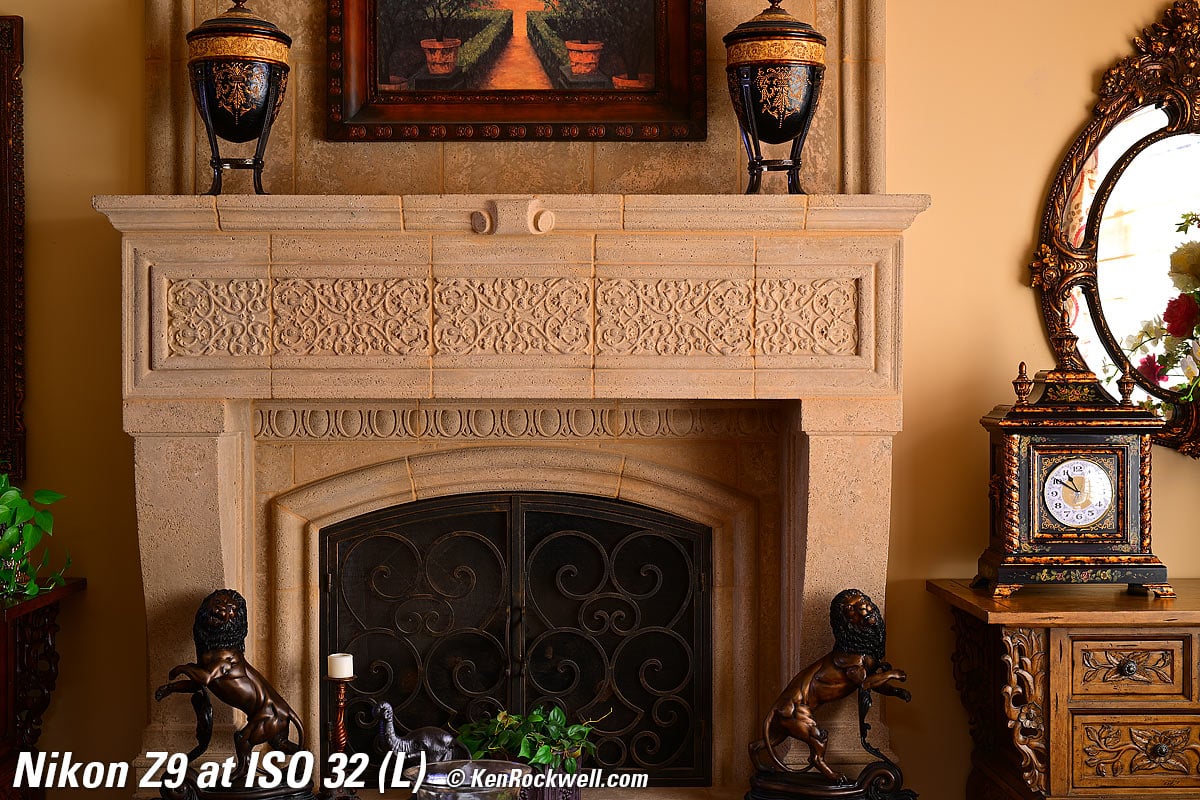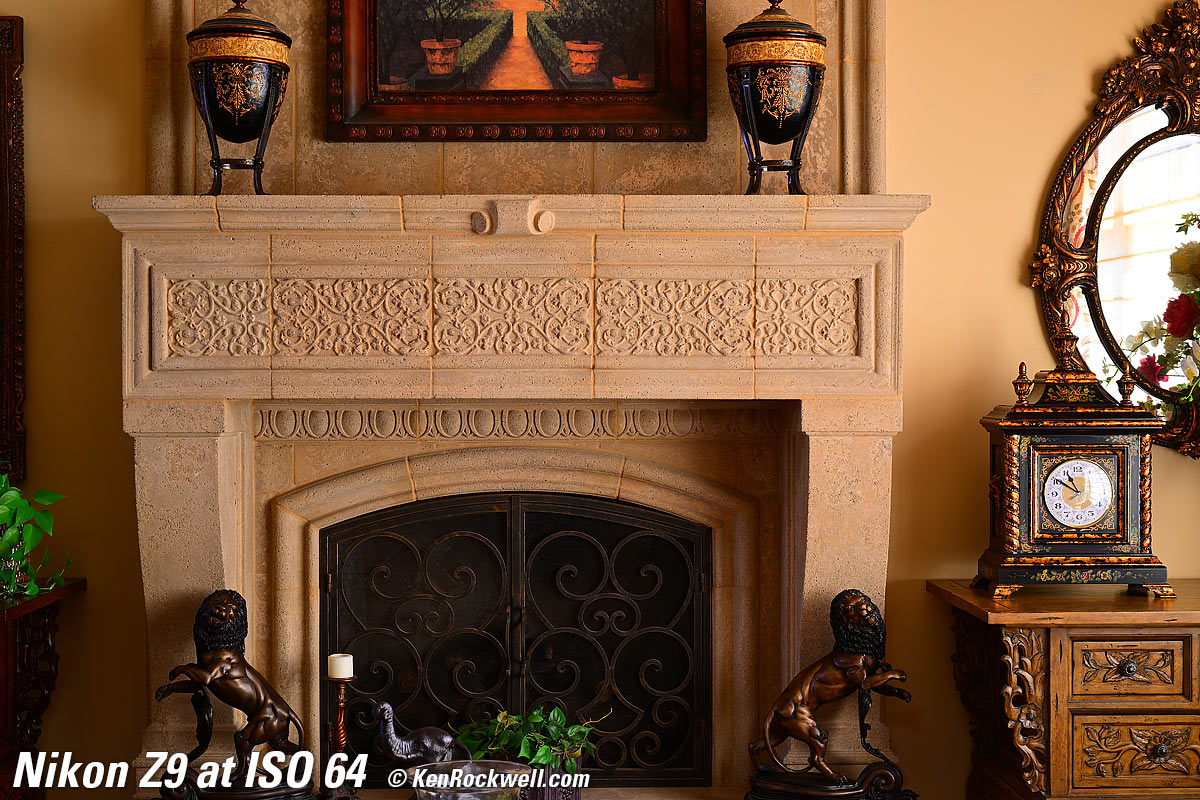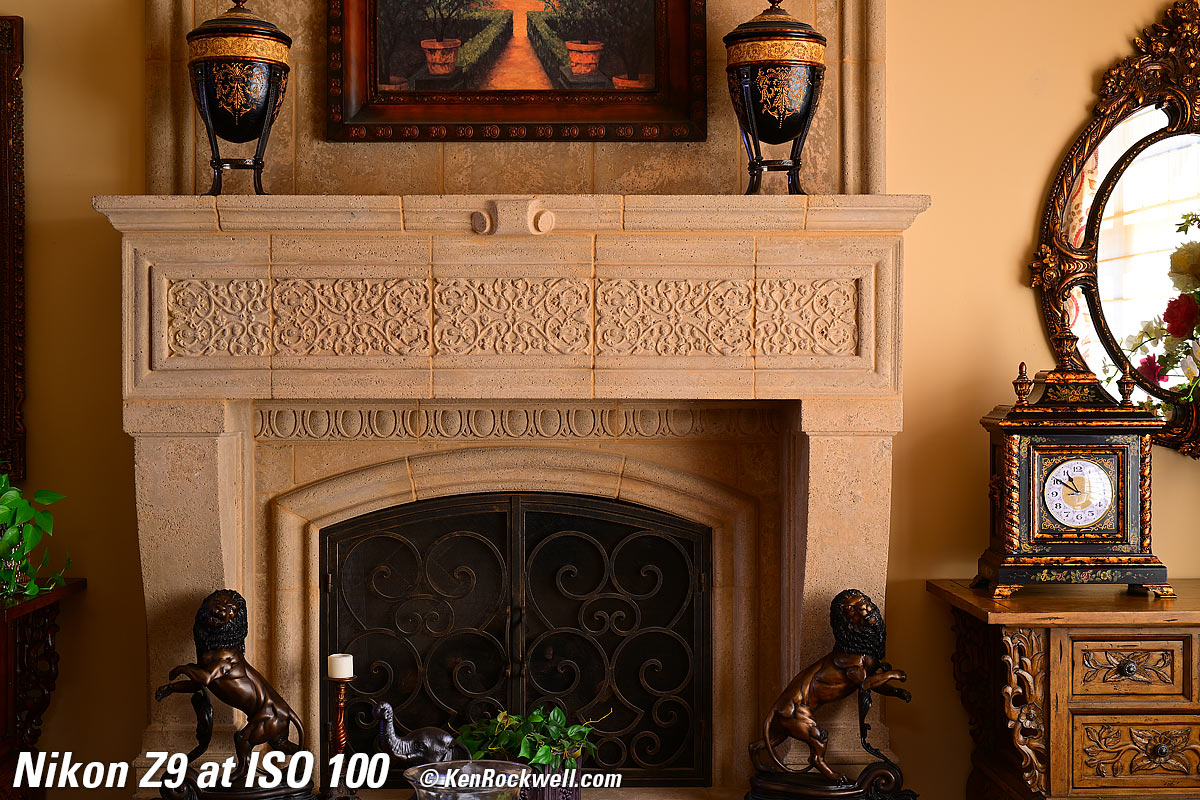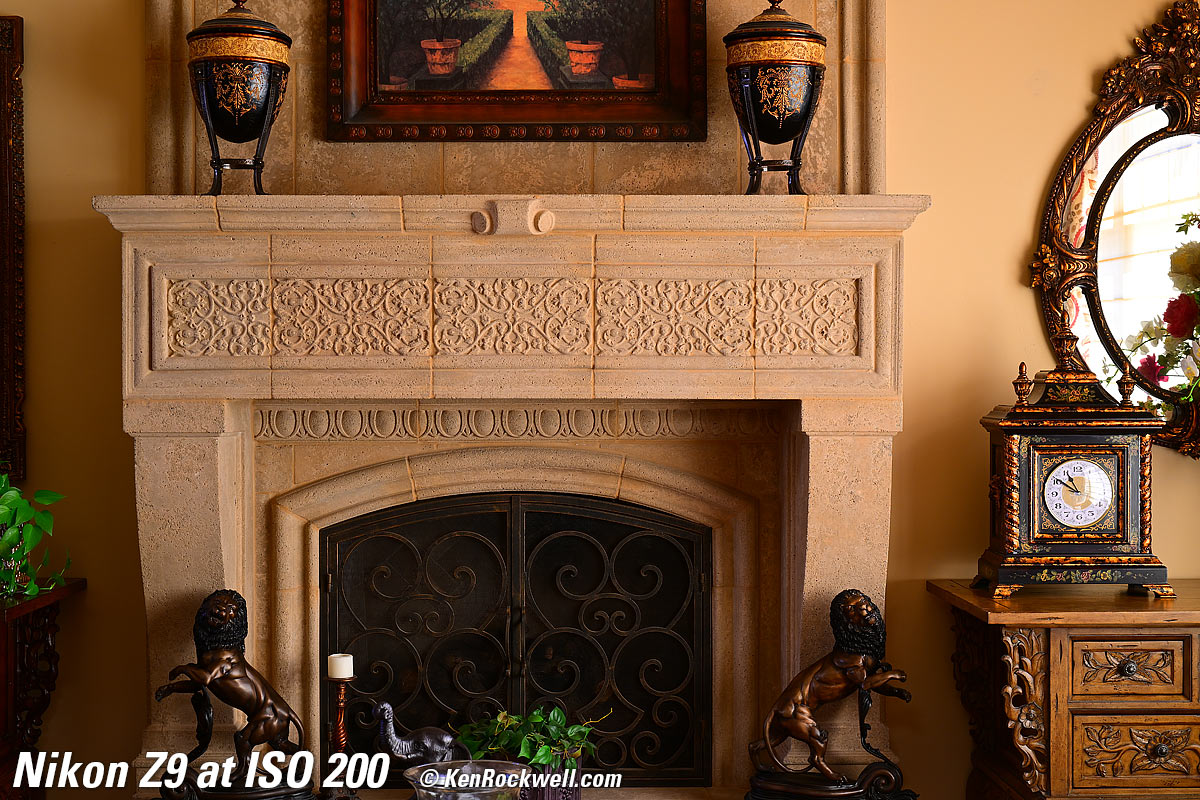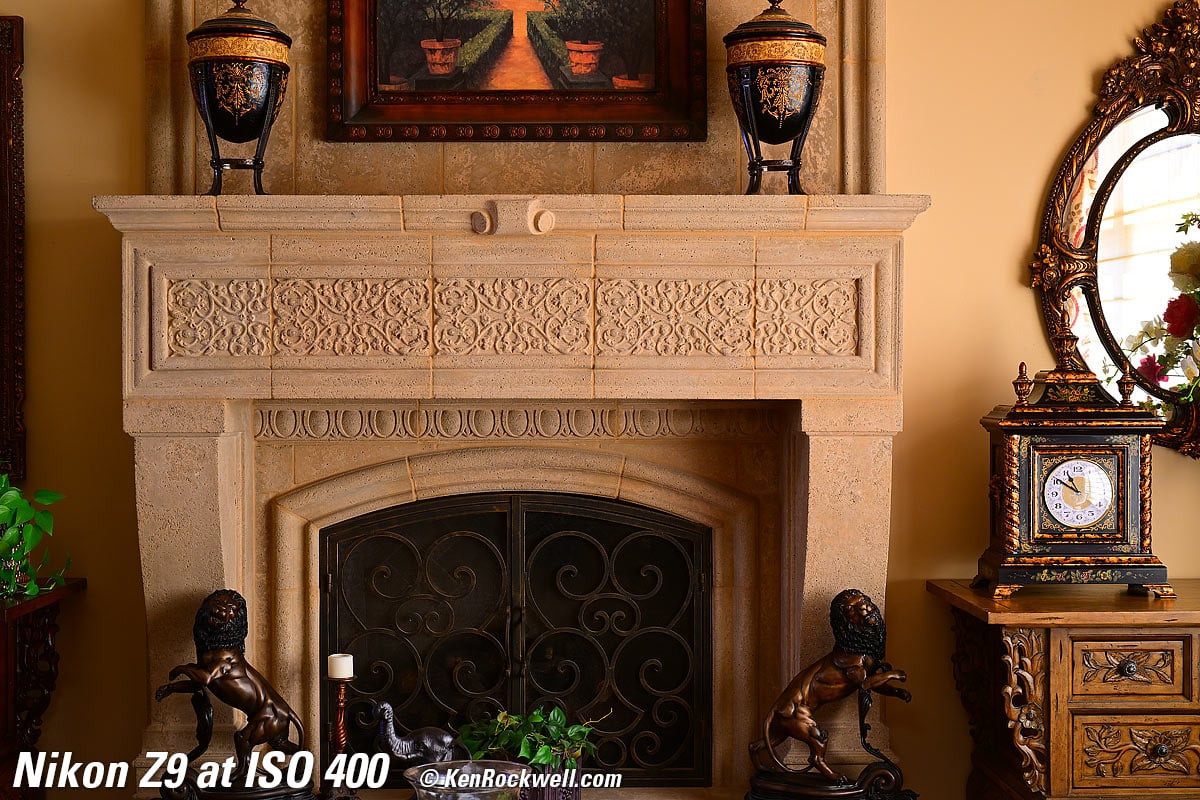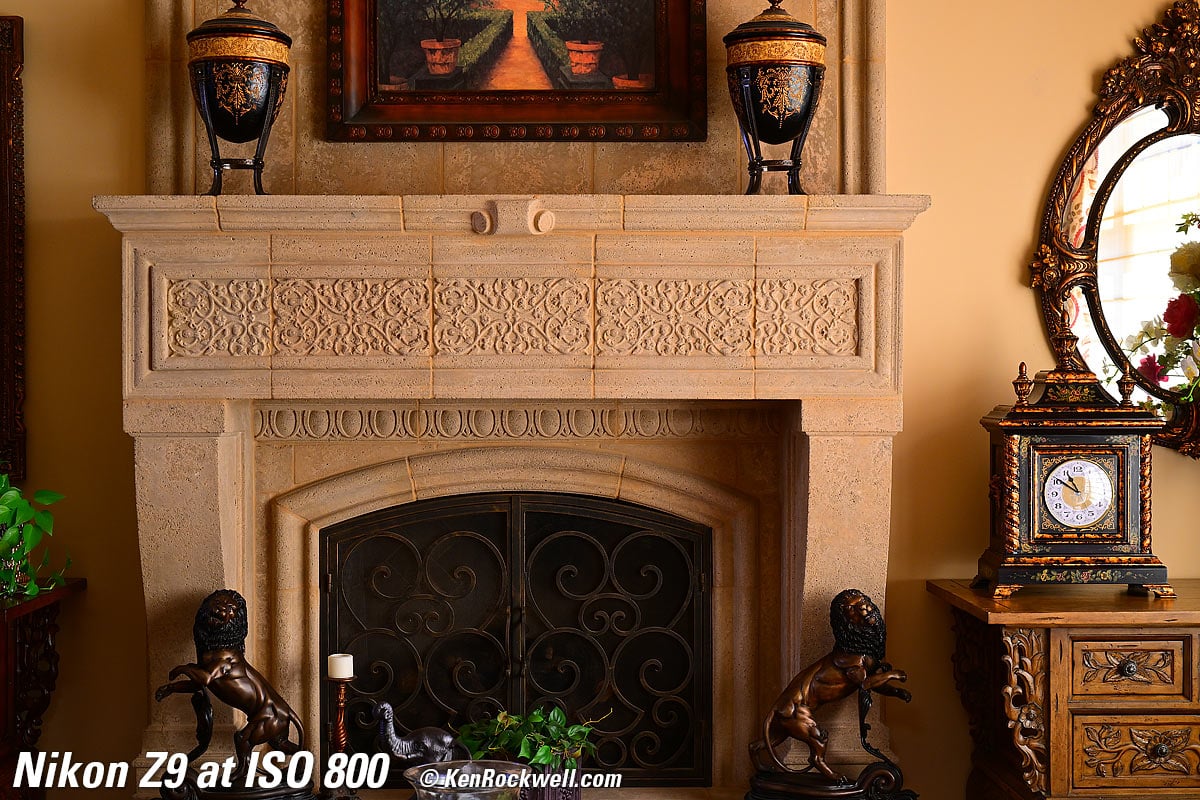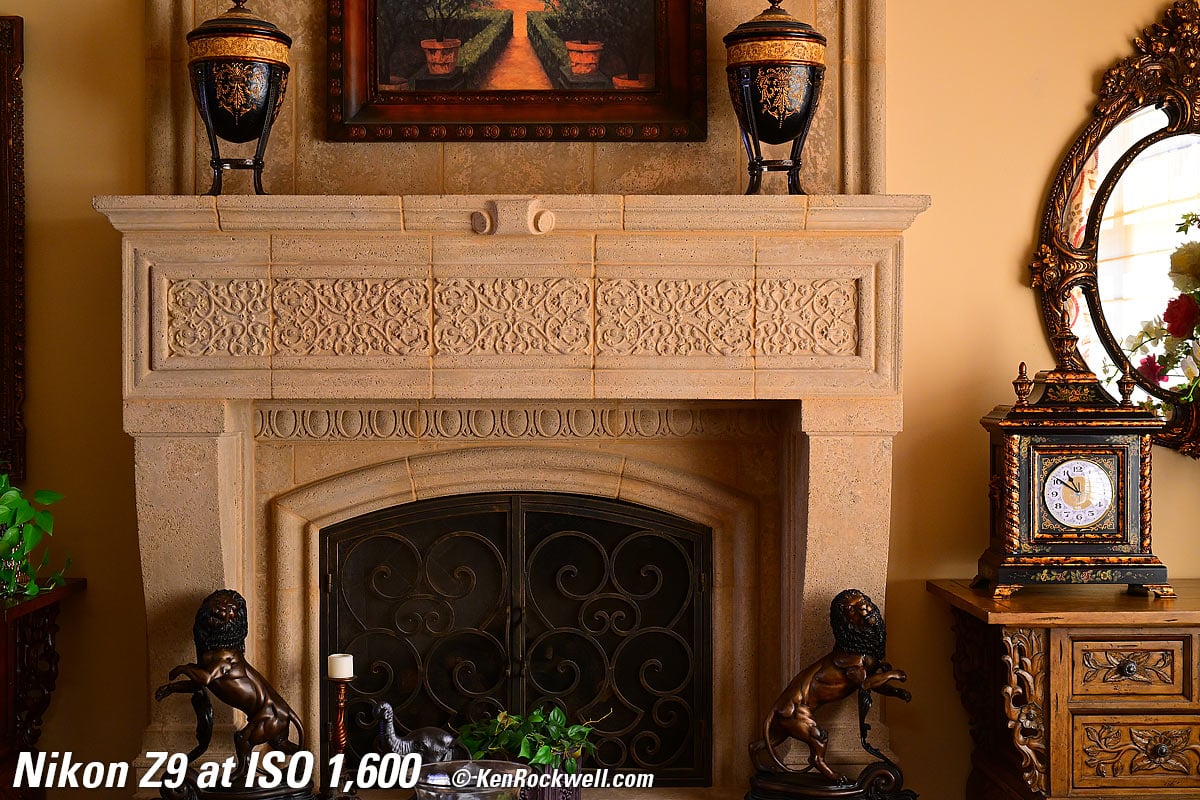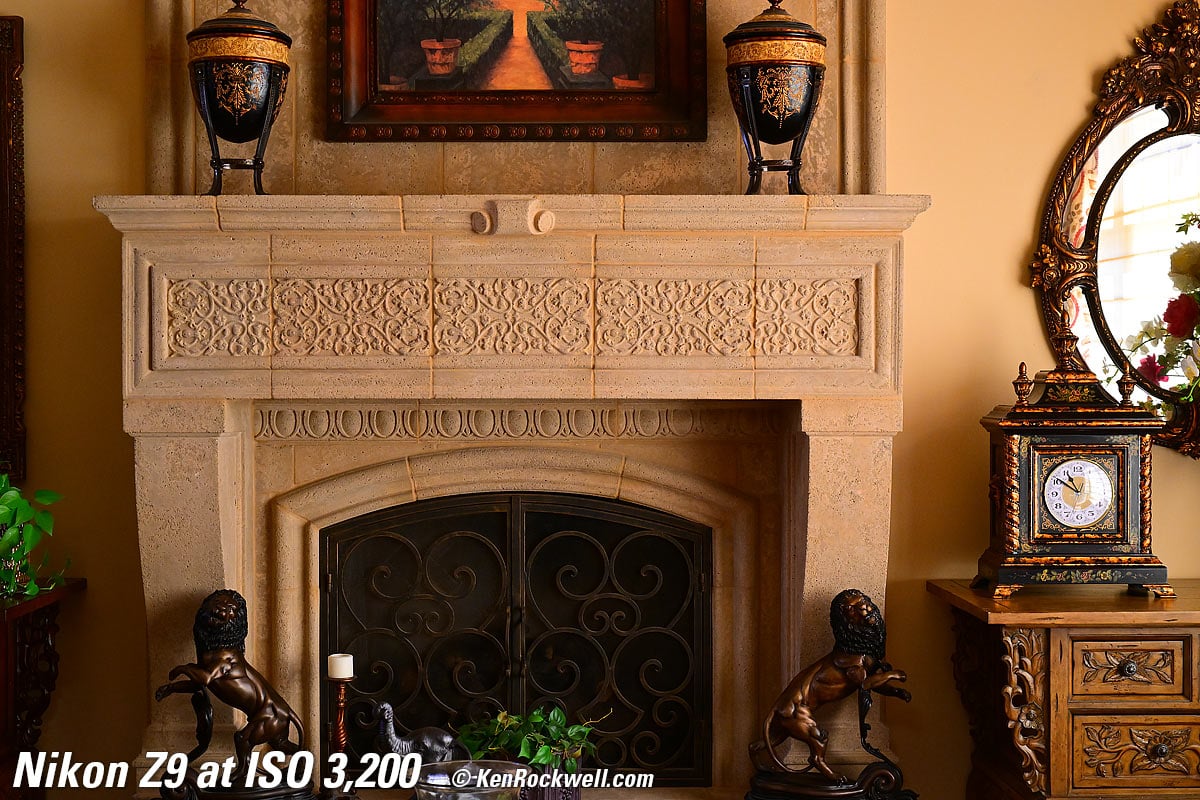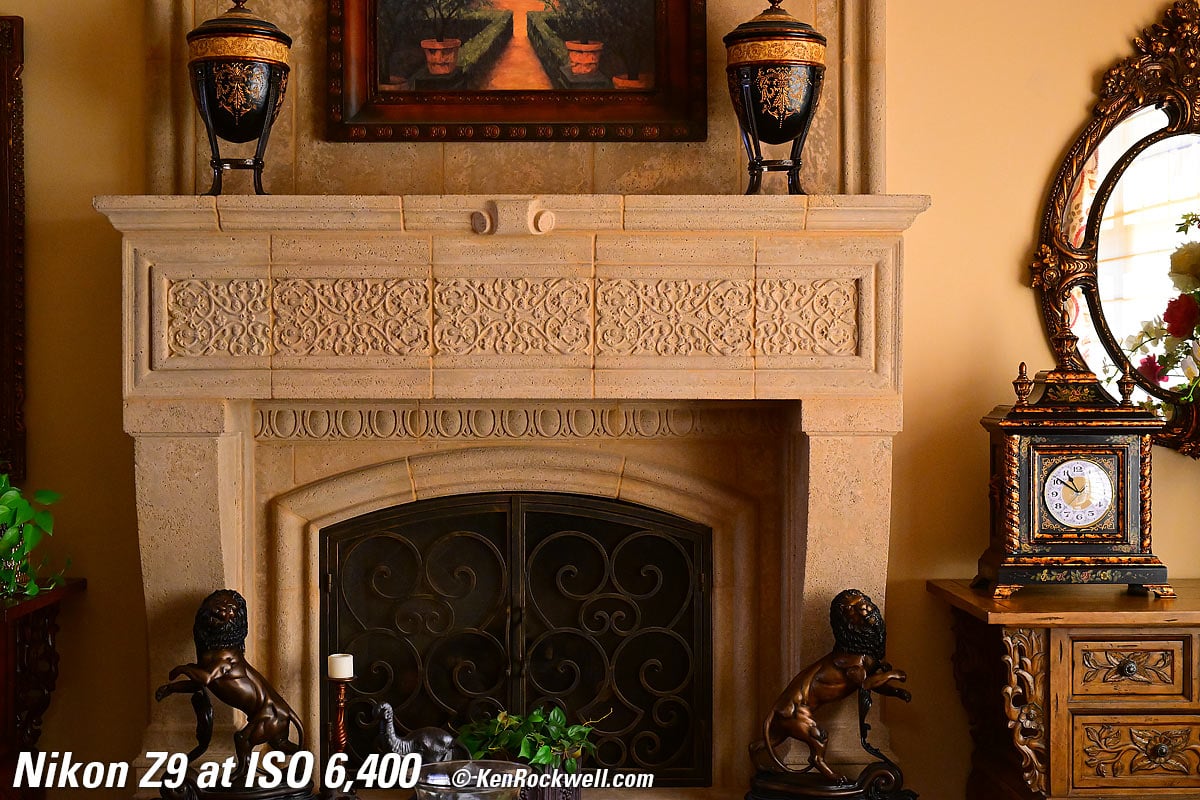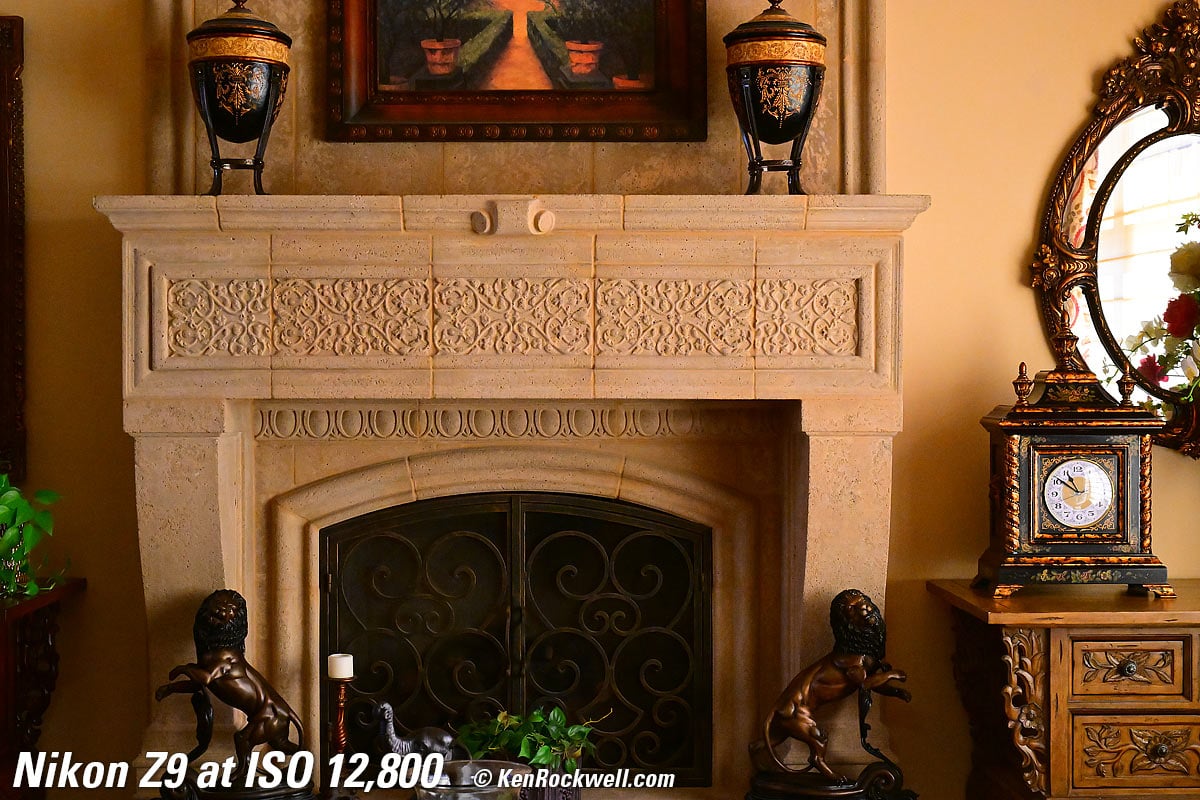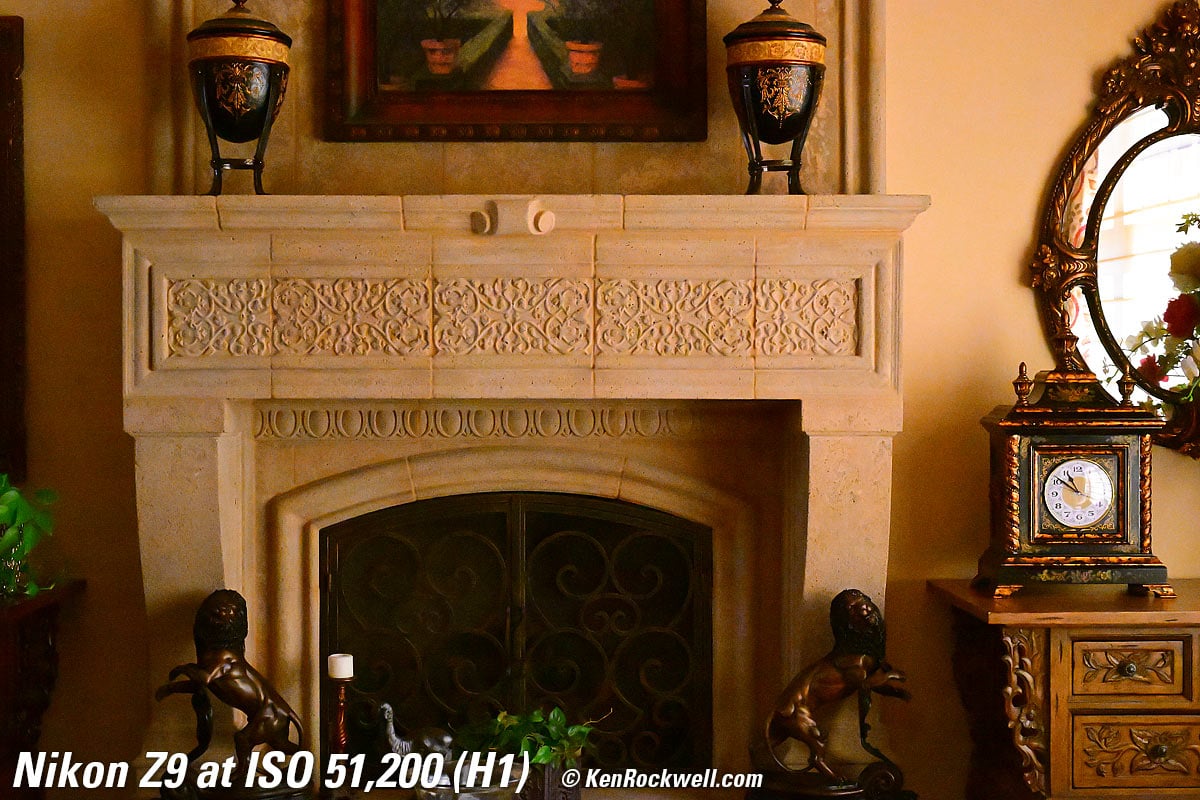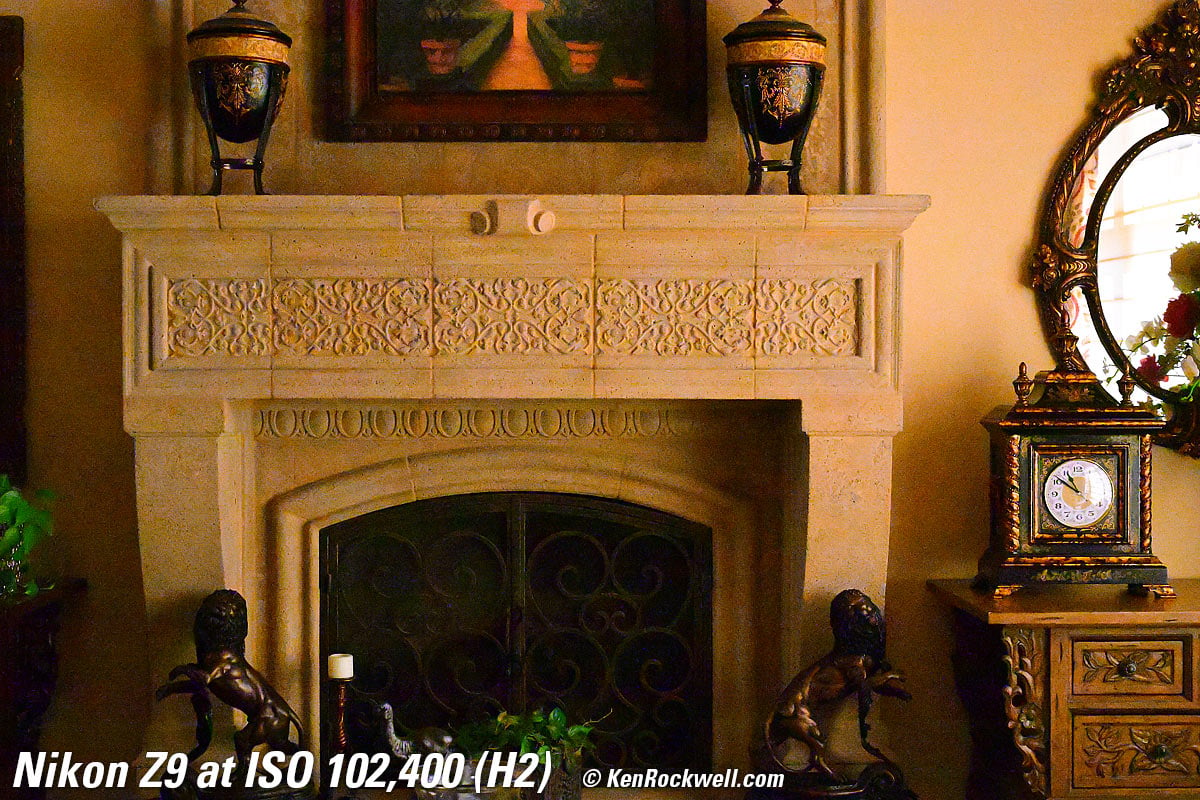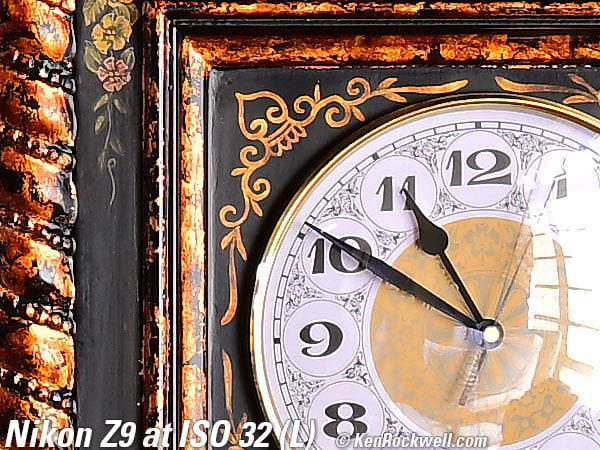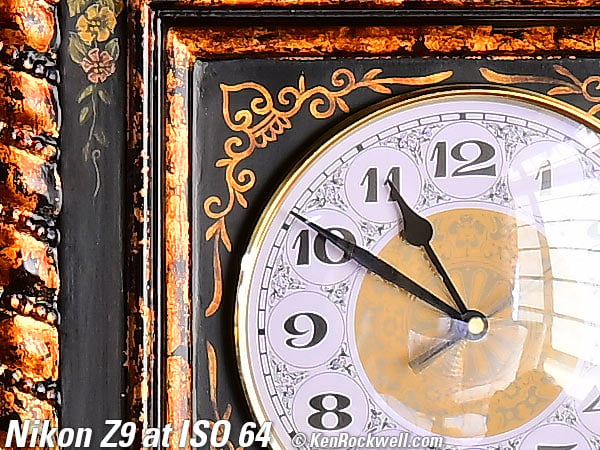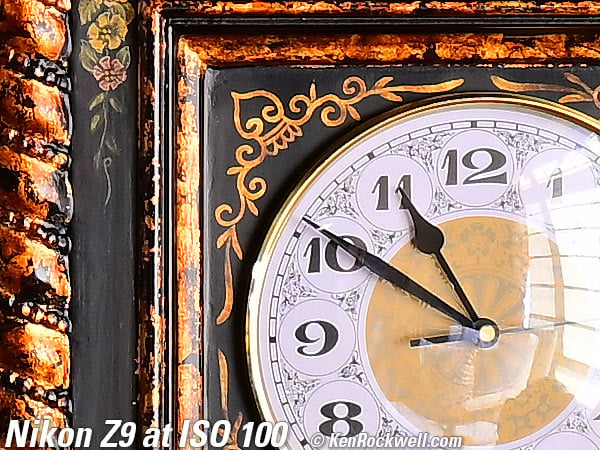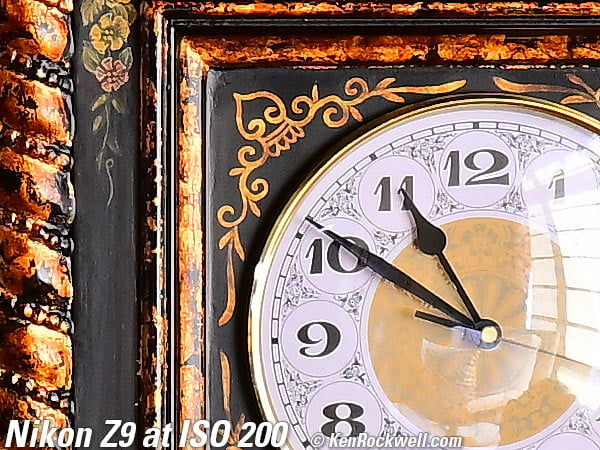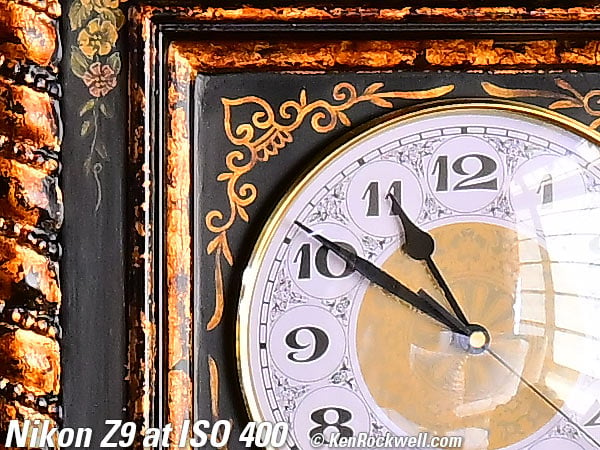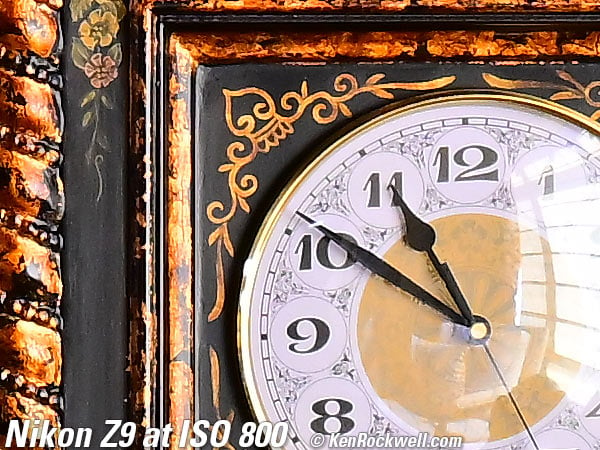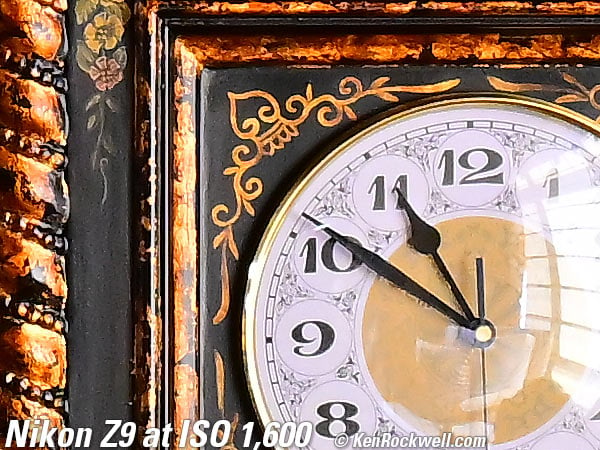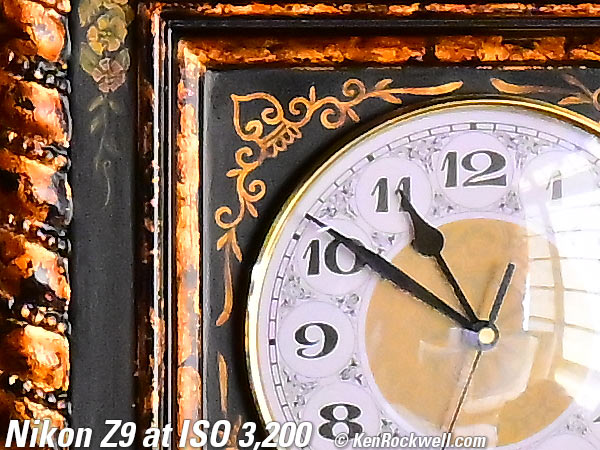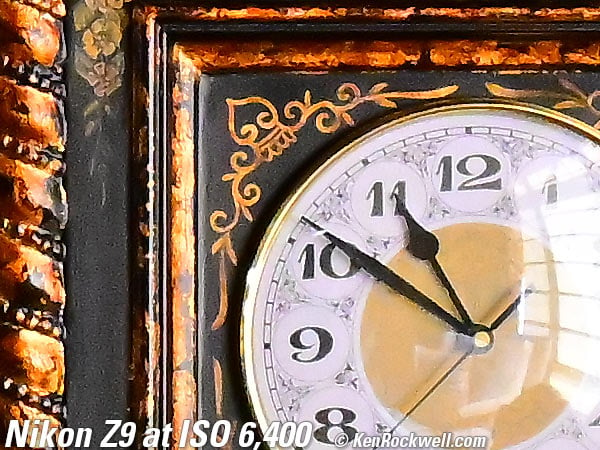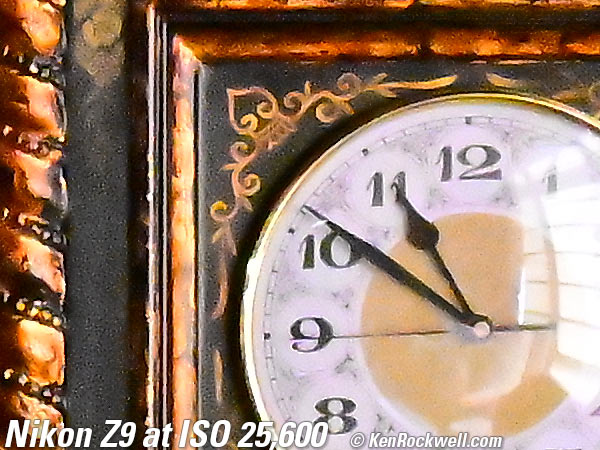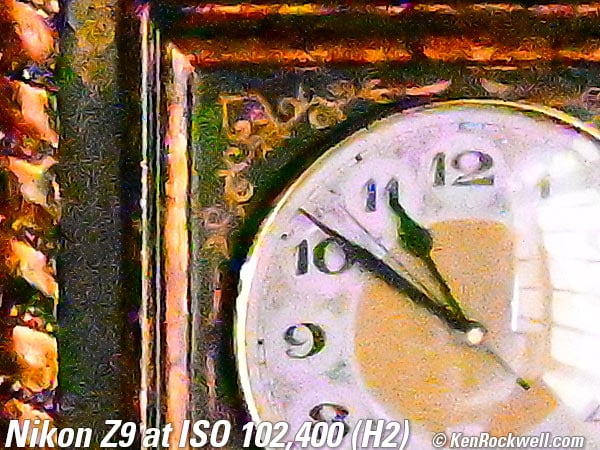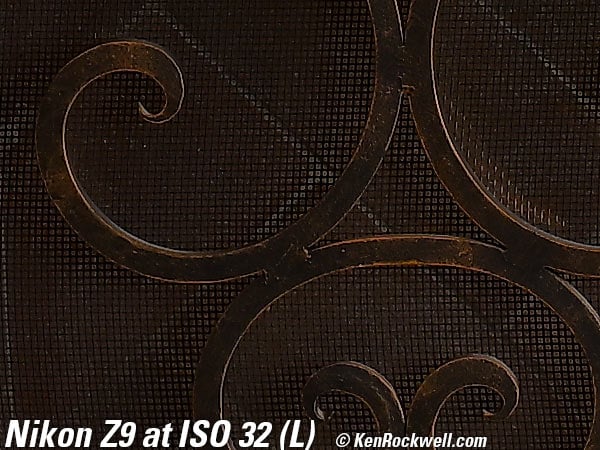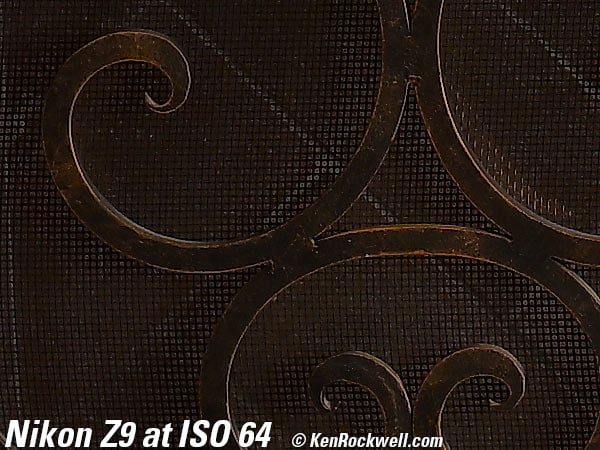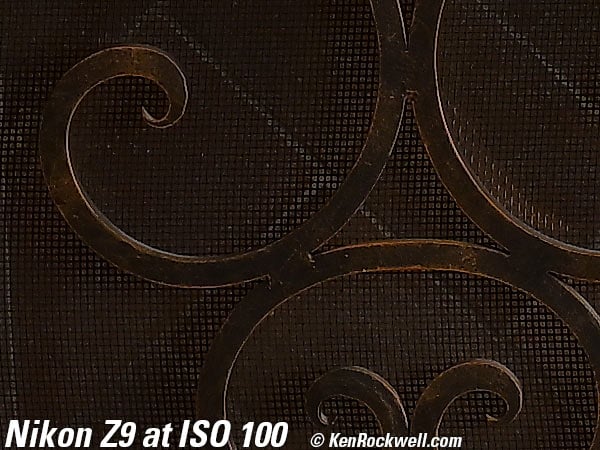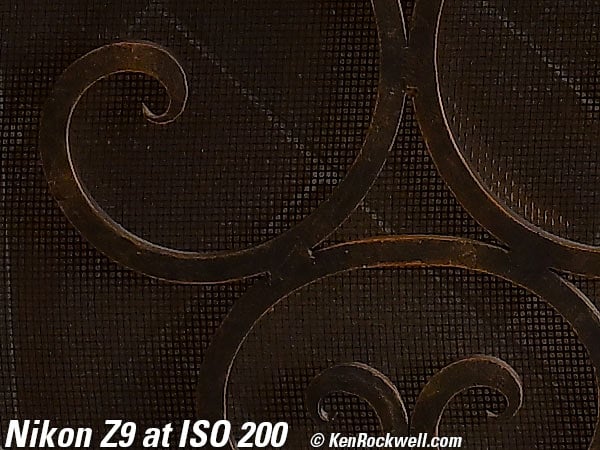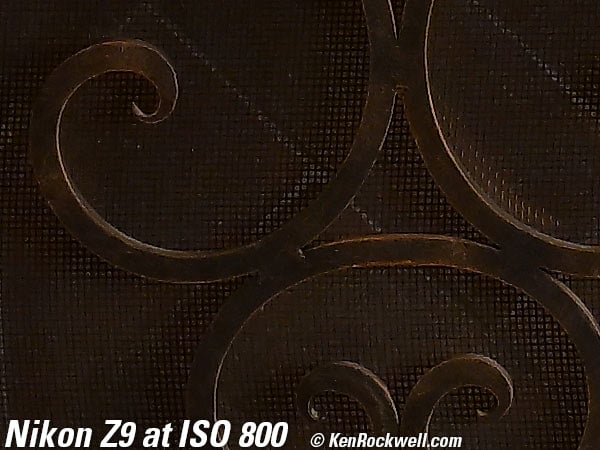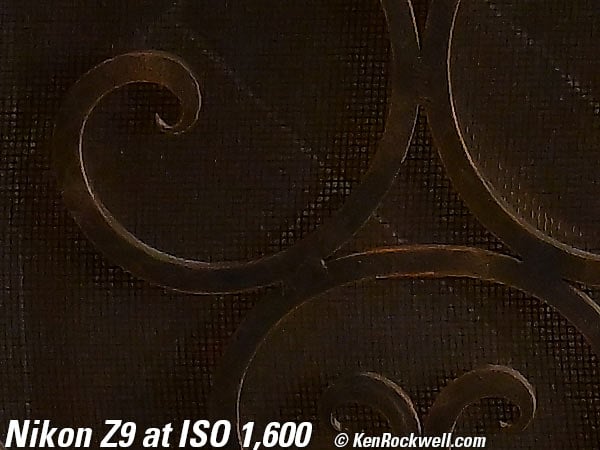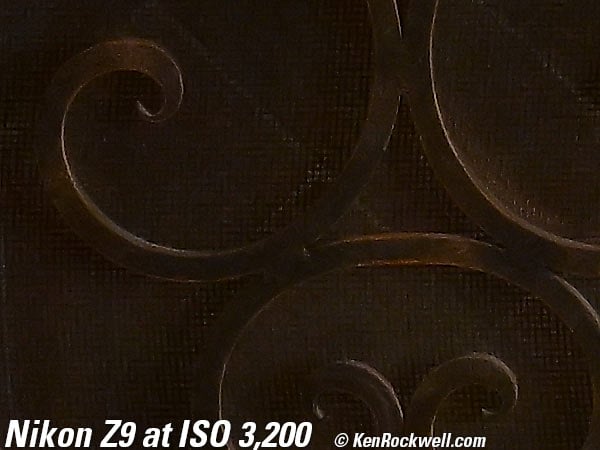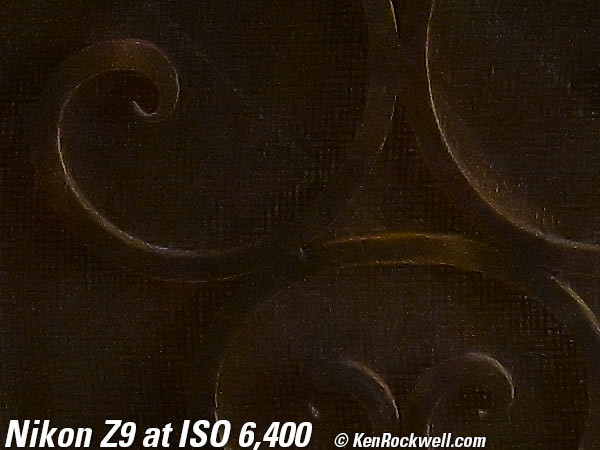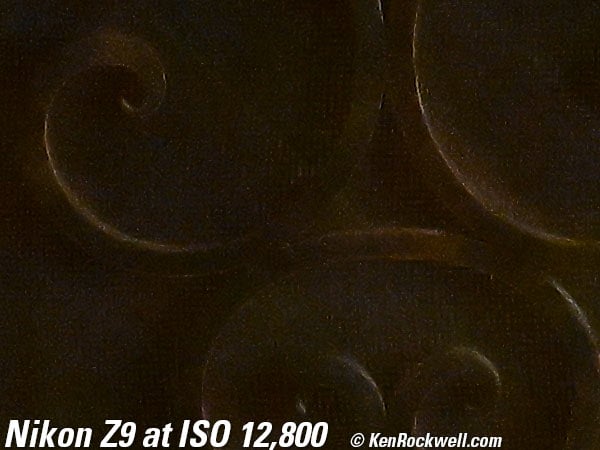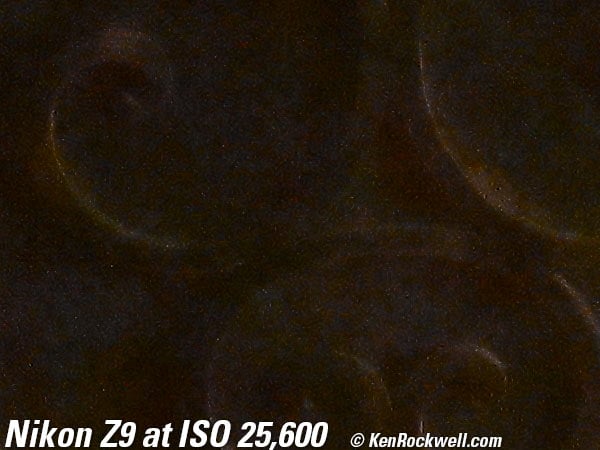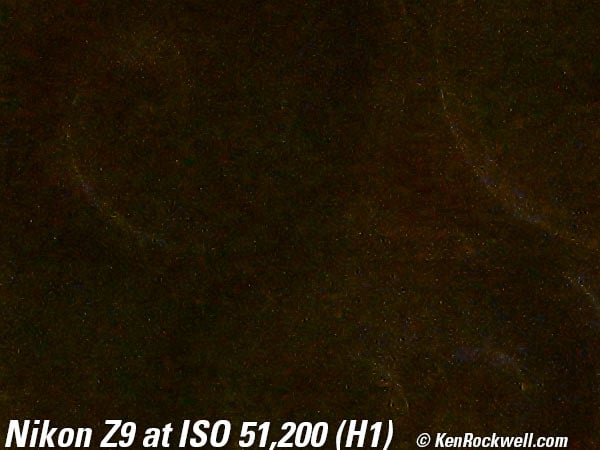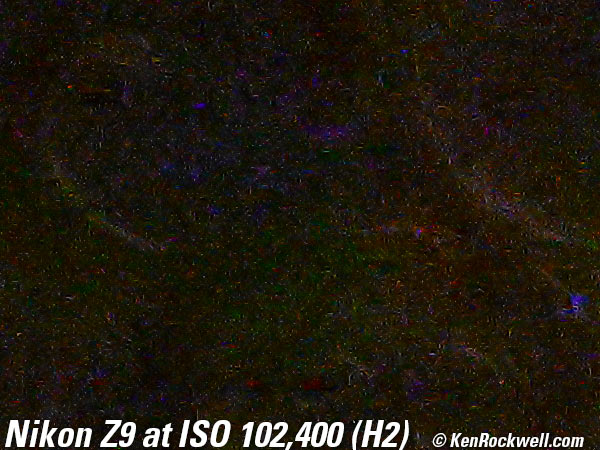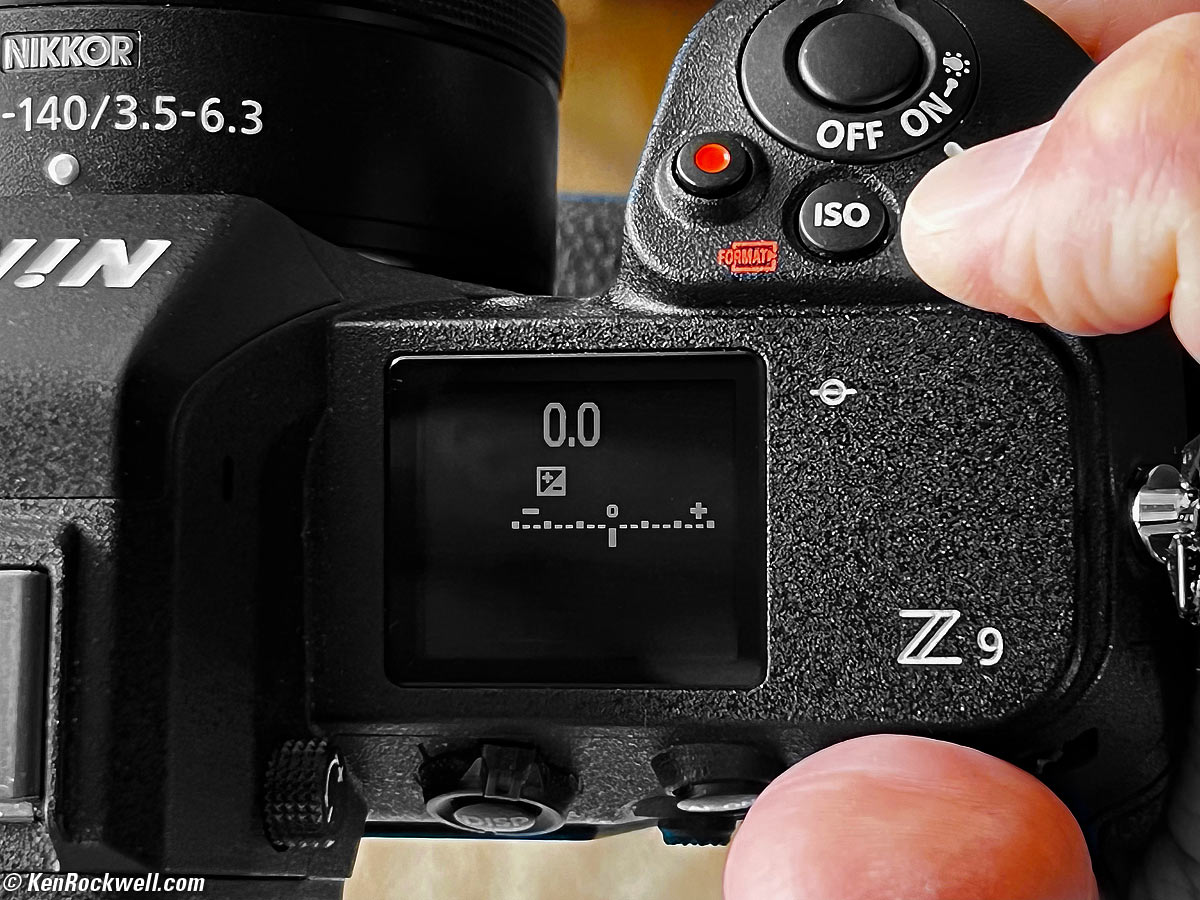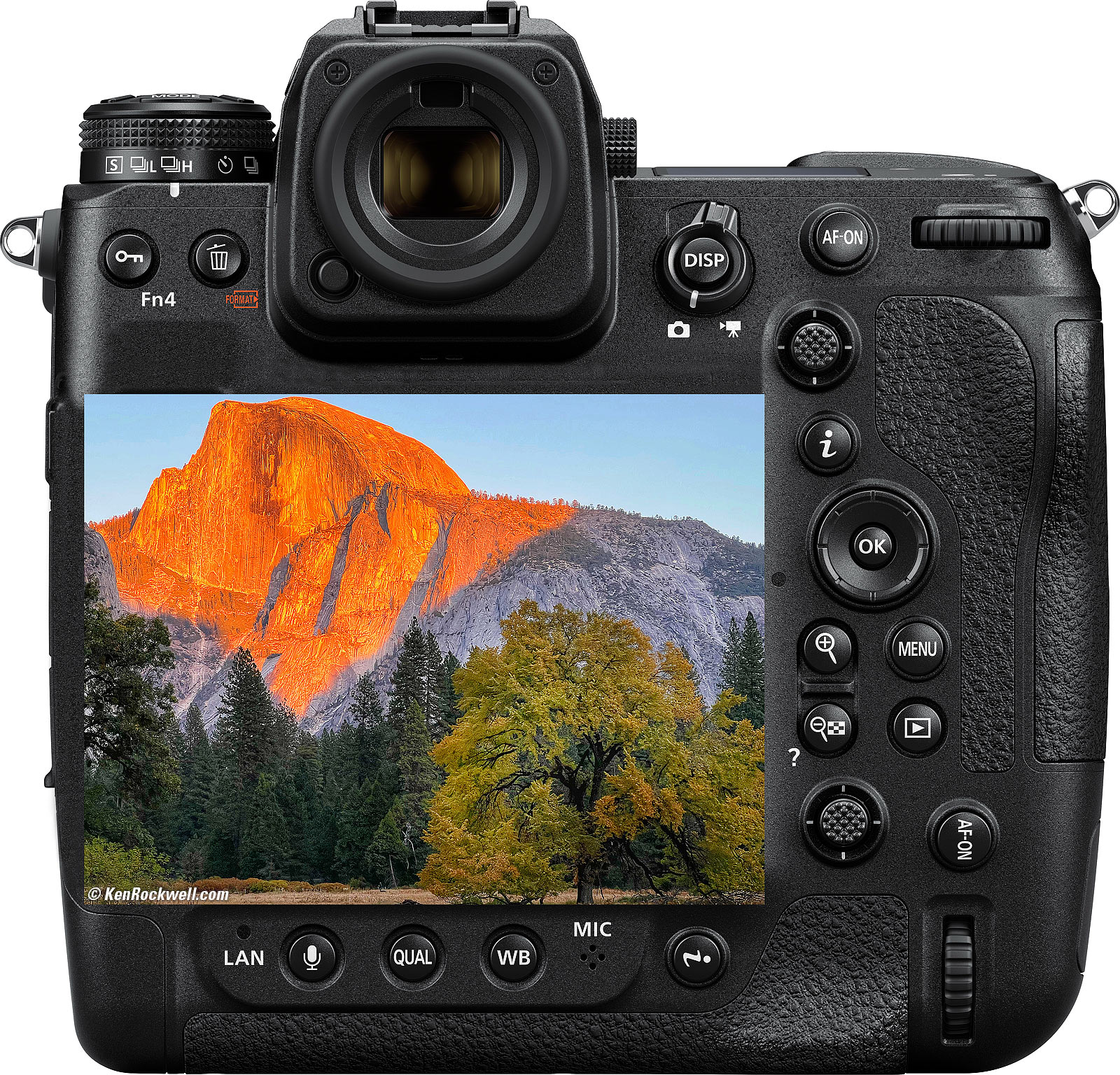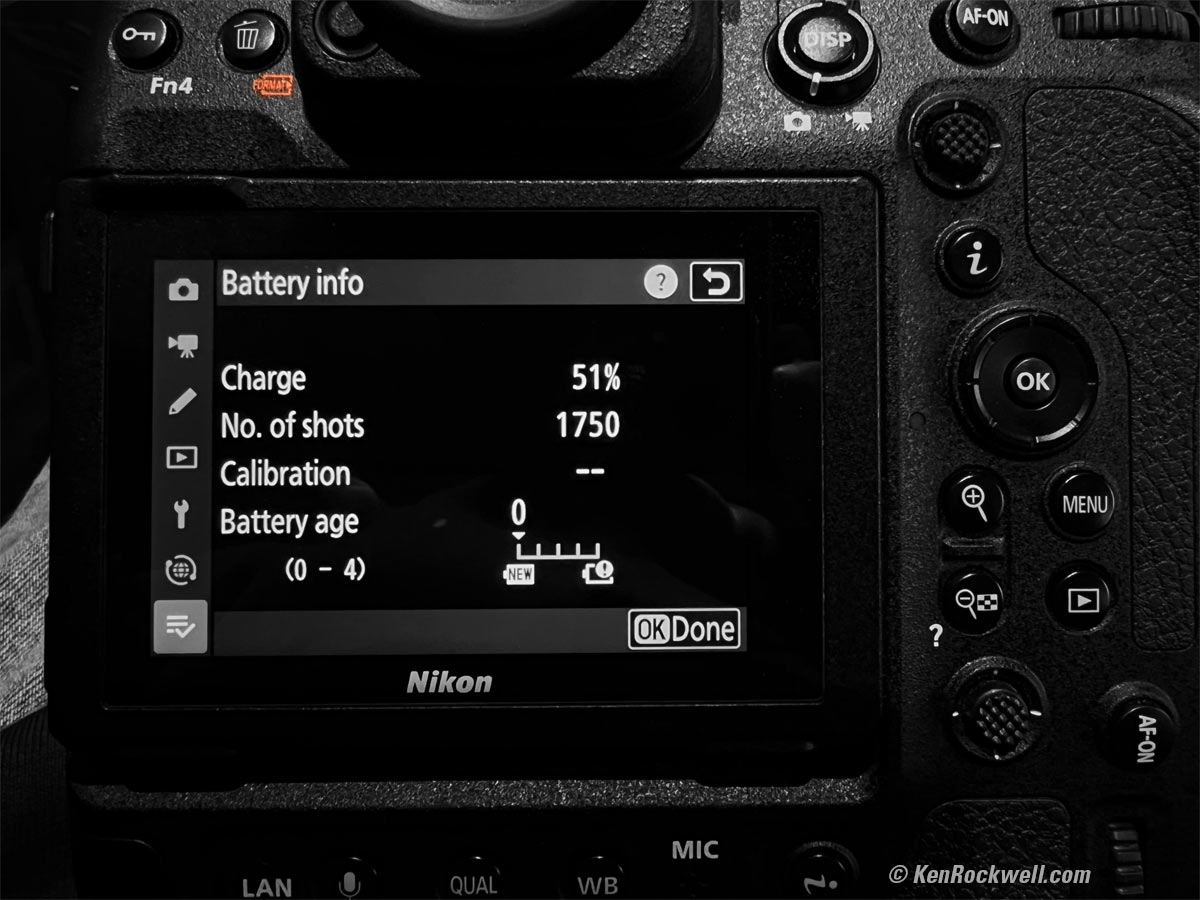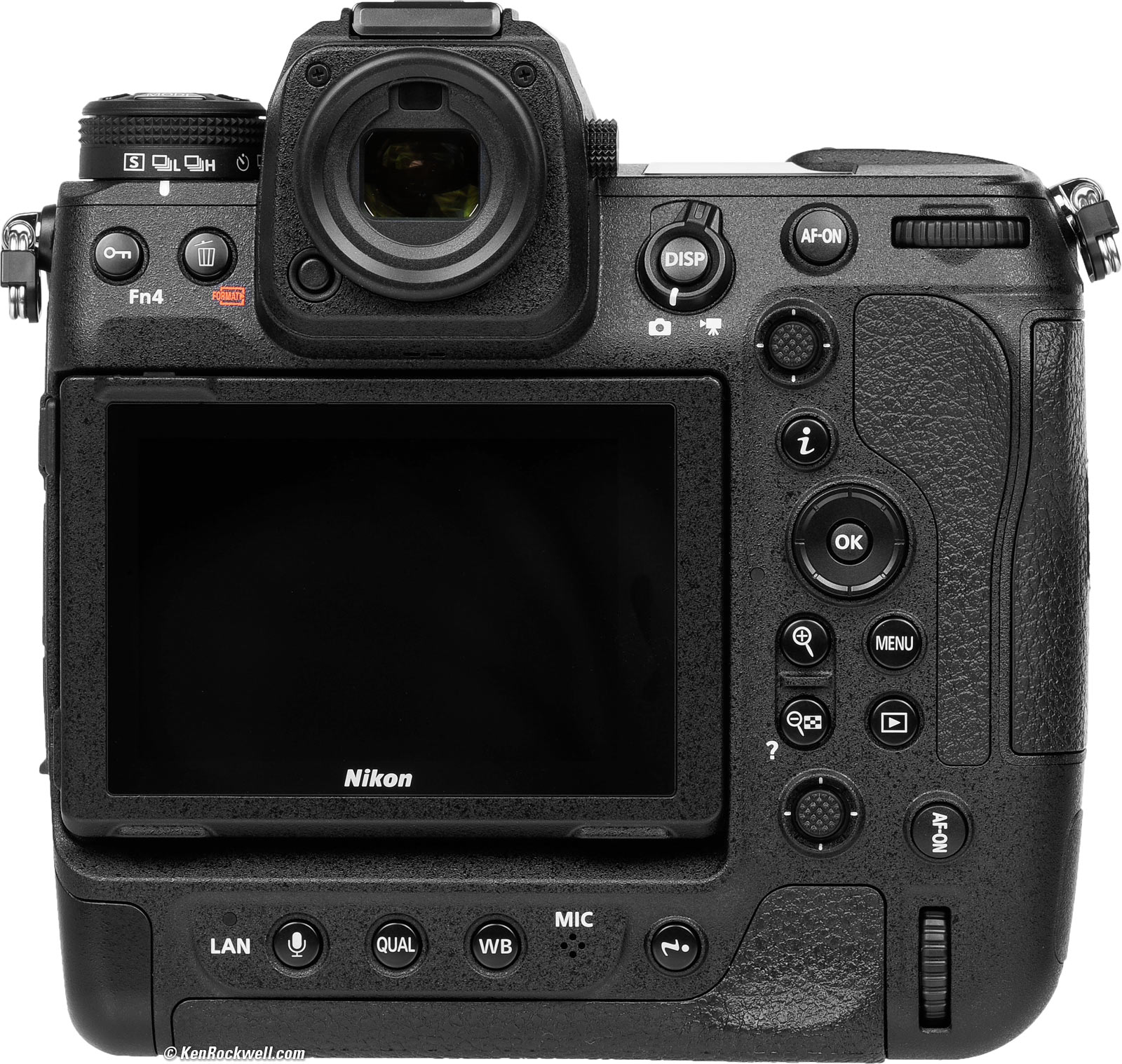Nikon Z9
FX Stabilized Mirrorless: 120 FPS @ 11 MP, 30 FPS @ 45MP (20 FPS raw), 8K/29.97 video, ISO 64~25,600 (32~102,400), 2021-
Sample Images Intro New Good Bad Missing
Lens Compatibility Specifications Accessories
USA Version Performance Compared
User's Guide Recommendations More
Z9 Z8 Z7 II Z6 II Zf Z7 Z6 Z5 Z fc Z50 Z30
Z System Z Lenses All Nikon Lenses Flash
Nikon Z9 (47.3 oz./1,340g with battery and one card, two slots, each takes your choice of a CFexpress type B or XQD card, $5,496.95) and Nikon AI Noct-NIKKOR 58mm f/1.2s on FTZ. bigger. I got mine at B&H. I'd also get it at Adorama, at Amazon or at Crutchfield, or get it used if you know How to Win at eBay.
This 100% all-content, junk-free website's biggest source of support is when you use those or any of these links to my personally approved sources I've used myself for way over 100 combined years when you get anything, regardless of the country in which you live. Nikon does not seal its boxes in any way, so never buy at retail or any other source not on my personally approved list since you'll have no way of knowing if you're missing accessories, getting a defective, damaged, returned, non-USA, store demo or used camera — and all of my personally approved sources allow for 100% cash-back returns for at least 30 days if you don't love your new camera. I've used many of these sources since the 1970s because I can try it in my own hands and return it if I don't love it, and because they ship from secure remote warehouses where no one gets to touch your new camera before you do. Buy only from the approved sources I've used myself for decades for the best prices, service, return policies and selection.
April 2024 Nikon Mirrorless Mirrorless Lenses All Nikon Lenses Nikon Flash All Reviews
Sony vs. Nikon vs. Canon Full-Frame
Sample Images top
Sample Images Intro New Good Bad Missing
Lens Compatibility Specifications Accessories
USA Version Performance Compared
User's Guide Recommendations More
These are snapshots. My real work is in my Gallery.
These are all shot hand-held as BASIC ★ JPGs; no tripods, NORMAL or FINE JPGs or RAW files were used or needed.
More samples throughout this review at Autofocus and High ISOs.
The Z9 is all about action and sports:
Surfer, Pacific Beach, California, 4:45 PM, Tuesday, 31 May 2022. Slight crop from Nikon Z9 in AFC-C 3D AF mode, Nikon Z 100-400mm VR at 270mm at f/5.3 at 1/1,600 in "S" exposure mode at Auto ISO 250 (LV 14.1), Perfectly Clear. bigger or full resolution uncropped 45 MP © JPG file saved at Photoshop Quality 7 (about 4 MB).
Surfer, Pacific Beach, California, 4:42 PM, Tuesday, 31 May 2022. Slight crop from Nikon Z9 in AFC-C 3D AF mode, Nikon Z 100-400mm VR at 290mm at f/5.6 at 1/640 at Auto ISO 64 (LV 14.9), Perfectly Clear. bigger or full resolution uncropped 45 MP © JPG file saved at Photoshop Quality 7 (about 5 MB).
My Z9's color rendition is unbeaten:
Pangaea Outpost, Pacific Beach, California, 4:19 PM, Tuesday, 31 May 2022. Nikon Z9, Nikon Z 100-400mm VR at 100mm at f/9 at 1/160 at Auto ISO 64 (LV 14.3), exactly as shot. bigger or camera-original 45 MP © JPG file (about 9 MB).
Beautiful Nikon colors as always. I prefer the Vivid Picture Control, and add +3 Saturation on top of it for bright, snappy colors.
Pueblo, Pacific Beach, California, 4:21 PM, Tuesday, 31 May 2022. Nikon Z9, Nikon Z 100-400mm VR at 195mm at f/7.1 at 1/200 at Auto ISO 64 (LV 13.9) Perfectly Clear. bigger or camera-original 45 MP © JPG file (about 9 MB).
My Z9 easily shoots just about anything, regardless of dynamic range:
Perfect End to a Perfect Day, Oceano Dunes, California, 7:01 P.M., Wednesday, 20 April 2022. Nikon Z9 in square crop mode, Z 24-200mm VR at 85mm wide-open at f/6.3 at 1/640 at Auto ISO 64. +1.3 stops exposure compensation (LV 15.3), Skylum Aurora HDR (now part of Luminar Neo) and then curves adjustment layer masks in Photoshop CS6 (2010) to lighten the foreground and darken the sky further. bigger or fit-to-screen.
Dynamic range is great, especially shot as BASIC JPGs; the bands around the sun come from my extreme post-processing stretching the dynamics in Aurora HDR and Levels adjustments; I should have shot in a NORMAL or FINE JPG mode if I expected to do this, or simply blurred the sky later to hide these post-processing artifacts.
Fishing into the Sunset, Oceano Dunes, California, 7:37 P.M., Wednesday, 20 April 2022. Nikon Z9, Z 24-200mm VR at 200mm at f/11 at 1/200 at Auto ISO 400 (LV 12.6), Skylum Aurora HDR (now part of Luminar Neo) to darken the sun, sky and along the bottom and lighten the fisherman and the dark waves. bigger or fit-to-screen.
I cropped this to about the equivalent of 300mm and it looks great!
Pool Resort Area, Best Western Casa Grande, Arroyo Grande, California, 8:40 P.M., Wednesday, 20 April 2022. Cropped from Nikon Z9, Z 24-200mm VR at 24mm wide-open at f/4 hand-held at 1/10 at Auto ISO 1,400 (LV 3½), Perfectly Clear (two passes to lift the shadows). bigger or fit-to-screen.
I braced my camera on a railing and shot away; VR works great!
Sticker Mural, Pismo Beach, California, 9:49 A.M., Thursday, 21 April 2022. Square crop from Nikon Z9, Nikon Z 14-30mm f/4 at 30mm at f/5.6 at 1/125 at ISO 64 (LV 12.6), Perfectly Clear. bigger or fit-to-screen.
My Z9 has so much resolution I easily can crop to make my Z 24-200mm VR replace a 500mm lens:
Elephant Seals, Ragged Point, California, 3:08 P.M., Thursday, 21 April 2022. Tightly cropped from Nikon Z9, Z 24-200mm VR at 200mm wide-open at f/6.3 at 1/200 at AUTO ISO 200 (LV 12.0), Perfectly Clear. bigger or fit-to-screen or camera-original 45 MP © 9 MB JPG.
Yes, my Z9 has so much resolution that I was able to crop this image from the camera-original 45 MP © 9 MB JPG, giving me the same image I'd get if I had hauled a 500mm lens — and cropping like this gives me more depth-of-field to keep both seals in focus, which would have been tougher if I had lugged a 500mm lens with me. Whew! Back in the 1990s I paid over $5,000 for my used 14-pound AF-I 400mm f/2.8D which I hated hauling around to try to get this same shot on 35mm ISO 50 film.
My Z9 has great color rendition:
Irish Hills, San Luis Obispo, California, 9:02 A.M., Friday, 22 April 2022. Nikon Z9, Z 24-200mm VR at 130mm at f/8 at 1/160 at AUTO ISO 80 (LV 13⅔), screw-in Tiffen grad ND 0.6 filter to keep the sky from being too bright, Skylum Aurora HDR (now part of Luminar Neo) and Perfectly Clear. bigger or fit-to-screen.
Spring Sprung under the Tree Bridge, Irish Hills, San Luis Obispo, California, 9:32 A.M., Friday, 22 April 2022. Nikon Z9, Nikon Z 14-30mm f/4 at 24.5mm at f/8 hand-held at 1/25 at AUTO ISO 220 (LV 9½), Skylum Aurora HDR (now part of Luminar Neo). bigger or fit-to-screen.
Four Pipe, Avila Beach Pier, California, 12:25 P.M., Friday, 22 April 2022. Nikon Z9, Z 24-200mm VR at 88mm wide-open at f/6.3 at 1/250 at AUTO ISO 64 (LV 13.9), as shot. bigger or fit-to-screen.
Montaña de Oro State Park, San Luis Obispo County, California, 3:23 P.M., Friday, 22 April 2022. Nikon Z9, Nikon Z 14-30mm f/4 at 22mm at f/8 at 1/250 at AUTO ISO 64 (LV 14.6), Perfectly Clear. bigger or fit-to-screen.
Kayaks on Morro Bay, Baywood Park, Los Osos, California, 5:36 P.M., Friday, 22 April 2022. Nikon Z9, Nikon Z 14-30mm f/4 at 16.5mm at f/11 at 1/100 at AUTO ISO 64 (LV 14.2), Perfectly Clear. bigger or fit-to-screen.
Nine Posts on Morro Bay, Baywood Park, Los Osos, California, 5:59 P.M., Friday, 22 April 2022. Nikon Z9, Z 24-200mm VR at 60mm at f/8 at 1/125 at AUTO ISO 64 (LV 13.6), Skylum Aurora HDR (now part of Luminar Neo), split-toned-print. bigger or fit-to-screen.
The Three Stacks at Last Light, Morro Bay, California, 6:30 P.M., Friday, 22 April 2022. Nikon Z9, Z 24-200mm VR at 125mm at f/8 at 1/320 at AUTO ISO 64 (LV 15.0), Perfectly Clear. bigger or fit-to-screen.
Morro Rock at Sunset, Morro Bay, California, 7:28 P.M., Friday, 22 April 2022. Nikon Z9, Z 24-200mm VR at 44mm at f/8 at 1/320 at AUTO ISO 64 (LV 15.0), Skylum Aurora HDR (now part of Luminar Neo) and then Perfectly Clear. bigger or fit-to-screen.
Mossy Oak, Oak Preserve, Los Osos, California, 10:24 A.M., Saturday, 23 April 2022. Nikon Z9, Oben CT-2491 Carbon-Fibre Tripod and matching Oben BC-139 Ball Head so I could get a precise composition, Nikon Z 14-30mm f/4 at 30mm at f/11 at 1/15 at ISO 64 (LV 11½), Skylum Aurora HDR (now part of Luminar Neo) to bring out all the detail in the shadows and control the highlights, all from my one JPG file. bigger or full 45 MP resolution.
Oak Preserve, Los Osos, California, 11:04 A.M., Saturday, 23 April 2022. Nikon Z9, Oben CT-2491 Carbon-Fibre Tripod and matching Oben BC-139 Ball Head so I could get a precise composition, Nikon Z 14-30mm f/4 at 15mm at f/8 at 1/25 at ISO 64 (LV 11.3), Skylum Aurora HDR (now part of Luminar Neo) to bring out all the detail in the shadows and control the highlights, all from my one JPG file, then flipped horizontally to read properly from left to right. bigger or full 45 MP resolution (not flipped).
Rockwell's Lunch, 12:18 PM, Friday, 18 February 2022. Nikon Z9 with in-camera VR ON, Nikon Z 40mm f/2 at f/11 hand-held at ⅛ second at Auto ISO 640, +0.7 stops exposure compensation (LV 7¼), VIVID Picture Control at defaults except set to +9 sharpening and +3 Saturation, shown here exactly as shot. bigger or camera-original 45 MP BASIC ★ JPG file (9 MB).
La Colonia, Ciudad de México, Distrito Federal, México, 6:28 PM, Saturday, 19 February 2022. Nikon Z9 with in-camera VR ON, Z 40mm f/2 at f/2 hand-held at 1/10 of a second at Auto ISO 3,600 (LV ⅙), VIVID Picture Control at defaults except set to +9 sharpening and +3 Saturation, Perfectly Clear. bigger or camera-original 45 MP BASIC ★ JPG file (8 MB).
Great in-camera VR and high ISOs make hand-held night shots a breeze.
Los Baños, Ciudad de México, Distrito Federal, México, 6:52 PM, Saturday, 19 February 2022. Square crop from Nikon Z9 with in-camera VR ON, Z 40mm f/2 at f/5.6 hand-held at 1/10 of a second at Auto ISO 1,800 (LV 4⅛), VIVID Picture Control at defaults except set to +9 sharpening and +3 Saturation, Perfectly Clear. bigger or full-resolution 33 MP JPG file (11 MB).
Red & Green, 10:35 AM, Saturday, 19 March 2022. Nikon Z9, Nikon Z 28mm f/2.8 SE at f/16 at 1/30 at Auto ISO 64 (LV 13.6) as shot. bigger or camera-original 45 MP © 9 MB JPG file.
Introduction top
Sample Images Intro New Good Bad Missing
Lens Compatibility Specifications Accessories
USA Version Performance Compared
User's Guide Recommendations More
|
I buy only from these approved sources. I can't vouch for ads below. |
The Nikon Z9 shoots extremely well at 120 FPS with full autofocus and autoexposure tracking, something no other camera can do. It shoots at 11 MP at this rate, which is more than enough for any use. No other camera can run at this frame rate with this high resolution with full tracking autofocus and autoexposure. Other kinds of cameras can run at high frame rates, but they can't track autofocus which is critical for photographing things that move — which is the whole point of these frame rates.
The Nikon Z9 is better, newer, smarter, tougher, faster and completely different from all the previous Nikon Z7 II, Z6 II, Z7, Z6, Z5, Z fc and Z50 cameras.
The Z9 has a lot more external controls and a larger and improved menu system making everything work a little better, in case 45 MP at 30 FPS and 11 MP at 120 FPS with full autofocus and autoexposure tracking weren't enough. Read the rest of this review if you don't have anything to shoot today, but if you shoot Nikon and shoot every day, or simply deserve the very best, order your Z9 today and be patient. The Z9 does everything any of the others do, but does it better so long as size, weight and price don't matter. The Z9 is a compact little block of precision; I don't mind carrying it everywhere with a lightweight lens even if I'm not shooting.
It feels great in hand, which is paramount when you shoot all day. It's smooth and tight, like a big river rock covered in grippy rubber. It's smaller than Nikon's pro DSLRs, but oddly weighs just a few grams less than the D4s.
You can't wait to find the Z9 in stock; order yours now and it will ship as soon as it comes in, long before you'll ever see them marked as IN-STOCK sitting on a shelf. See also How to Get Hot, New Items First — or you can pay a scalper $7,000 for a used one at eBay today if you know How to Win at eBay. The Z9 is this good!
The Z9 has a load of new, cool stuff going on that you probably won't appreciate until you get yours, too. The menu system, which was great to begin with, has been significantly expanded and made easier to use — huge pluses, with lots more flexibility and new features that never existed before. For now, considering that they aren't a stock item, be sure to order yours now and it will ship as soon as it comes in. I ordered mine the moment it was announced back in 2021 and my Z9 didn't arrive until February 2022, so order yours and if you hate it, you can just send it back, or sell it and make a $1,500 profit on eBay.
It really does shoot at 120 FPS with full tracking autofocus and tracking autoexposure (wow!), but the 120 FPS and 30 FPS modes restrict many other settings, for instance each only shoots in JPG LARGE NORMAL (30 FPS) or JPG SMALL NORMAL (120 FPS). Laugh all you want, but the SMALL 11 MP files are still more than enough resolution for anything; 11 MP still is still so much resolution you have to crop it to fit a 4K screen (see also Pixel Dumping). I've sold 2 MP images to McDonald's — for use on a billboard, so don't try to tell me that 11 MP isn't enough for sports or action or anything we'd shoot at 120 FPS.
Sadly the Z9 shares the sub-par autofocus performance of the rest of the Z-series when shot in the All-Area AF mode, as I usually do. While other cameras and even my iPhones easily figure out what is the subject and focus on it, too often the Z9 will focus instead on the background rather than the subject right in front of it, and lose the shot for me. I don't recommend the Z9; if you're buying this deep into a system, I'd suggest buying into the Canon system instead. I'd much rather have an EOS R3, but that's just me.
I got my Z9 from B&H. I'd also get it at Adorama, at Amazon or at Crutchfield, or get it used if you know How to Win at eBay.
New intro top
 Nikon's first integrated-monoblock vertical-grip mirrorless camera.
Nikon's first integrated-monoblock vertical-grip mirrorless camera.
 120 FPS stills at an ample 11 MP with tracking autofocus and auto exposure, however many options and settings are fixed or limited.
120 FPS stills at an ample 11 MP with tracking autofocus and auto exposure, however many options and settings are fixed or limited.
 30 FPS stills at 45 MP with tracking autofocus and auto exposure, however many options and settings are fixed.
30 FPS stills at 45 MP with tracking autofocus and auto exposure, however many options and settings are fixed.
 1,000-shot raw buffer at 20 FPS.
1,000-shot raw buffer at 20 FPS.
 Brilliantly bright finder, the brightest I've ever used, and it doesn't wash-out, either. Bravo!
Brilliantly bright finder, the brightest I've ever used, and it doesn't wash-out, either. Bravo!
 Depending on the light level, the finder really is live, with no visible delay or strobing: a continuous live image.
Depending on the light level, the finder really is live, with no visible delay or strobing: a continuous live image.
 First mirrorless camera with only an electronic shutter (no mechanical shutter).
First mirrorless camera with only an electronic shutter (no mechanical shutter).
 Even more programmable buttons.
Even more programmable buttons.
 Numerous new menu options make this the most flexible Nikon ever crafted, and it's easy to figure out.
Numerous new menu options make this the most flexible Nikon ever crafted, and it's easy to figure out.
 Simple ON/OFF menu options now can be set directly at each option in one click rather than having to go into that option, making a selection, and hitting OK. Now just tap OK or to the right and it toggles.
Simple ON/OFF menu options now can be set directly at each option in one click rather than having to go into that option, making a selection, and hitting OK. Now just tap OK or to the right and it toggles.
 Three perfectly-placed front-panel Fn buttons fall right under your bottom three fingers — but only for horizontal shooting. Nikon neglected to include two more buttons and use the orientation sensor to give us three for vertical shooting. Right now the Fn 3 button falls where you expect the Fn 1 button when shooting vertically. Oh well, maybe Nikon will add these in the Z9 II in 2025.
Three perfectly-placed front-panel Fn buttons fall right under your bottom three fingers — but only for horizontal shooting. Nikon neglected to include two more buttons and use the orientation sensor to give us three for vertical shooting. Right now the Fn 3 button falls where you expect the Fn 1 button when shooting vertically. Oh well, maybe Nikon will add these in the Z9 II in 2025.
 Top display is now a B&W LCD rather than the B&W OLED of the older Z7 II, Z6 II, Z7 and Z6. The new display is much more legible in direct sunlight and backlit to be just as visible in low and no light. Bravo!
Top display is now a B&W LCD rather than the B&W OLED of the older Z7 II, Z6 II, Z7 and Z6. The new display is much more legible in direct sunlight and backlit to be just as visible in low and no light. Bravo!
 New Focus Mode button. Sadly it requires a second hand to operate because it's on the wrong side, so I find it useless and instead program an Fn button to duplicate it (also sadly we cannot reprogram this new button for other functions):
New Focus Mode button. Sadly it requires a second hand to operate because it's on the wrong side, so I find it useless and instead program an Fn button to duplicate it (also sadly we cannot reprogram this new button for other functions):
Nikon Z9's New Focus Mode Button. bigger.
 Brilliant new smart shutter sound changes sound with shutter speed, and at slow speeds it makes a soft click as it opens and again as it closes, just like a leaf shutter. For we musical folks we can confirm our shutter speeds by ear, and set to SOFT it's just right so we can hear it, but no one else does. Set it at Usage.
Brilliant new smart shutter sound changes sound with shutter speed, and at slow speeds it makes a soft click as it opens and again as it closes, just like a leaf shutter. For we musical folks we can confirm our shutter speeds by ear, and set to SOFT it's just right so we can hear it, but no one else does. Set it at Usage.
 Built-in voice recorder.
Built-in voice recorder.
 Some illuminated buttons, some not:
Some illuminated buttons, some not:
Nikon Z9's Illuminated Buttons. bigger.
 First camera I can recall with dedicated MENU and [▶] PLAY buttons both on the right side for one-handed shooting!
First camera I can recall with dedicated MENU and [▶] PLAY buttons both on the right side for one-handed shooting!
 1/32,000 maximum shutter speed.
1/32,000 maximum shutter speed.
 Timed manual exposures as long as 15 minutes (900 seconds) if you enable them, with TIME and BULB options as well.
Timed manual exposures as long as 15 minutes (900 seconds) if you enable them, with TIME and BULB options as well.
 World's smallest rolling shutter distortion, equaling that of a mechanical shutter. Even trying to excite it I can't see any significant bending in rapid pans.
World's smallest rolling shutter distortion, equaling that of a mechanical shutter. Even trying to excite it I can't see any significant bending in rapid pans.
 In-focus AF areas in AF-C mode can now be set to display correctly green, rather than the flawed red used in all earlier Z cameras. You have have to set this in a menu, otherwise in-focus areas still display in red.
In-focus AF areas in AF-C mode can now be set to display correctly green, rather than the flawed red used in all earlier Z cameras. You have have to set this in a menu, otherwise in-focus areas still display in red.
 World’s longest record time at 8K UHD 29.97p: 2 hours.
World’s longest record time at 8K UHD 29.97p: 2 hours.
 New Astronomical and surveillance night-vision preservation mode makes the rear LCD and electronic finder dim monochromatic red. See Usage for more.
New Astronomical and surveillance night-vision preservation mode makes the rear LCD and electronic finder dim monochromatic red. See Usage for more.
 New "Starlight View" option makes shadows lighter in the finder or rear LCD. Set this at Usage.
New "Starlight View" option makes shadows lighter in the finder or rear LCD. Set this at Usage.
 New "Finder display size" option lets you reduce the size of the Live View image to allow the Z9 to be held farther away and still allow the complete live image to be visible through the finder. More at Usage.
New "Finder display size" option lets you reduce the size of the Live View image to allow the Z9 to be held farther away and still allow the complete live image to be visible through the finder. More at Usage.
 New selectable finder modes let you choose how the camera lets you know if it's fired: either nothing, lines around the frame, lines at just the left and right sides or the frame blacks-out. Set this at Usage.
New selectable finder modes let you choose how the camera lets you know if it's fired: either nothing, lines around the frame, lines at just the left and right sides or the frame blacks-out. Set this at Usage.
 Level display options now include the regular central display or bars on the bottom and side. Details at Usage.
Level display options now include the regular central display or bars on the bottom and side. Details at Usage.
 The rear thumb nubbin, as well as the usual 4-way controller and the touch screen, can be used to navigate menus. That's three ways. (Sorry, no voice control, thank goodness).
The rear thumb nubbin, as well as the usual 4-way controller and the touch screen, can be used to navigate menus. That's three ways. (Sorry, no voice control, thank goodness).
 Even better than Canon, today we can program the front control dial to jump playback frames in one, ten or 50 frames per click. More at Usage.
Even better than Canon, today we can program the front control dial to jump playback frames in one, ten or 50 frames per click. More at Usage.
 New "Delete from Both Cards" menu option. Previous two-slotted Nikons have deleted photos only from the first card (as I prefer), leaving your deleted photos on the second backup card in case you need them later. Set this at Usage if you like.
New "Delete from Both Cards" menu option. Previous two-slotted Nikons have deleted photos only from the first card (as I prefer), leaving your deleted photos on the second backup card in case you need them later. Set this at Usage if you like.
 IPTC embedding.
IPTC embedding.
 Cockamamie four-axis 3:2 touchscreen LCD tilts horizontally and vertically.
Cockamamie four-axis 3:2 touchscreen LCD tilts horizontally and vertically.
 Security slot for an anti-theft cable for prison and school use. Good luck.
Security slot for an anti-theft cable for prison and school use. Good luck.
 Rated for operation down to -10ºC (14ºF).
Rated for operation down to -10ºC (14ºF).
Good intro top
 Brilliantly bright finder for use in daylight.
Brilliantly bright finder for use in daylight.
 While there in no mechanical shutter for exposure, there is a protective sensor dust shutter which closes when off to protect the sensor from dirt and fingers. Even after four months my Z9 sensor is still clean! (You can set this to stay open if you prefer.)
While there in no mechanical shutter for exposure, there is a protective sensor dust shutter which closes when off to protect the sensor from dirt and fingers. Even after four months my Z9 sensor is still clean! (You can set this to stay open if you prefer.)
Nikon Z9 Sensor Protector. bigger.
 The ultra-bright finder doesn't make images appear over-exposed in daylight as the Canon EOS R3 can do.
The ultra-bright finder doesn't make images appear over-exposed in daylight as the Canon EOS R3 can do.
 Depending on the light level, the finder really is live, with no visible delay or strobing.
Depending on the light level, the finder really is live, with no visible delay or strobing.
 Each of two card slots takes your choice of CFexpress type B or an XQD card,
Each of two card slots takes your choice of CFexpress type B or an XQD card,
 Big, fat solid integrated vertical grip.
Big, fat solid integrated vertical grip.
 Displays rotate during vertical shooting, but menus don't.
Displays rotate during vertical shooting, but menus don't.
 Innumerable Fn buttons and menu options make this the most flexible Nikon ever crafted, and it's easy to figure out.
Innumerable Fn buttons and menu options make this the most flexible Nikon ever crafted, and it's easy to figure out.
 Ideal combination of solid feel, compact size and reasonable weight.
Ideal combination of solid feel, compact size and reasonable weight.
 MENU and [▶] PLAY buttons finally both on the right side!
MENU and [▶] PLAY buttons finally both on the right side!
 Selected AF box turns from red to green when in-focus in manual focus (or manual-focus override), even if the lens is untouched and the camera or subject moves.
Selected AF box turns from red to green when in-focus in manual focus (or manual-focus override), even if the lens is untouched and the camera or subject moves.
 Brilliant new smart shutter sound. It changes with shutter speed, and at slow speeds it makes two soft click as it opens and as it closes, just like a leaf shutter. We musical folks we can confirm our shutter speeds by ear, and set to SOFT it's just right so we can hear it, but no one else does. Set this at Usage.
Brilliant new smart shutter sound. It changes with shutter speed, and at slow speeds it makes two soft click as it opens and as it closes, just like a leaf shutter. We musical folks we can confirm our shutter speeds by ear, and set to SOFT it's just right so we can hear it, but no one else does. Set this at Usage.
 No obvious rolling shutter distortion. I can't see any significant bending in rapid pans.
No obvious rolling shutter distortion. I can't see any significant bending in rapid pans.
 No vertical interline transfer smear; shoot at f/2 looking right at the sun and there's no vertical smear from an overloaded sensor.
No vertical interline transfer smear; shoot at f/2 looking right at the sun and there's no vertical smear from an overloaded sensor.
 Great power control; I leave it ON all day and it sleeps and wakes magically without running down the battery.
Great power control; I leave it ON all day and it sleeps and wakes magically without running down the battery.
 Built-in voice recorder.
Built-in voice recorder.
 In-camera sensor-shift stabilization
In-camera sensor-shift stabilization
 Built-in GPS, GLONASS and QZSS; no apps, adapters or cables needed.
Built-in GPS, GLONASS and QZSS; no apps, adapters or cables needed.
 Weather gasketing:
Weather gasketing:
Bad intro top
 I haven't heard anyone else complain, but there have been instances where my Z9 can't find focus and hunted back and forth instead. The problem with the Z9's autofocus is getting it to lock-on in the first place in all-area AF mode; it's not as good as other cameras at that, but once it finds the subject or you assign it manually, it tracks well.
I haven't heard anyone else complain, but there have been instances where my Z9 can't find focus and hunted back and forth instead. The problem with the Z9's autofocus is getting it to lock-on in the first place in all-area AF mode; it's not as good as other cameras at that, but once it finds the subject or you assign it manually, it tracks well.
 No modern way to select focus areas or scroll around zoomed images intelligently while we sight through the finder. The Z9 still forces us to fumble with endless clicks on an eight-way controller like a 1977 computer keyboard before the mouse was invented. Seriously? You can't set the Z9 to let you slide your finger on the rear LCD to move AF points or scroll around magnified images, and there are no magic optical thumbprint-reading encoders as on the Canon EOS R3 and 1DX III. Once you've used modern methods that react directly and immediately to however you move your finger, these idiotic clickers just don't cut it. (You can scroll around playback images on the rear LCD using your fingers, but you can't do that while looking through the finder — you're back to clicking the controller!)
No modern way to select focus areas or scroll around zoomed images intelligently while we sight through the finder. The Z9 still forces us to fumble with endless clicks on an eight-way controller like a 1977 computer keyboard before the mouse was invented. Seriously? You can't set the Z9 to let you slide your finger on the rear LCD to move AF points or scroll around magnified images, and there are no magic optical thumbprint-reading encoders as on the Canon EOS R3 and 1DX III. Once you've used modern methods that react directly and immediately to however you move your finger, these idiotic clickers just don't cut it. (You can scroll around playback images on the rear LCD using your fingers, but you can't do that while looking through the finder — you're back to clicking the controller!)
 File numbers have three programmable letters (good), but then an underscore and only 4 digits, so it only can make 10,000 shots before file names repeat. At 120 FPS it's trivially easy to make more than 10,000 shots in just a half hour of shooting sports, and now you have to keep all those images in separate folders because you can't put two files with the same name in the same folder. Nikon needs to replace the underscore as a digit so we have at least five digits in their file numbers. Even LEICA's pokey LEICA M9 of 2009 uses seven digits in their file names to prevent duplicate file names.
File numbers have three programmable letters (good), but then an underscore and only 4 digits, so it only can make 10,000 shots before file names repeat. At 120 FPS it's trivially easy to make more than 10,000 shots in just a half hour of shooting sports, and now you have to keep all those images in separate folders because you can't put two files with the same name in the same folder. Nikon needs to replace the underscore as a digit so we have at least five digits in their file numbers. Even LEICA's pokey LEICA M9 of 2009 uses seven digits in their file names to prevent duplicate file names.
 I set my Z9 to shoot to both cards for backup (MENU > 📷 PHOTO SHOOTING MENU (camera icon) > Role played by card in slot 2 > Backup). The problem is that when either card fills, the camera stops dead. The last thing we want to happen is anything that locks-up our camera. Previous Nikons didn't seem to have this problem. When one card fills or has an error, it should continue to write to the good card.
I set my Z9 to shoot to both cards for backup (MENU > 📷 PHOTO SHOOTING MENU (camera icon) > Role played by card in slot 2 > Backup). The problem is that when either card fills, the camera stops dead. The last thing we want to happen is anything that locks-up our camera. Previous Nikons didn't seem to have this problem. When one card fills or has an error, it should continue to write to the good card.
 Still no universal preset U1, U2 and U3 memory modes to recall entire sets of camera settings in one click. Instead the Z9 has the same idiotic different sets of two non-lockable "Shooting Menu Banks" and "Custom Settings Banks" that have limited many of Nikon's better cameras for two decades. The problem is to recall different modes you need numerous clicks to select both a Custom Setting Bank and select a Shooting Menu Bank, and by the time you do that, you've missed your shot — and even both of these banks together only recall about 2/3 of the camera's settings, forgetting autofocus, sounds, brightness, advance modes and other settings that I want all recalled at once as I change assignments. Even if these "banks" worked, there's no way to lock them from being changed accidentally Boo!
Still no universal preset U1, U2 and U3 memory modes to recall entire sets of camera settings in one click. Instead the Z9 has the same idiotic different sets of two non-lockable "Shooting Menu Banks" and "Custom Settings Banks" that have limited many of Nikon's better cameras for two decades. The problem is to recall different modes you need numerous clicks to select both a Custom Setting Bank and select a Shooting Menu Bank, and by the time you do that, you've missed your shot — and even both of these banks together only recall about 2/3 of the camera's settings, forgetting autofocus, sounds, brightness, advance modes and other settings that I want all recalled at once as I change assignments. Even if these "banks" worked, there's no way to lock them from being changed accidentally Boo!
 The Lock ring around vertical shutter works backwards from the power switch around the regular shutter. In other words, when you flick the ring around the vertical release naturally to the right as we do to turn on the Z9 from its usual power switch, this disables the Z9 until you turn it the other way or revert the the regular release button! This has cost me lost shots.
The Lock ring around vertical shutter works backwards from the power switch around the regular shutter. In other words, when you flick the ring around the vertical release naturally to the right as we do to turn on the Z9 from its usual power switch, this disables the Z9 until you turn it the other way or revert the the regular release button! This has cost me lost shots.
 No rotation locks on either of the regular or vertical release power and lock switches. It's easy for the power or lock rings to get knocked to OFF (regular release) or LOCK (vertical release) accidently and disable the camera, which has lost me shots. Genuinely professional Nikons like the F4 and F5 have lock buttons so these rings never get turned OFF accidently. In pro shooting we never turn off our cameras so we're always ready to fire without warning. Canon does this much better by putting its power switches where they won't be knocked accidently, and they require more force to move.
No rotation locks on either of the regular or vertical release power and lock switches. It's easy for the power or lock rings to get knocked to OFF (regular release) or LOCK (vertical release) accidently and disable the camera, which has lost me shots. Genuinely professional Nikons like the F4 and F5 have lock buttons so these rings never get turned OFF accidently. In pro shooting we never turn off our cameras so we're always ready to fire without warning. Canon does this much better by putting its power switches where they won't be knocked accidently, and they require more force to move.
 No 4:5 crop mode, which has been in every recent genuinely pro camera since Nikon's first FX camera, the D3 of 2007.
No 4:5 crop mode, which has been in every recent genuinely pro camera since Nikon's first FX camera, the D3 of 2007.
 Production dumped to Thailand, not made domestically in Japan.
Production dumped to Thailand, not made domestically in Japan.
 Better, but also bigger, heavier and more expensive than any other Nikon mirrorless camera.
Better, but also bigger, heavier and more expensive than any other Nikon mirrorless camera.
 Only 1/200 flash sync.
Only 1/200 flash sync.
Missing intro top
 No front Fn buttons when held vertically. You can reach the Fn 3 button, but its where you expect the Fn 1 button. Boo!
No front Fn buttons when held vertically. You can reach the Fn 3 button, but its where you expect the Fn 1 button. Boo!
 No fast way to delete burst groups or ranges of images. You can delete whole days or select frames one by one, but that's it (The Canon EOS R3 gives you the "delete Burst" option simply by pressing its trash button).
No fast way to delete burst groups or ranges of images. You can delete whole days or select frames one by one, but that's it (The Canon EOS R3 gives you the "delete Burst" option simply by pressing its trash button).
 No mechanical shutter (except for a dust shield), so no noise and no problem!
No mechanical shutter (except for a dust shield), so no noise and no problem!
 30 FPS and 120 FPS modes work great, however many options and settings are fixed at standard values.
30 FPS and 120 FPS modes work great, however many options and settings are fixed at standard values.
 The new smart shutter sound is brilliant, however 120 FPS sounds the same as 30 FPS.
The new smart shutter sound is brilliant, however 120 FPS sounds the same as 30 FPS.
 Still no universal preset U1, U2 and U3 memory modes to recall entire sets of camera settings in one click. Instead the Z9 has the same idiotic different sets of non-lockable "Shooting Menu Banks" and "Custom Settings Banks" that have limited many of Nikon's better cameras for two decades. The problem is to recall different modes you need numerous clicks to select both a Custom Setting Bank and select a Shooting Menu Bank, and by the time you do that, you've missed your shot — and even both of these banks together only recalls about 2/3 of the camera's settings, forgetting autofocus, sounds, brightness, advance modes and other settings that I want all recalled at once as I change assignments. Even if these "banks" worked, there's no way to lock them from being changed accidentally Boo!
Still no universal preset U1, U2 and U3 memory modes to recall entire sets of camera settings in one click. Instead the Z9 has the same idiotic different sets of non-lockable "Shooting Menu Banks" and "Custom Settings Banks" that have limited many of Nikon's better cameras for two decades. The problem is to recall different modes you need numerous clicks to select both a Custom Setting Bank and select a Shooting Menu Bank, and by the time you do that, you've missed your shot — and even both of these banks together only recalls about 2/3 of the camera's settings, forgetting autofocus, sounds, brightness, advance modes and other settings that I want all recalled at once as I change assignments. Even if these "banks" worked, there's no way to lock them from being changed accidentally Boo!
 No modern way to select focus areas or scroll around zoomed images intelligently while we sight through the finder.
No modern way to select focus areas or scroll around zoomed images intelligently while we sight through the finder.
 No 4:5 crop mode. This is a huge loss, especially for vertical shooting, where I use it often in my pro Nikons and Canons. Boo!
No 4:5 crop mode. This is a huge loss, especially for vertical shooting, where I use it often in my pro Nikons and Canons. Boo!
 No automatic brightness control for the rear LCD. This works great in my iPhones and Canon 5DS/R, but not the Z9. Boo!
No automatic brightness control for the rear LCD. This works great in my iPhones and Canon 5DS/R, but not the Z9. Boo!
 No built-in flash.
No built-in flash.
 Not threaded to use standard threaded cable releases.
Not threaded to use standard threaded cable releases.
 No rotation locks on either of the regular or vertical release power and lock switches. It's easy for the power or lock rings to get knocked to OFF (regular release) or LOCK (vertical release) accidently and disable the camera, which has lost me shots. Genuinely professional Nikons like the F4 and F5 have lock buttons so these rings never get turned OFF accidently. In pro shooting we never turn off our cameras so we're always ready to fire without warning. Canon does this much better by putting its power switches where they won't be knocked accidently, and they require more force to move.
No rotation locks on either of the regular or vertical release power and lock switches. It's easy for the power or lock rings to get knocked to OFF (regular release) or LOCK (vertical release) accidently and disable the camera, which has lost me shots. Genuinely professional Nikons like the F4 and F5 have lock buttons so these rings never get turned OFF accidently. In pro shooting we never turn off our cameras so we're always ready to fire without warning. Canon does this much better by putting its power switches where they won't be knocked accidently, and they require more force to move.
 As of firmware 2.0 there is a count-up timer on the top LCD in TIME mode, but to torment us Nikon disables the top LCD illuminator while it exposes, so you can't read it unless you being your own light in the dark. It wasn't there at all in firmware 1.0.
As of firmware 2.0 there is a count-up timer on the top LCD in TIME mode, but to torment us Nikon disables the top LCD illuminator while it exposes, so you can't read it unless you being your own light in the dark. It wasn't there at all in firmware 1.0.
 No focus mode lever (but there is a new dedicated button you can hold while you spin dials to select Focus Mode and AF Area modes).
No focus mode lever (but there is a new dedicated button you can hold while you spin dials to select Focus Mode and AF Area modes).
 No color histograms while shooting (only on playback).
No color histograms while shooting (only on playback).
 Menus don't rotate when held vertically (shooting displays do rotate).
Menus don't rotate when held vertically (shooting displays do rotate).
 Rear multi-controller doesn't rotate as an additional control.
Rear multi-controller doesn't rotate as an additional control.
 No way to program the OK button to enter play mode and zoom in one click; you have to hit play and then tap (a preprogrammed) OK to zoom. Many better Nikons used to be able to do this (and the Canon EOS R3 still can), which was a big time saver.
No way to program the OK button to enter play mode and zoom in one click; you have to hit play and then tap (a preprogrammed) OK to zoom. Many better Nikons used to be able to do this (and the Canon EOS R3 still can), which was a big time saver.
 No FIND option in the menu system.
No FIND option in the menu system.
 DX crop (only) with DX lens; can't force full-frame usage. (It's easy to use full-frame lenses in DX mode, but the FX mode is locked out with a DX lens).
DX crop (only) with DX lens; can't force full-frame usage. (It's easy to use full-frame lenses in DX mode, but the FX mode is locked out with a DX lens).
 No dedicated ISO dial.
No dedicated ISO dial.
 No dedicated shutter speed dial.
No dedicated shutter speed dial.
 No swept panoramas (an iPhone does this better anyway).
No swept panoramas (an iPhone does this better anyway).
 USA Version only has menus in English, Français et español. This most likely is done to prevent gray-marketers from cross-shipping cameras between countries. Although I suspect every version incudes English, our USA version won't work in Japanese or German or any other language.
USA Version only has menus in English, Français et español. This most likely is done to prevent gray-marketers from cross-shipping cameras between countries. Although I suspect every version incudes English, our USA version won't work in Japanese or German or any other language.
Z9 Lenses & Compatibility top
Sample Images Intro New Good Bad Missing
Lens Compatibility Specifications Accessories
USA Version Performance Compared
User's Guide Recommendations More
I got my Z9 from B&H. I'd also get it at Adorama, at Amazon or at Crutchfield, or get it used if you know How to Win at eBay.
The Z9 only works properly with Nikon's Z lenses, or Nikon's AF-S and AF-P lenses if you use the FTZ or FTZ II adapter. It's iffy with AF-I lenses.
There is no autofocus with any other lens, and especially no autofocus with older AF and AF‑D lenses, many of which Nikon still sells new today.
There is no autofocus, no data transfer and no aperture control when using manual focus lenses on adapters. Yes, you can make pictures this way, but I do not recommend it.
The Z9 uses the Nikon Z mount optimized for Nikon's Z-mount mirrorless lenses. It has a 55mm inner diameter, larger than the old F mount, and has a flange focal distance of only 16.00mm.
This is the shortest distance between flange and sensor of any pro camera: Sony E is 18.00mm, Fuji X is 17.70mm. Canon RF is 20.00mm, LEICA M is 27.80mm, Contax G is 29.00mm, Nikon's 1950s rangefinder S-mount is 34.85mm. Canon EF is 44.00mm and Nikon F is 46.5mm, so there is always enough room for someone to machine an adapter ring to go between anything and this new Nikon Z mount.
Manual-Focus F, AI converted, AI and AI‑s don't work well, with no communication or control of aperture. Manual-focus lenses work much better on any FX DSLR than with the FTZ or FTZ II adapter.
I have an entire page on what works and doesn't work with Nikon's FTZ and FTZ II adapters. As even Nikon's PR says, only 90 out of about 360 Nikon lenses work properly on the FTZ or FTZ II — or only about 25%, a sorely failing grade.
The original FTZ adapter has a tripod mount on its bottom (which is hidden by the Z9's grip), so the slimmer FTZ II is much handier for use on the Z9. Both work fine; just that the FTZ II is smaller and does the same things.
The DX 16-50, DX 18-140mm and DX 50-250mm and other DX Z lenses are superb and the Z9 automatically crops its sensor to DX, but by doing this you're throwing away more than half your pixels and sensor area.
If you use a DX lens, the Z9 crops to DX and you can't force it to any of the full-frame modes. Sorry, no cheating.
Fringer Canon EF-to-Nikon Z Adapter lenses top
Fringer Canon EF-to-Nikon Z Adapter.
My Fringer Canon EF-to-Nikon Z Adapter works great. The Z9's grip covers the EF-to-Z Adapter's Arca-Swiss foot so of course you can't mounting it to an Arca-Swiss mount, and otherwise everything else works great.
It adapts Canon EF lenses with often better results on my Nikon Z cameras than Nikon's own lenses give on the crappy FTZ and FTZ II adapters! It should also work with other brands of lenses in Canon EF mount, adapting them to Nikon Z.
Adapted Rangefinder Lenses lenses top
There is no autofocus, no data transfer and no aperture control when using rangefinder or other manual-focus lenses on adapters. Yes, you can make pictures this way, but I do not recommend it.
2018 Nikon Z7 with 1956 W-NIKKOR•C 3.5cm f/1.8. bigger.
Nikon Z7 mit 1965 LEICA SUMMICRON 35mm f/2 für LEICA M3. bigger.
Nikon Z7 mit 2012 LEICA SUMMILUX 35mm f/1.4 ASPH FLE. bigger.
You don't need and can't use the FTZ and FTZ II Adapter with rangefinder lenses. These lenses have to get closer to the sensor, and are the original mirrorless lenses. This is good, because we can get basic adapters cheap direct from China over eBay for these and just about any kind of lens.
In fact, we now can use even Nikon's original 1940s-1960s rangefinder lenses on the Z9! All you need is a Nikon S to LEICA M adapter, and then a LEICA M to Nikon Z adapter as shown.
LEICA's lenses for the LEICA M3 with goggles work, too!
See Using Adapted Rangefinder Lenses on Nikon Z for details.
Specifications top
Sample Images Intro New Good Bad Missing
Lens Compatibility Specifications Accessories
USA Version Performance Compared
User's Guide Recommendations More
I got my Z9 from B&H. I'd also get it at Adorama, at Amazon or at Crutchfield, or get it used if you know How to Win at eBay.
Image Sensor specifications top
23.9 × 35.9 mm stacked CMOS with phase-detection AF pixels.
45.44 MP (45,441,024 pixels).
Ultrasonic cleaner.
Image Dust Off reference data (requires Capture NX-D).
14-bit quantization.
ISO (for both stills and video) specifications top
ISO 64 ~ 25,600.
Pullable to ISO 32 (L) and pushable to ISO 102,400 (H2).
Auto ISO specifications top
Programmable for high and low limits from ISO 64 to ISO 102,400 (H2).
Image Stabilization specifications top
5-axis in-camera sensor-shift.
Works great with VR lenses, too.
Additional electronic stabilization for video.
Rated 5 stops with Nikon Z mount lenses, 3-stops with non-VR F-mount lenses.
With F-mount VR lenses the camera corrects roll while the lens corrects pitch and yaw.
With F-mount non-VR lenses the camera corrects roll, pitch and yaw.
Still Image Sizes specifications top
Full-Frame
8,256 × 5,504 pixels native (Large, 45.44 MP or 45,441,024 pixels).
6,192 × 4,128 (Medium, 25.6 MP).
4,128 × 2,752 (Small, 11.4 MP).
Cropped
Square 1:1 (24 × 24mm)
5,504 × 5,504 (Large, 30.3 MP).
4,128 × 4,128 (Medium, 17 MP).
2,752 × 2,752 (Small, 7.6 MP).
16:9 (20 × 36mm)
8,256 × 4,640 (Large, 38.3 MP).
6,192 × 3,480 (Medium, 21.5 MP).
4,128 × 2,320 (Small, 9.6 MP).
DX (16 × 24mm)
Actual:
5,392 × 3,592 (Large, 19.4 MP).
4,032 × 2,688 (Medium, 10.8 MP).
2,688 × 1,792 (Small, 4.8 MP).
Specified:
5,408 × 3,600 (Large, 19.5 MP).
4,048 × 2,696 (Medium, 10.9 MP).
2,704 × 1,800 (Small, 4.9 MP).
Autofocus specifications top
Nikon claims "Nikon’s fastest, most sophisticated and reliable AF tracking performance ever utilizing a new Subject Detection algorithm, as well as 3D-Tracking" (note how Nikon weaseled by restricting its claim to "Nikon's Fastest;" not claiming to be better than Canon or Sony.)
AF detects the world’s largest range of nine subject types. (See how now Nikon makes a broader claim as "world's largest range.")
493 AF points.
Phase and contrast detection.
90% linear frame coverage.
Range: LV -6.5 ~ +19 with f/1.2 lens and center AF point; LV -8.5 ~ +19 with "starlight view."
Distance-Axis AF Modes
AF-S (single and lock), AF-S (continuous tracking) with predictive tracking.
"Full-time" AF-F in movie mode only.
Manual focus.
Electronic rangefinder.
AF-Area Selection Modes (X & Y axes)
Auto area selection.
Pinpoint (still photo mode only).
Single-point.
Dynamic area AF (still photo mode only).
Wide-area AF (S or L).
Frame Rates (Still images) specifications top
Nikon Z9 Advance Mode Dial and Lock Button. bigger.
Maximum
120 FPS at 11 MP with full tracking autofocus and autoexposure.
30 FPS JPG.
20 FPS raw.
High setting
Selectable from 10 ~ 20 FPS.
Low setting
Selectable from 1 ~ 10 FPS.
Picture Controls specifications top
Auto, Standard, Neutral, Vivid, Monochrome, Portrait, Landscape and Flat.
Gimmick Picture Controls: Dream, Morning, Pop, Sunday, Somber, Dramatic, Silence, Bleached, Melancholic, Pure, Denim, Toy, Sepia, Blue, Red, Pink, Charcoal, Graphite, Binary and Carbon.
Of course these each can be adjusted and saved, and apply to both still images and video.
Video specifications top
8K (7,680 × 4,320)
29.97, 25 or 23.976p.
4K (3,840 × 2,160)
119.88, 100, 59.94, 50, 29.97, 25 or 23.976p.
HD (1,920 × 1,080)
119.88, 100, 59.94, 50, 29.97, 25 or 23.976p.
Longest take
2 hours, 5 minutes (125 minutes).
Video File Formats & Coding
MOV or MP4.
Apple ProRes 422 HQ (10 bit), H.265/HEVC (8 bit/10 bit) or H.264/AVC (8 bit).
Logarithmic (N-Log) and HDR (HLG) movie output with View Assist (HDMI output only).
AAC and LPCM audio coding.
Time code.
Video Features
Electronic video stabilization.
Same Picture Control options as still images.
Focus peaking.
Audio specifications top
Recorded only along with video.
Stereo microphones built in.
Mic-in jack with plug-in power overrides built-in mic.
Headphone jack.
Linear PCM or AAC coding.
Metering Modes specifications top
Matrix.
75% center-weighted in center 12mm.
Full-frame unweighted average.
4mm spot on selected AF point.
Highlight-weighed.
Metering Range specifications top
LV -3 ~ +17 with an f/2 lens at 20º C.
Finder specifications top
0.5" (12.7mm) 1,280 × 960 pixel OLED.
1,280 × 960 × 3 colors (RGB) per pixel = 3,686,400 dots, same resolution as 2018's Z6 (the Canon EOS R5 and R3 have 5.76 Mdot finders).
4:3 aspect ratio.
Auto (and manual) brightness control.
0.80× magnification with 50mm lens.
Crud-resistant fluorine-coated finder eyepiece.
Aspherical eyepiece elements.
-4 to +2 diopters.
21 mm eyepoint.
Auto eye sensor selects rear LCD or this finder.
Electronic Shutter specifications top
1/32,768 ~ 32 seconds in P, S, A and M modes.
Additionally goes to 900 seconds (15 minutes) in manual mode, with TIME and BULB options as well.
1/200 flash sync speed.
Self Timer.
Multiple Exposures (standard, average, lighten or darken modes).
Mechanical Shutter specifications top
No mechanical shutter.
There is a sensor dust blind which is one curtain of a focal plane shutter. It's used for sensor protection and not for exposure.
Remote Releases specifications top
Not threaded to use a standard threaded cable release.
10-pin terminal for use with 10-pin remotes.
The Snapbridge app also should work.
Flash specifications top
1/200 flash sync speed, yes, with the electronic shutter.
Auto FP High Speed Sync.
Standard i-TTL system.
Balanced fill-flash in matrix, center-weighted, and highlight-weighted metering modes. The flash level balances with ambient light.
Standard i-TTL fill-flash in spot metering. The flash exposure takes precedence over ambient light.
Front-curtain sync, slow sync, rear-curtain sync, red-eye reduction, red-eye reduction with slow sync and slow rear-curtain sync modes.
i-TTL flash control, radio-controlled Advanced Wireless Lighting, optical Advanced Wireless Lighting, modeling illumination, FV lock, Color Information Communication, Auto FP High-Speed Sync and unified flash control.
Built-in Flash
NONE.
External Flash
Dedicated ISO-518 hot shoe.
PC (Prontor-Compur) terminal.
LCD Monitor specifications top
Nikon Z9. Note the big black border around the LCD; I was hoping for a bigger screen rather than this little one with a big border. bigger.
3.2" (8 cm) diagonal.
TFT touch screen.
2,100,000 dots.
170º viewing.
Manual brightness control only.
Flips up and down or left and right, but doesn't flip 180º so you can't use it for self-portraits.
Top LCD Display specifications top
Yes, monochrome.
Backlit in cool white in the dark.
Connectors specifications top
Nikon Z9 PC Flash Sync and 10-Pin Remote Terminals. bigger.
From top to bottom:
PC (Prontor-Compur) flash sync.
10 pin remote.
RJ-45 Gigabit Ethernet.
3.5mm powered mic input.
3.5mm headphone output.
Type-A HDMI.
USB-C.
Wi-Fi specifications top
IEEE 802.11b/g/n/a/ac in the USA. (No /a or /ac in Africa, Asia, Bolivia or Oceania, and no /ac in the Americas outside of the USA, Canada y México.)
2.412 ~ 2.462 GHz (channel 11) at up to 8.4 dBm EIRP (effective isotropic radiated power).
5.180 to 5.825 GHz at up to 9.0 dBm EIRP (effective isotropic radiated power) in the USA, Canada y México. Limited to 5.180 to 5.805 GHz elsewhere in the Americas, limited to 5.18-5.32 GHz in Europe, limited to 5.747-5.805 in Georgia with only 6.0 dBm maximum EIRP. No 5GHz at all in Africa, Asia, Bolivia or Oceania.
Open system, WPA2-PSK, WPA3-SAE authentication.
10m (30 foot) range on a good day.
Bluetooth specifications top
Version 5.0.
2.402 to 2.480 GHz.
Up to 2.9 dBm output power, or up to 1.4 dBm low energy.
GPS specifications top
GPS, GLONASS and QZSS.
Storage specifications top
Two slots.
Each takes either an XQD or CFexpress type B card.
Power & Battery specifications top
Battery
Comes with the newest EN-EL18d, and also works with the older EN-EL18c, EN-EL18b, EN-EL18a,and EN-EL18 batteries.
10.8V, 3.3 Ah, or 36 Wh.
Rated about 700 ~ 770 shots, or 5,310 shots if you shoot in one huge burst!
~ or ~
about 170 minutes of video instead.
Charging
Charges in-camera over USB-C.
An EH-7P Charging AC Adapter is included, which can power the camera directly or charge the newest EN-EL18d and older EN-EL18c, EN-EL18b batteries in-camera. The EH-7P is simply a 15W USB-C power adapter:
Included Folding-Plug EH-7P Charging AC Adapter. bigger.
Included MH-33 Charger. bigger.
Included MH-33 USB-C PD Charger. bigger. |
This is great; you can charge the battery either in the camera, or pull it out and charge it in this so you can charge two batteries at once. Bravo, Nikon.
Size specifications top
5.9 × 5.9× 3.6 inches HWD.
149.5 × 149 × 90.5 millimeters HWD.
Weight specifications top
47.3 oz. (1,340g) with battery and card.
40.9 oz. (1,160g) stripped naked.
Environment specifications top
Operating
-10 ~ 40º C (14 ~ 104º F).
0 to 85% RH, no condensation.
Included specifications top
Z9 Body with BF-N1 body cap, DK-33 eyecup, BS-1 hot-shoe cover and BL-7 battery cover attached.
EN-EL18d battery (attaches to BL-7 battery cover).
UC-E24 USB-C Cable.
HDMI/USB Cable Clip (strain relief for tethered shooting).
Quality specifications top
Made in Thailand. bigger.
Made in Thailand.
It's marked on the sticker behind the flipping LCD.
Teased specifications top
8:06 PM, 09 March 2021 first mentioned as the "Z9" with zero information.
16 June 2021: Teased again, still with no full pictures and no information other than a vague "30 FPS" mention.
Announced and for Sale specifications top
8:00 AM, Thursday, 28 October 2021, NYC time.
Promised for specifications top
"Late 2021."
As of July 2022 Nikon still can't make them as fast as people want to buy them.
Nikon's Product Numbers specifications top
Model Number: 1669.
Model Name: N2014.
Box specifications top
Price, U. S. A. specifications top
05 April 2024
$5,496.95 at B&H, at Adorama, at Amazon and at Crutchfield.
About $3,500 used if you know How to Win at eBay.
08 July 2023
$5,496.95 at B&H, at Adorama, at Amazon and at Crutchfield.
About $3,700 used if you know How to Win at eBay.
21 April 2023
$5,496.95 at B&H, at Adorama, at Amazon and at Crutchfield.
About $4,700 used if you know How to Win at eBay.
05 August 2022
$5,496.95 at B&H, at Adorama, at Amazon and at Crutchfield.
About $6,200 for a used one from a scalper if you know How to Win at eBay.
28 March ~ 13 July 2022
$5,496.95 at B&H, at Adorama, at Amazon and at Crutchfield.
$7,000 for a used one from a scalper if you know How to Win at eBay.
09 March 2022
$5,496.95 at B&H, at Adorama, at Amazon and at Crutchfield.
$7,500 for a used one from a scalper if you know How to Win at eBay.
31 October 2021
$5,496.95 at B&H, at Adorama, at Amazon and at Crutchfield.
28 October 2021
$5,496.95 at B&H and at Adorama.
Optional Accessories top
Sample Images Intro New Good Bad Missing
Lens Compatibility Specifications Accessories
USA Version Performance Compared
User's Guide Recommendations More
I got my Z9 from B&H. I'd also get it at Adorama, at Amazon or at Crutchfield, or get it used if you know How to Win at eBay.
FTZ II F to Z mount lens adapter.
FTZ F to Z adapter.
10-pin remote cords.
Getting a Legitimate U. S. A. Version top
Sample Images Intro New Good Bad Missing
Lens Compatibility Specifications Accessories
USA Version Performance Compared
User's Guide Recommendations More
I got my Z9 from B&H. I'd also get it at Adorama, at Amazon or at Crutchfield, or get it used if you know How to Win at eBay.
Your box should have "US" on the UPC sticker by the model number (BK means black):
UPC Sticker says "Z 9 BK US." bigger.
Most importantly you need a USA Warranty Card like this, and its serial number must match the one on the sticker on the body behind the flipping LCD screen, otherwise you have no warranty:
Z9 U. S. A. Warranty Card. bigger.
If you don't have this card, or if the card doesn't say "VALID IN THE CONTINENTAL UNITED STATES" or the serial number on the card doesn't match the one on your camera exactly, you got ripped off with a gray market version from another country. All legitimate cameras come with printed warranty cards, even if you prefer to register online. (The serial number on the box doesn't have to match, but if it doesn't it means you bought from a shady dealer who took cameras out of boxes and then resold these used cameras as new.)
Shifty dealers may include copies of a card from a different, legitimate U. S. A. product in a gray-market box, hoping you won't check serial numbers and catch their fraud. A card with the wrong serial number means nothing other than that you have no warranty coverage.
Did you notice the clever nod to ancient computer technology? This is printed on tractor-fed paper with tear-off sides and dot-matrix printing of model and serial numbers! If your card lacks these side perforations, beware. Everyone counterfeits laser holograms, but few people have dot-matrix printers floating around to fake these.
Always be sure to check your box, warranty card and serial numbers while you can still return it, or just don't buy from unapproved sources or at retail so you'll be able to have your camera serviced and get free updated firmware as needed.
This is why I never buy anyplace other than from my personally approved sources. You just can't take the chance of buying elsewhere, especially at any retail store, because non-USA versions have no warranty in the U. S. A., and you won't even be able to get firmware or service for it — even if you're willing to pay out-of-pocket for it when you need it!
Nikon U. S. A. enforces its trademarks strictly. It's unlikely, but possible that US customs won't let your camera back in the country if you bought a gray-market version in the U. S. A., carried it overseas, and try to bring it back in. (If you take the chance of buying one overseas, be sure you have a receipt to prove you bought it overseas and be prepared to pay duty on it.)
If a gray market version saves you $1,000 it may be worth it, but for $200 or less I wouldn't risk having no warranty or support.
U. S. A. versions include two small printed manuals, one in English y uno en español.
Get yours from the same places I do and you won't have a problem, but if you take the risk of getting yours elsewhere, be sure to check everything while you still can return it.
Performance top
Sample Images Intro New Good Bad Missing
Lens Compatibility Specifications Accessories
USA Version Performance Compared
User's Guide Recommendations More
Overall 30 & 120 FPS Autofocus Manual Focus
Auto ISO Auto White Balance Color Rendition
Crop Modes Ergonomics Exposure Finder High ISOs
Lens Corrections Long Exposures Mechanics Shutter
Stabilization Top LCD Rear LCD Playback Data
Camera Life Power & Battery Clock Accuracy
I got my Z9 from B&H. I'd also get it at Adorama, at Amazon or at Crutchfield, or get it used if you know How to Win at eBay.
Overall performance top
 The Z9 is Nikon's best mirrorless due to its blazing speed, extreme resolution, great handling, tough build and of course the unbeaten Nikon image quality we all love. Of course that's easy to say; it's also their most expensive.
The Z9 is Nikon's best mirrorless due to its blazing speed, extreme resolution, great handling, tough build and of course the unbeaten Nikon image quality we all love. Of course that's easy to say; it's also their most expensive.
Also look at the Z8 as of 2023, which is newer and has almost all the same guts even with some new features in a smaller, less expensive package.
30 and 120 FPS performance top
 The Z9 really rips 30 FPS and 120 FPS with full autofocus and exposure tracking, but there are limitations to make sure it really can run that fast. See Usage for the details.
The Z9 really rips 30 FPS and 120 FPS with full autofocus and exposure tracking, but there are limitations to make sure it really can run that fast. See Usage for the details.
 Even with "only" 11 MP at 120 FPS it has more than enough resolution for anything, so if you need 120 FPS, use it. Also see Pixel Dumping; even at 11 MP it has more resolution than we can display today. 11 MP is more than enough to make brilliant prints of any size, and certainly more than enough for any magazine cover. Here's an open secret: all the product images I've shot and shown on this website for the past 14+ years I've shoot in my studio, with my 12 MP Nikon D3, including my product shots of the Z9 on this page! See also the next photo:
Even with "only" 11 MP at 120 FPS it has more than enough resolution for anything, so if you need 120 FPS, use it. Also see Pixel Dumping; even at 11 MP it has more resolution than we can display today. 11 MP is more than enough to make brilliant prints of any size, and certainly more than enough for any magazine cover. Here's an open secret: all the product images I've shot and shown on this website for the past 14+ years I've shoot in my studio, with my 12 MP Nikon D3, including my product shots of the Z9 on this page! See also the next photo:
Autofocus performance top
 Autofocus usually works pretty well, especially for tracking sports at 120 FPS, and better than expected it works well shooting through wire fences, which often confuses even the best of other autofocus systems. It easily tracks cars autocrossing all day, and did it through a wire fence! I made over 12,000 shots, and still had 75% charge at the end of the day.
Autofocus usually works pretty well, especially for tracking sports at 120 FPS, and better than expected it works well shooting through wire fences, which often confuses even the best of other autofocus systems. It easily tracks cars autocrossing all day, and did it through a wire fence! I made over 12,000 shots, and still had 75% charge at the end of the day.
Here's a shot made through a wire fence at 120 FPS with tracking AF (AF-C and All-Area AF) and autoexposure. I'm holding the camera crooked; there is no rolling-shutter distortion:
Autocross shot through the fence, 01 April 2022. Nikon Z9 at 120 FPS, Nikon 28-300mm VR on FTZ at 300mm at f/8 at 1/125 at Auto ISO 100, Perfectly Clear. bigger or full resolution.
Lest any armchair experts try to scare you that 11 MP isn't more than enough for anything, here's the full image from which I cropped the above:
Complete image. bigger or full resolution.
Seeing the complete image you also can see that there is no rolling shutter distortion; you're seeing me not holding the camera perfectly level and that the fences and flags aren't straight in the first place.
 Eye recognition works great. My Z9 was magically locked-on to the gull's eye the whole time:
Eye recognition works great. My Z9 was magically locked-on to the gull's eye the whole time:
Seagull, Pacific Beach, California, 4:46 PM, Tuesday, 31 May 2022. Slight crop from Nikon Z9, Nikon Z 100-400mm VR at 350mm at f/8 at 1/400 at Auto ISO 80 (LV 15.0), Perfectly Clear. bigger or camera-original 45 MP © JPG file (about 4 MB).
 The problem with the Z9's autofocus is getting it to lock-on in the first place in all-area AF mode; it's not as good as other cameras at that, but once it finds the subject or you assign it manually, it tracks well.
The problem with the Z9's autofocus is getting it to lock-on in the first place in all-area AF mode; it's not as good as other cameras at that, but once it finds the subject or you assign it manually, it tracks well.
For the first time in the Z system we can set AF areas in AF-C (continuous) mode to display properly in green, otherwise in-focus areas still display in red, which is confusing because red means something's wrong rather than OK:
Actual View through Nikon Z9 Viewfinder during Continuous Autofocus, All-Area AF. bigger.
Another flaw unique to Nikon as shown above is that it often incorrectly focuses on the background if it has focused on something at that distance and then a new subject appears more closely, even right smack in the middle of the frame in continuous AF mode (AF-C) in All-Area AF. When this happens, it does everything it can to ignore the new subject as you can see above.
The good news is that it's sometimes (but not always) easy to work around: just let go of the shutter (or AF) button, press it again and it may lock on to the closer subject as it should in AF-C and All-Area AF. In this case it's doing it's best to ignore what it thinks is a distraction.
Also I've seen this problem in All-Area AF mode in AF-S (single) mode. This is bad; even my iPhone never gets thrown for loops like this and loses pictures as happens on all of the Z cameras.
In Single AF mode it sometimes will insist on focusing on something off in the corner in the background rather than the big, closer subject right smack in the middle of your frame, and attempting to re-acquire AF won't work. When this does happen, it's maddening as I very well may miss my picture by the time it calms down or I reconfigure my AF settings so it will focus properly. Grr, manual focus was easier than this. I've seen this problem with numerous lenses, both brand-new native Nikon Z as well as other lenses on the FTZ. Here's a sample:
Soft image: My Z9 insisted on focusing on the guy at the top right rather than the Mustang in AF-S and All-Area AF modes. bigger.
Finally, the in-focus image. Nikon Z9, Nikon 28-300mm VR on FTZ at 135mm at f/5.6 at 1/160 at Auto ISO 8,000, Perfectly Clear. bigger.
Much improved over earlier models, in single AF mode with all-area AF it correctly focuses on closer subjects. The older cameras used to keep ignoring the closer subject, even when you restarted the AF system
 Sadly there's no modern way to select focus areas or scroll around zoomed images intelligently as we sight through the finder. The Z9 still forces us to fumble with endless clicks on an eight-way controller like on a 1977 computer keyboard before the mouse was invented. Seriously? You can't set the Z9 to let you slide your finger on the rear LCD to move AF points and scroll around magnified images, and there are no magic optical thumbprint-reading encoders as on the Canon EOS R3 and 1DX III. Once you've used modern methods that react directly and immediately to however you move your finger, these idiotic clickers just don't cut it.
Sadly there's no modern way to select focus areas or scroll around zoomed images intelligently as we sight through the finder. The Z9 still forces us to fumble with endless clicks on an eight-way controller like on a 1977 computer keyboard before the mouse was invented. Seriously? You can't set the Z9 to let you slide your finger on the rear LCD to move AF points and scroll around magnified images, and there are no magic optical thumbprint-reading encoders as on the Canon EOS R3 and 1DX III. Once you've used modern methods that react directly and immediately to however you move your finger, these idiotic clickers just don't cut it.
I haven't heard anyone else complain, but there have been instances where my Z9 couldn't find focus and hunted back and forth instead. It seems OK now as I've used it more.
Manual Focus performance top
 Manual focus is great, especially with native Z or CPU (AF, AF-D, AF-I, AF-S, AI-P and AF-P) lenses on the FTZ or FTZ II.
Manual focus is great, especially with native Z or CPU (AF, AF-D, AF-I, AF-S, AI-P and AF-P) lenses on the FTZ or FTZ II.
You have all the usual tools (peaking, magnification and a three-section ▶●◀ display), and the selected focus area changes from red to green when in-focus in manual focus (or manual-focus override), even if the lens is untouched and the camera or subject moves instead.
 With non-CPU lenses (that means manual-focus lenses on any kind of adapter, the focus area won't change to green and you no longer have the ▶●◀ arrows at the bottom left of the finder to help, but so what, you still have peaking and magnification.
With non-CPU lenses (that means manual-focus lenses on any kind of adapter, the focus area won't change to green and you no longer have the ▶●◀ arrows at the bottom left of the finder to help, but so what, you still have peaking and magnification.
Sadly you can't have all focus areas active in manual focus (only one at a time), which would be nice because then you could just turn the focus ring until the area of interest went green. Sorry.
Auto ISO performance top
Auto ISO has the usual upper and lower limits and fixed and Auto (variable-with-focal-length) lowest shutter speed settings.
Its functions are limited at 30 FPS and 120 FPS.
Auto White Balance performance top
 Auto White Balance works extremely well, as with most mirrorless cameras.
Auto White Balance works extremely well, as with most mirrorless cameras.
There are now four different AWB modes. Here's how to use them.
Color & Tonal Rendition performance top
Color rendition is how pictures look in the real world. Real-world color rendition has nothing to do with color accuracy measured in a lab. Color rendition is dependant on how a maker programs all the color matrices, curves, and look-up tables to generate color from the data read from the sensor. It varies widely between makers once you set a camera away from its defaults. I never shoot at defaults.
If you shoot raw data instead of JPG images then your colors and tones aren't created until you process that raw data later in software, and your choice of software will have as much effect on your images as the camera itself.
 I love the colors I get from my Nikons as JPGs. Z9 images look the same as all my other Nikons introduced since 2007 with the same Picture Control settings. Nikon sticks the the same color targets. Bravo!
I love the colors I get from my Nikons as JPGs. Z9 images look the same as all my other Nikons introduced since 2007 with the same Picture Control settings. Nikon sticks the the same color targets. Bravo!
Crop Modes performance top
 Paradoxically the Z9 lacks a 4:5 crop setting, as has every pro Nikon DSLR. This tells us Nikon doesn't consider this to be a pro camera, so should you?
Paradoxically the Z9 lacks a 4:5 crop setting, as has every pro Nikon DSLR. This tells us Nikon doesn't consider this to be a pro camera, so should you?
That's too bad, because this is a feature I often use, especially on vertical shots. It speeds up my workflow and yields bigger thumbnails in most software and operating systems.
This is weird because the Z9 has the foolish 16:9 crop and the very useful 1:1 square crop, but not 4:5.
Weird.
Ergonomics performance top
 It feels great in hand, which is paramount when you shoot all day. It's smooth and tight, as if it's made of river rock covered in grippy rubber. It's smaller than Nikon's pro DSLRs, but oddly weighs just a few grams more than the D4s.
It feels great in hand, which is paramount when you shoot all day. It's smooth and tight, as if it's made of river rock covered in grippy rubber. It's smaller than Nikon's pro DSLRs, but oddly weighs just a few grams more than the D4s.
 Finally the dedicated MENU and [▶] PLAY buttons are both on the right side for one-handed use. No more do I have to use a second hand to hit PLAY or MENU. Bravo; it's about time.
Finally the dedicated MENU and [▶] PLAY buttons are both on the right side for one-handed use. No more do I have to use a second hand to hit PLAY or MENU. Bravo; it's about time.
 There are three perfectly-placed front-panel Fn buttons that fall right under your bottom three fingers (yay!)— but only for horizontal shooting (boo!).
There are three perfectly-placed front-panel Fn buttons that fall right under your bottom three fingers (yay!)— but only for horizontal shooting (boo!).
 Shooting icons and data rotate, but the menus don't rotate.
Shooting icons and data rotate, but the menus don't rotate.
 There's a brilliant new smart shutter sound. It changes sound with shutter speed, and at slow speeds it makes a soft click as it opens and again as it closes, just like a leaf shutter. I can confirm shutter speeds by ear, and set to SOFT it's just right so I can hear it, but no one else does. Bravo! Set this at Usage.
There's a brilliant new smart shutter sound. It changes sound with shutter speed, and at slow speeds it makes a soft click as it opens and again as it closes, just like a leaf shutter. I can confirm shutter speeds by ear, and set to SOFT it's just right so I can hear it, but no one else does. Bravo! Set this at Usage.
 You now can set simple ON/OFF menu items in the menu itself with a tap of the OK or right buttons, no need to go deeper into the menu option and select ON or OFF and then OK. Bravo!
You now can set simple ON/OFF menu items in the menu itself with a tap of the OK or right buttons, no need to go deeper into the menu option and select ON or OFF and then OK. Bravo!
 Nikon neglected to include two more buttons and use the orientation sensor to give us three Fn buttons for vertical shooting. Tilt the camera vertically and the Fn 3 button is where the Fn 1 button should be, and the others are out of reach. Boo! Oh well, maybe Nikon will add these to the Z9 II in 2025, or at least read the orientation sensor to change the Fn 3 button to be an Fn 1 button when shooting vertically.
Nikon neglected to include two more buttons and use the orientation sensor to give us three Fn buttons for vertical shooting. Tilt the camera vertically and the Fn 3 button is where the Fn 1 button should be, and the others are out of reach. Boo! Oh well, maybe Nikon will add these to the Z9 II in 2025, or at least read the orientation sensor to change the Fn 3 button to be an Fn 1 button when shooting vertically.
 The exposure MODE button is on the left side, so it requires a second hand to set it. Boo! I reprogram another button to set MODE so I can change it while shooting with one hand.
The exposure MODE button is on the left side, so it requires a second hand to set it. Boo! I reprogram another button to set MODE so I can change it while shooting with one hand.
 The lock ring around vertical shutter release works backwards from the power switch around the regular shutter. In other words, when you flick the ring around the vertical release naturally to the right as we do to turn on the Z9 from its usual power switch, this disables the Z9 until you turn it the other way or revert the the regular release button! This has cost me lost shots.
The lock ring around vertical shutter release works backwards from the power switch around the regular shutter. In other words, when you flick the ring around the vertical release naturally to the right as we do to turn on the Z9 from its usual power switch, this disables the Z9 until you turn it the other way or revert the the regular release button! This has cost me lost shots.
 No rotation locks on either of the regular or vertical release power and lock switches. It's easy for the power or lock rings to get knocked to OFF (regular release) or LOCK (vertical release) accidently and disable the camera, which has lost me shots. Genuinely professional Nikons like the F4 and F5 have lock buttons so these rings never get turned OFF accidently. In pro shooting we never turn off our cameras so we're always ready to fire without warning. Canon does this much better by putting its power switches where they won't be knocked accidently, and they require more force to move.
No rotation locks on either of the regular or vertical release power and lock switches. It's easy for the power or lock rings to get knocked to OFF (regular release) or LOCK (vertical release) accidently and disable the camera, which has lost me shots. Genuinely professional Nikons like the F4 and F5 have lock buttons so these rings never get turned OFF accidently. In pro shooting we never turn off our cameras so we're always ready to fire without warning. Canon does this much better by putting its power switches where they won't be knocked accidently, and they require more force to move.
 There are no universal preset U1, U2 and U3 memory modes to recall entire sets of camera settings in one click .Boo! Instead the Z9 has the same idiotic sets of non-lockable "Shooting Menu Banks" and "Custom Settings Banks" that have limited many of Nikon's better cameras for two decades. The problem is to recall different modes you need numerous clicks to select both a Custom Setting Bank and then select a Shooting Menu Bank, and by the time you do all that, you've missed your shot — and even both of these banks together only recall about 2/3 of the camera's settings, forgetting autofocus, sounds, brightness, advance modes and other settings that I want all recalled at once as I change assignments. Even if these "banks" worked, there's no way to lock them from being changed accidentally. Boo! The Z50 does this much better for those of us whose careers involve more than one kind of subject.
There are no universal preset U1, U2 and U3 memory modes to recall entire sets of camera settings in one click .Boo! Instead the Z9 has the same idiotic sets of non-lockable "Shooting Menu Banks" and "Custom Settings Banks" that have limited many of Nikon's better cameras for two decades. The problem is to recall different modes you need numerous clicks to select both a Custom Setting Bank and then select a Shooting Menu Bank, and by the time you do all that, you've missed your shot — and even both of these banks together only recall about 2/3 of the camera's settings, forgetting autofocus, sounds, brightness, advance modes and other settings that I want all recalled at once as I change assignments. Even if these "banks" worked, there's no way to lock them from being changed accidentally. Boo! The Z50 does this much better for those of us whose careers involve more than one kind of subject.
 There's no modern way to select focus areas or scroll around zoomed images intelligently as we sight through the finder. Boo! The Z9 still forces us to fumble with endless clicks on an eight-way controller like on a 1977 computer keyboard before the mouse was invented. Seriously? You can't set the Z9 to let you slide your finger on the rear LCD to move AF points and scroll around magnified images, and there are no magic optical thumbprint-reading encoders as on the Canon EOS R3 and 1DX III. Once you've used modern methods that react directly and immediately to however you move your finger, these idiotic clickers just don't cut it.
There's no modern way to select focus areas or scroll around zoomed images intelligently as we sight through the finder. Boo! The Z9 still forces us to fumble with endless clicks on an eight-way controller like on a 1977 computer keyboard before the mouse was invented. Seriously? You can't set the Z9 to let you slide your finger on the rear LCD to move AF points and scroll around magnified images, and there are no magic optical thumbprint-reading encoders as on the Canon EOS R3 and 1DX III. Once you've used modern methods that react directly and immediately to however you move your finger, these idiotic clickers just don't cut it.
 The small top LCD doesn't expand its graphics when changing one setting at a time; they stay tiny and use only part of the screen.
The small top LCD doesn't expand its graphics when changing one setting at a time; they stay tiny and use only part of the screen.
 The small top LCD shows, some, but not all adjustments as you make them. While some, like frame rate, are visible (but small) on the top LCD, others like White Balance or Crop Mode don't.
The small top LCD shows, some, but not all adjustments as you make them. While some, like frame rate, are visible (but small) on the top LCD, others like White Balance or Crop Mode don't.
Exposure performance top
 Exposure is typical for mirrorless cameras, which is pretty good.
Exposure is typical for mirrorless cameras, which is pretty good.
Oddly other mirrorless Nikons strongly weight exposure towards faces, even when strongly backlit, but I haven't seen that on my Z9. My Z9 will underexpose faces, but duh, you should be using fill-flash for that.
The Program exposure mode shifts itself with lens focal length, which is an amateur sort of thing; oddly the consumer Z30 keeps its exposure combinations constant as one zooms. Weird.
The front dial is ignored in Program mode, likewise only one dial works in the Shutter- and Aperture-preferred modes. You can change which dials do what in the custom settings, but sadly you can't leave both active except in Manual mode.
Finder performance top
 The finder is magnificent.
The finder is magnificent.
 It gets very bright in daylight, and doesn't look overexposed.
It gets very bright in daylight, and doesn't look overexposed.
 It has no visible delay; wiggle your finger and it looks live.
It has no visible delay; wiggle your finger and it looks live.
 In moderate and dim light it really is a continuous view like an optical finder, but in brighter light outdoors it will strobe like the variable-angle shutter of a motion picture camera. In Bright light it's still live, just that you're seeing the effects of shorter effective shutter speed and finite finder update rates. Wiggle your finger in daylight and instead of a live blur, you'll see a live series of images; all great for sports and action.
In moderate and dim light it really is a continuous view like an optical finder, but in brighter light outdoors it will strobe like the variable-angle shutter of a motion picture camera. In Bright light it's still live, just that you're seeing the effects of shorter effective shutter speed and finite finder update rates. Wiggle your finger in daylight and instead of a live blur, you'll see a live series of images; all great for sports and action.
 A new Astronomical and surveillance night-vision preservation mode makes the rear LCD and electronic finder dim monochromatic red. See Usage for more.
A new Astronomical and surveillance night-vision preservation mode makes the rear LCD and electronic finder dim monochromatic red. See Usage for more.
 A new "Starlight View" option makes shadows lighter in the finder or rear LCD. Set this at Usage.
A new "Starlight View" option makes shadows lighter in the finder or rear LCD. Set this at Usage.
 A new "Finder display size" option lets you reduce the size of the Live View image to allow the Z9 to be held farther away and still allow the complete live image to be visible through the finder. More at Usage.
A new "Finder display size" option lets you reduce the size of the Live View image to allow the Z9 to be held farther away and still allow the complete live image to be visible through the finder. More at Usage.
 New selectable finder modes let you choose how the camera lets you know if it's fired: either nothing, lines around the frame, lines at just the left and right sides or the frame blacks-out. Set this at Usage.
New selectable finder modes let you choose how the camera lets you know if it's fired: either nothing, lines around the frame, lines at just the left and right sides or the frame blacks-out. Set this at Usage.
 Level display options now include the regular central display or bars on the bottom and side. Details at Usage.
Level display options now include the regular central display or bars on the bottom and side. Details at Usage.
It will black out on the first shot, but doesn't for subsequent shots in continuous advance modes. You can set how the finder shows you that's its fired after the first frame. Even in continuous advance modes the finder will black out with each shot with shutter speeds below about 1/6 of a second. This isn't entirely consistent.
Like all digital Nikons, there will be banding in clear blue skies when playing back images without zooming. This is a limitation in how Nikon stores thumbnails in each image file, and goes away if zoomed in. You'll see it in the finder and on the rear LCD, but its not in your photo, so don't worry.
In the interest of speed and lack of delay the image isn't resampled to fit the finder OLED resolution as elegantly as one might like, so there can be rare instances of Moiré or other artifacts if you have a finely-patterned, in-focus subject. It looks like nearest-neighbor rather than bicubic-convolution resampling, which is rarely a problem with the high resolution of this OLED. The only time I've ever seen this is when shooting into a sunset over the ocean and there are many waves in the distance which can interact with the differing resolutions between the finder display OLED and the internal image it's trying to display. In plain English, just ignore anything weird in the finder; it's not actually in your image.
High ISO Performance performance top
Complete Images details dark detail performance top
 As seen at normal image sizes below, the Z9 makes the same images from ISO 32 (L) to ISO 25,600.
As seen at normal image sizes below, the Z9 makes the same images from ISO 32 (L) to ISO 25,600.
ISO 51,200 (H1) gets a little yellower and adds just a little bit of color blotchiness.
ISO 102,400 (H2) gets yellower, blotchier, noisier and grainier, but still quite usable if pressed for a normal-sized image, and not that far off overall from the lower ISOs, at these reasonable image sizes.
It's nice that ISO 102,400 (H2) is perfectly usable if you need it; it's not a stupid-high ISO like 3,276,800 (H5) in the D5 that's completely useless.
What really impresses me is how the color and exposure doesn't vary from ISO 32 to ISO 25,600; the images really do look the same. Few cameras are this consistent; most cameras change color or exposure as you change ISO, even in the middle of their range. Nikons used to ignore the Picture Controls at the higher ISOs, while my Z9 accurately applies my VIVID picture control with +3 saturation at every setting..
This is magnificent performance.
There's no mystery to comparing cameras; I shoot this same test at all the ISOs of every other camera I review so you can see for yourself.
Click any for the camera-original © 45 MP LARGE FINE ★ JPG files (about 35 MB each):
Click any for the camera-original © 45 MP LARGE FINE ★ JPG files (about 35 MB each).
600 × 450 Pixel Crops (13.8× magnification) High ISOs details dark detail performance top
What we see at the high magnifications below is that fine details go away as the ISO increases. This happens with all cameras and our own eyes and is an artifact of the noise reduction working harder as the ISO increases.
In the Z9, the most detail is at ISO 32 (L), and becomes softer at every higher ISO. This is normal and how noise reduction works in every camera.
ISO 32 (L) is a "pull" ISO, and thus has more highlight contrast. This usually increases perceived highlight detail, and can lead to clipped highlights if you have too much subject contrast, as in the case of the window reflection in the glass of the clock face.
By ISO 6,400, much of the detailed scrollwork between the clock numbers is gone.
By ISO 25,600 the minute marks are mostly gone.
By ISO 51,200 (H1) all the detail is gone from the clock face, leaving only the numbers.
At ISO 102,400 (H2) even the big numbers are starting to disappear.
It's normal for details to go away at higher ISOs in all digital cameras.
These 600 × 450 pixel crops will vary in size to fit your browser window.
If they are about 3" (7.5cm) wide on your screen, the complete images would print at a jumbo 27½ × 41¼″ (2½ × 3½ feet or 70 × 105 cm) at this same high magnification.
If they are about 6" (15cm) wide on your screen, the complete images would print at a huge 55 × 82½″ (5 × 7 feet or 1.4 × 2.1 meters) at this same high magnification.
If they are about 12" (30cm) wide on your screen, the complete images would print at a mammoth 110 × 165″ (9 × 14 feet or 2.8 × 4.2 meters) at this same extremely high magnification!
Click any for the camera-original © 45 MP LARGE FINE ★ JPG files (about 35 MB each):
Click any for the camera-original © 45 MP LARGE FINE ★ JPG files (about 35 MB each).
Dark-Area 600 × 450 Pixel Crops (13.8× magnification) High ISOs details dark detail performance top
Here are different crops from the same images as above, now showing the dark grillwork of the fireplace.
ISO 32 (L) is a "pull" ISO, and throws much more light into the shadows and thus gives the most detail.
Higher ISOs greatly reduce the details in the shadows, as we expect.
Note how the most detail in the fine screen is at ISO 32 (L).
Detail in the screen starts to dull even at ISO 64, softer still at ISO 100, and softer as ISO increases. This is as expected.
The big lines between the bricks behind the grill start are mostly gone by ISO 800.
At ISO 102,400 (H2) the iron bars are all but gone, and all you have is noise in the shadows.
Again, it's normal in all digital cameras for details to go away at higher ISOs.
These 600 × 450 pixel crops will vary in size to fit your browser window.
If they are about 3" (7.5cm) wide on your screen, the complete images would print at a jumbo 27½ × 41¼″ (2½ × 3½ feet or 70 × 105 cm) at this same high magnification.
If they are about 6" (15cm) wide on your screen, the complete images would print at a huge 55 × 82½″ (5 × 7 feet or 1.4 × 2.1 meters) at this same high magnification.
If they are about 12" (30cm) wide on your screen, the complete images would print at a mammoth 110 × 165″ (9 × 14 feet or 2.8 × 4.2 meters) at this same extremely high magnification!
Click any for the camera-original © 45 MP LARGE FINE ★ JPG files (about 35 MB each):
Click any for the camera-original © 45 MP LARGE FINE ★ JPG files (about 35 MB each).
Lens Corrections performance top
The Z9 has Nikon's usual corrections for distortion, diffraction and falloff ("Vignette control), any of which you may turn ON or OFF.
The Z9 always corrects for lateral color fringes (lateral chromatic aberration), this is part of Nikon's secret sauce and never appears in any menu.
Long Exposures performance top
 The Z9 works great for long exposures. It's easy to set timed manual exposures up to 15 minutes, and it also has TIME and BULB settings.
The Z9 works great for long exposures. It's easy to set timed manual exposures up to 15 minutes, and it also has TIME and BULB settings.
Mechanical Quality performance top
 Metal
Metal
Top cover, strap lugs, hot shoe, lens mount, back cover, ridiculous pivoting LCD contraption, sides, bottom, tripod socket.
 Plastic
Plastic
Every button, dial, knob and lever, top left dial and mode buttons and hump, viewfinder hump, top LCD cover, connector cover flaps on side, rear LCD housing and bezel.
Glass
Optics, rear LCD cover.
Rubberized
All the grip materials, front and rear command dials, four little nubs on bottom panel.
Serial Number
Printed on a sticker behind the flipping LCD.
Date Code
None found.
Noises When Shaken
Power Off: Very minor clicking.
Power and VR ON: Moderate clunking. With VR ON the sensor is wobbling around attempting to counteract camera motion, so if you shake the camera the Z9 bangs the sensor against its stops and it sounds like something is clunking around inside, because the sensor is.
It's fun to take off the lens and watch the sensor react to camera motion; I've never seen this before.
Made in
Made in Thailand.
Shutter performance top
 There is no mechanical shutter, other than one curtain that functions only as a programmable sensor dust protector.
There is no mechanical shutter, other than one curtain that functions only as a programmable sensor dust protector.
 The Z9 is the first camera ever to have a useful fake shutter sound. Set it at Usage.
The Z9 is the first camera ever to have a useful fake shutter sound. Set it at Usage.
 There's no "rolling shutter" effect; vertical lines stay vertical as you pan, and you can use flash with the electronic shutter as well.
There's no "rolling shutter" effect; vertical lines stay vertical as you pan, and you can use flash with the electronic shutter as well.
Image Stabilization (VR) performance top
 The Z9's internal sensor-shift Image Stabilization (IS or VR (Vibration Reduction)) does amazing things on some lenses, especially older lenses on my FTZ, but sadly the in-camera stabilization doesn't add any real improvement beyond the Nikon AF-S 16-35mm f/4 VR's own optical stabilization.
The Z9's internal sensor-shift Image Stabilization (IS or VR (Vibration Reduction)) does amazing things on some lenses, especially older lenses on my FTZ, but sadly the in-camera stabilization doesn't add any real improvement beyond the Nikon AF-S 16-35mm f/4 VR's own optical stabilization.
"Percent Perfectly Sharp Shots" are the percentage of frames with 100% perfect tripod-equivalent sharpness I get when I'm shooting hand-held while free-standing with no support or bracing. This is a very strict test; in actual shooting at typical print sizes I get acceptable sharpness at much slower speeds, but for the purposes of seeing how much improvement an IS system gives, this is the most precise method.
Hand tremor is a random occurrence, so at marginal speeds some frames will be perfectly sharp while others will be in various stages of blur — all at the same shutter speed. This rates what percentage of shots are perfectly sharp, not how sharp are all the frames:
With Nikon AF 18mm f/2.8D on FTZ
This traditional AF lens becomes manual-focus-only on the FTZ, with a CPU for full data communication, aperture control and all exposure modes. It has no internal optical stabilization.
| % Perfectly Sharp Shots (center of image) | 2s |
1 |
1/2 |
1/4 |
1/8 |
1/15 |
1/30 |
1/60 |
1/125 |
| Stabilization ON | 0 |
50 |
100 |
100 |
100 |
100 |
100 |
100 |
100 |
| Stabilization OFF | 0 |
0 |
0 |
17 |
0 |
33 |
33 |
100 |
100 |
I see about a five stop real-world improvement.
With Nikon AF-S 20mm f/1.8G ED on FTZ stabilization performance top
This AF-S lens works great on the FTZ, with autofocus and all features. It has no internal optical stabilization.
| % Perfectly Sharp Shots (center of image) | 2s |
1 |
1/2 |
1/4 |
1/8 |
1/15 |
1/30 |
1/60 |
1/125 |
| Stabilization ON | 0 |
17 |
33 |
42 |
50 |
100 |
100 |
100 |
100 |
| Stabilization OFF | 0 |
0 |
0 |
0 |
0 |
17 |
67 |
100 |
100 |
I see about a two stop real-world improvement.
With Nikon AF-S 16-35mm f/4 VR on FTZ stabilization performance top
This AF-S lens works great on the FTZ, with autofocus and all features. It does have internal optical stabilization.
16-35mm f/4 VR at 16mm
| % Perfectly Sharp Shots (center of image) | 1 |
1/2 |
1/4 |
1/8 |
1/15 |
1/30 |
1/60 |
1/125 |
1/250 |
| Stabilization ON | 0 |
0 |
0 |
17 |
100 |
100 |
100 |
100 |
100 |
| Stabilization OFF | 0 |
0 |
0 |
0 |
17 |
50 |
100 |
100 |
100 |
I see about a 1½ stop real-world improvement.
16-35mm f/4 VR at 35mm
| % Perfectly Sharp Shots | 1 |
1/2 |
1/4 |
1/8 |
1/15 |
1/30 |
1/60 |
1/125 |
1/250 |
| Stabilization ON | 0 |
0 |
0 |
80 |
100 |
100 |
100 |
100 |
100 |
| Stabilization OFF | 0 |
0 |
0 |
0 |
0 |
17 |
67 |
100 |
100 |
I see about a three stop real-world improvement.
With Nikon Z 28mm f/2.8 SE stabilization performance top
| % Perfectly Sharp Shots on Stabilized Z9 | 2s |
1 |
1/2 |
1/4 |
1/8 |
1/15 |
1/30 |
1/60 |
1/125 |
| Stabilization ON | 17 |
17 |
0 |
33 |
100 |
100 |
100 |
100 |
100 |
| Stabilization OFF | 0 |
0 |
0 |
0 |
7 |
29 |
67 |
92 |
100 |
I see about a two-stop real-world improvement.
With Nikon Z 24-120mm f/4 at 24mm stabilization performance top
| % Perfectly Sharp Shots on Z9 (v1.11) | 1 |
1/2 |
1/4 |
1/8 |
1/15 |
1/30 |
1/60 |
1/125 |
1/250 |
| Stabilization ON | 0 |
0 |
33 |
83 |
100 |
100 |
100 |
100 |
100 |
| Stabilization OFF | 0 |
0 |
0 |
0 |
0 |
33 |
100 |
100 |
100 |
I see a 3 stop real-world improvement.
With Nikon AI 35mm f/1.4s on FTZ stabilization performance top
This classic manual focus lens, one of Nikon's greatest of all time, has no internal optical stabilization. It has no data communication when used on the FTZ so it has no autofocus and very limited usability; use it on an FX DSLR for the best experience (Nikon FX DSLRs have technology lacking in the FTZ for full communication with manual-focus lenses).
| % Perfectly Sharp Shots | 1 |
1/2 |
1/4 |
1/8 |
1/15 |
1/30 |
1/60 |
1/125 |
1/250 |
| Stabilization ON | 0 |
0 |
50 |
100 |
100 |
100 |
100 |
100 |
100 |
| Stabilization OFF | 0 |
0 |
0 |
17 |
0 |
17 |
67 |
100 |
100 |
I see about a four stop real-world improvement.
With Nikon Z 40mm f/2 stabilization performance top
This native Z lens has no internal optical stabilization.
| % Perfectly Sharp Shots | 1 |
1/2 |
1/4 |
1/8 |
1/15 |
1/30 |
1/60 |
1/125 |
1/250 |
| Stabilization ON | 17 |
0 |
83 |
100 |
100 |
100 |
100 |
100 |
100 |
| Stabilization OFF | 0 |
0 |
0 |
0 |
17 |
50 |
83 |
100 |
100 |
I see a 3¾ stop real-world improvement.
With Nikon Z 24-120mm f/4 at 50mm stabilization performance top
| % Perfectly Sharp Shots on Z9 (v1.11) | 1 |
1/2 |
1/4 |
1/8 |
1/15 |
1/30 |
1/60 |
1/125 |
1/250 |
| Stabilization ON | 0 |
67 |
50 |
100 |
100 |
100 |
100 |
100 |
100 |
| Stabilization OFF | 0 |
0 |
0 |
0 |
17 |
17 |
50 |
100 |
100 |
I see a 4 stop real-world improvement.
With Nikon AF-S 50mm f/1.4G on FTZ stabilization performance top
This AF-S lens works great on the FTZ, with autofocus and all features. It has no internal optical stabilization.
| % Perfectly Sharp Shots | 1 |
1/2 |
1/4 |
1/8 |
1/15 |
1/30 |
1/60 |
1/125 |
1/250 |
| Stabilization ON | 0 |
17 |
17 |
50 |
100 |
100 |
100 |
100 |
100 |
| Stabilization OFF | 0 |
0 |
0 |
0 |
17 |
0 |
17 |
83 |
100 |
I see about a 3½ stop real-world improvement.
With Nikon AI Noct-NIKKOR 58mm f/1.2s on FTZ stabilization performance top
This classic manual focus lens, one of Nikon's greatest of all time, has no internal optical stabilization. It has no data communication when used on the FTZ so it has no autofocus and very limited usability; use it on an FX DSLR for the best experience (Nikon FX DSLRs have technology lacking in the FTZ for full communication with manual-focus lenses).
| % Perfectly Sharp Shots | 1/2 |
1/4 |
1/8 |
1/15 |
1/30 |
1/60 |
1/125 |
1/250 |
1/500 |
| Stabilization ON | 0 |
17 |
100 |
100 |
100 |
100 |
100 |
100 |
100 |
| Stabilization OFF | 0 |
0 |
0 |
0 |
17 |
17 |
67 |
100 |
100 |
I see about a four stop real-world improvement.
With Nikon AI 105mm f/2.5s on FTZ stabilization performance top
This classic manual focus lens, one of Nikon's greatest of all time, has no internal optical stabilization. It has no data communication when used on the FTZ so it has no autofocus and very limited usability; use it on an FX DSLR for the best experience (Nikon FX DSLRs have technology lacking in the FTZ for full communication with manual-focus lenses).
| % Perfectly Sharp Shots | 1/2 |
1/4 |
1/8 |
1/15 |
1/30 |
1/60 |
1/125 |
1/250 |
1/500 |
| Stabilization ON | 0 |
0 |
0 |
33 |
100 |
100 |
100 |
100 |
100 |
| Stabilization OFF | 0 |
0 |
0 |
0 |
0 |
17 |
67 |
100 |
100 |
I see about a 2⅔ stop real-world improvement.
With Nikon AF-S 80-200mm f/2.8D ED IF on FTZ stabilization performance top
This AF-S lens works great on the FTZ, with autofocus and all features. It has no internal optical stabilization.
80-200mm f/2.8 at 80mm
| % Perfectly Sharp Shots | 1/2 |
1/4 |
1/8 |
1/15 |
1/30 |
1/60 |
1/125 |
1/250 |
1/500 |
| Stabilization ON | 0 |
0 |
0 |
17 |
50 |
100 |
100 |
100 |
100 |
| Stabilization OFF | 0 |
0 |
0 |
0 |
0 |
0 |
0 |
100 |
100 |
I see a 2½ stop real-world improvement.
80-200mm f/2.8 at 200mm
| % Perfectly Sharp Shots | 1/2 |
1/4 |
1/8 |
1/15 |
1/30 |
1/60 |
1/125 |
1/250 |
1/500 |
| Stabilization ON | 0 |
33 |
17 |
86 |
100 |
100 |
100 |
100 |
100 |
| Stabilization OFF | 0 |
0 |
0 |
0 |
0 |
17 |
50 |
100 |
100 |
I see about a 3½ stop real-world improvement.
With Nikon Z 24-120mm f/4 at 120mm stabilization performance top
| % Perfectly Sharp Shots on Z9 (v1.11) | 1 |
1/2 |
1/4 |
1/8 |
1/15 |
1/30 |
1/60 |
1/125 |
1/250 |
| Stabilization ON | 0 |
17 |
33 |
67 |
83 |
100 |
100 |
90 |
100 |
| Stabilization OFF | 0 |
0 |
0 |
0 |
0 |
0 |
0 |
33 |
100 |
I see a 5 stop real-world improvement.
With Nikon NIKKOR✱ED AI 180mm f/2.8s on FTZ stabilization performance top
This classic manual focus lens, one of Nikon's greatest of all time, has no internal optical stabilization. It has no data communication when used on the FTZ so it has no autofocus and very limited usability; use it on an FX DSLR for the best experience (Nikon FX DSLRs have technology lacking in the FTZ for full communication with manual-focus lenses).
| % Perfectly Sharp Shots | 1/2 |
1/4 |
1/8 |
1/15 |
1/30 |
1/60 |
1/125 |
1/250 |
1/500 |
| Stabilization ON | 0 |
0 |
15 |
33 |
100 |
100 |
100 |
100 |
100 |
| Stabilization OFF | 0 |
0 |
0 |
0 |
0 |
0 |
33 |
0 |
100 |
I see about a four stop real-world improvement.
With Nikon AF 180mm f/2.8 ED IF on FTZ stabilization performance top
This particular sample of AF 180mm f/2.8 ED IF is the very first 1986 plastic exterior and plastic focus-ring version.
This traditional AF lens is manual-focus-only on the FTZ, with a CPU for full data communication, aperture control and all exposure modes.
| % Perfectly Sharp Shots | 1/2 |
1/4 |
1/8 |
1/15 |
1/30 |
1/60 |
1/125 |
1/250 |
1/500 |
| Stabilization ON | 0 |
12 |
50 |
88 |
83 |
100 |
100 |
100 |
100 |
| Stabilization OFF | 0 |
0 |
0 |
0 |
0 |
17 |
50 |
83 |
100 |
I see a four stop real-world improvement.
With Nikon AF 300mm f/4 ED IF on FTZ stabilization performance top
This traditional AF lens becomes manual-focus-only on the FTZ, with a CPU for full data communication, aperture control and all exposure modes. It has no internal optical stabilization.
| % Perfectly Sharp Shots | 1/2 |
1/4 |
1/8 |
1/15 |
1/30 |
1/60 |
1/125 |
1/250 |
1/500 |
| Stabilization ON | 0 |
11 |
40 |
38 |
100 |
100 |
100 |
100 |
100 |
| Stabilization OFF | 0 |
0 |
0 |
0 |
0 |
33 |
0 |
67 |
100 |
I see about a four stop real-world improvement.
With Nikon NIKKOR✱ED AI 300mm f/2.8 ED IF on FTZ stabilization performance top
This classic manual focus lens, one of Nikon's greatest of all time, has no internal optical stabilization. It has no data communication when used on the FTZ so it has no autofocus and very limited usability; use it on an FX DSLR for the best experience (Nikon FX DSLRs have technology lacking in the FTZ for full communication with manual-focus lenses).
| % Perfectly Sharp Shots | 1/2 |
1/4 |
1/8 |
1/15 |
1/30 |
1/60 |
1/125 |
1/250 |
1/500 |
| Stabilization ON | 0 |
0 |
17 |
0 |
75 |
100 |
100 |
100 |
100 |
| Stabilization OFF | 0 |
0 |
0 |
0 |
0 |
17 |
100 |
100 |
100 |
I see about a two stop real-world improvement.
Top LCD performance top
While the older model Z7 II, Z6 II, Z7 and Z6 use an OLED display which wasn't particularly visible in direct sunlight, the Z9 uses a very legible B&W LCD:
Nikon Z9 Top LCD. bigger.
 The black-and-white top LCD is always very legible. It's brilliantly visible in daylight and bright indoor light.
The black-and-white top LCD is always very legible. It's brilliantly visible in daylight and bright indoor light.
 Tap the illuminator switch (with the power button) and a dim bluish backlight makes it legible in the dark. Excellent.
Tap the illuminator switch (with the power button) and a dim bluish backlight makes it legible in the dark. Excellent.
As you see above, graphics don't expand to fit the small screen for legibility when setting single items. This setting could have, and should have filled the screen, and simpler items should fill the screen so they are legible in difficult conditions. Set something like advance mode and the icon and settings are tiny on the top LCD.
Rear LCD Monitor performance top
 I'd prefer the rear LCD was fixed and twice as large.
I'd prefer the rear LCD was fixed and twice as large.
 It only fills a small part of the frame in which it sits, which is sort of a rip-off:
It only fills a small part of the frame in which it sits, which is sort of a rip-off:
Nikon Z9. Note the big black border around the LCD; I was hoping for a bigger screen rather than this little one with a big border. bigger.
If it didn't waste so much space by trying to cram a little LCD into a small pivoting frame that has to nest inside the back of the camera, we could have a modern-sized rear display. Geesh, my iPhone has a big, bright , beautiful OLED, so why does this far more expensive Nikon use a tiny, crappy LCD and more plastic than my Apple product? Which one is the real camera now> The iPhone is all stainless steel and hardened glass while half the Z9 is plastic.
Anyway, without moving any buttons, if Nikon ditched this ridiculous waste of space so children can shoot selfie videos:
We could have a screen this big:
Nikon Z9 BFS (Big Fixed Screen Edition). bigger.
Which do you prefer? I certainly can see this better from the side than that crappy little screen on that ludicrous mechanism.
Playback performance top
Like all digital Nikons except the Z8, there will be banding in clear blue skies when playing back images without zooming. This is a limitation in how Nikon stores thumbnails in each image file, and goes away if zoomed in. You'll see it in the finder and on the rear LCD, but its not in your photo, so don't worry.
There's no fast way to delete burst groups or ranges of images. You can delete whole days or select frames one by one, but that's it (The Canon EOS R3 gives you the "delete Burst" option simply by pressing its trash button).
I couldn't figure how to program it to both play and zoom right-in with one tap of the OK button as many earlier Nikons have been able to do.
Data performance top
You can change the first three characters of the file name. You only can use CAPITAL LETTERS and D1G1Ts only, no blanks, punctuation marks or other characters.
File numbers have three programmable letters (good), but then an underscore and only 4 digits, so it only can make 10,000 shots before file names repeat. At 120 FPS it's trivially easy to make more than 10,000 shots in just a half hour of shooting sports, and now you have to keep all those images in separate folders because you can't put two files with the same name in the same folder. Nikon needs to replace the underscore as a digit so we have at least five digits in their file numbers. Even LEICA's pokey LEICA M9 of 2009 uses seven digits in their file names to prevent duplicate file names.
Every image folder is polluted with a junk NC_FLLST.DAT file.
ISO 32-102,400 reads AOK in Photo Mechanic.
Image rotation is often incorrect when pointing straight down. Better cameras preserve orientation from when you tilt-down.
Cards are titled properly as "NIKON Z9."
It is perfectly happy if I connect a card to my Mac in a card reader and use Photo Mechanic to review and delete images directly from my card, then empty the trash in my Mac to delete images from the card. When I put the card back in the camera, everything is fine, minus thousands of dud photos.
11MP JPG NORMAL (120 FPS) files are about 3.5MB each.
Camera Life & Actuation Counters performance top
In the previous millennium when cameras shot film, cameras had to use mirrors and mechanical shutters that had to move all over the place for every single shot, and they, like automobiles, wore out with use.
In the earliest days of digital cameras, DSLRs incorporated Shot Counters or Shutter Actuation Counters to attempt to record a level of camera wear, because these primitive digital cameras were shackled with the same old mechanical technology.
Modern camera like the Z9 have no moving parts: no reflex mirrors, no film advance and no shutters. The only things that move are card doors, connector covers, the dust blind, power switches, VR-shifting image sensors and the shutter button. Therefore an "actuation counter" doesn't mean anything. While the Z9 doesn't have an actuations counter in its menu system, each images' EXIF data does record its sequential shot number. Mine's up to over 20,000 after just a few weeks.
What's first to go will be that after about ten years the plastic cover flaps usually fall off.
I'd also keep an eye on the card connectors. With constant card insertion and removal the first thing I expect will kill a Z9 will be bent pins in the camera's card sockets. Ideally the camera would keep count of how many times the card door was opened, but not yet, but then again I've been shooting Nikon digital since the 1990s and have never broken a pin from correct use.
Power & Battery performance top
Like all mirrorless cameras, the battery only lasts about the same amount of hours regardless of if you're shooting — or just looking through the finder, so if you shoot a lot of continuous bursts at high frame rates you can make tens of thousands of shots per charge, but if you only make a few shots, stop, play back, make some settings and shoot some more, you'll get far fewer shots per charge.
 I made 12,000 shots in half an hour, mostly at 30 FPS and 120 FPS, and still had 75% of my charge left. This calculates to 48,000 shots per charge.
I made 12,000 shots in half an hour, mostly at 30 FPS and 120 FPS, and still had 75% of my charge left. This calculates to 48,000 shots per charge.
In this case I made an indicated 1,750 shots on less than half a charge, and I can't even remember how I had been shooting:
Nikon Z9 Battery Info Screen. bigger.
The Battery info screen above oddly doesn't count all the frames made in the 30 FPS or 120 FPS modes. In these cases it only counts one frame for each burst, which could be as many as 480 frames! If you really want to know how many frames you've made, look at the EXIF data for shutter actuations for the first and for the last frames, since above 10,000 frames the file numbers roll over but the EXIF shot counts don't.
I made 12,000 shots one day mostly in the 30 and 120 FPS modes, and the battery info page above read just 744 shots.
If powered by USB-C, it draws:
6W while ON but idle.
10W while focusing.
15W while shooting at 30 or 120 FPS.
See Charging for power measurements while charging, and suggestions of how to charge.
Clock Accuracy performance top
 Every sample is different, but mine is poor, gaining 600 milliseconds per day, or 18⅓ seconds per month.
Every sample is different, but mine is poor, gaining 600 milliseconds per day, or 18⅓ seconds per month.
This matters when you shoot multiple cameras (or this camera and an iPhone) and then sort all the images based on capture time to compare the similar views of each scene.
Yours will be different, but mine probably should be set to let the GPS set the clock.
Compared top
Sample Images Intro New Good Bad Missing
Lens Compatibility Specifications Accessories
USA Version Performance Compared
User's Guide Recommendations More
I got my Z9 from B&H. I'd also get it at Adorama, at Amazon or at Crutchfield, or get it used if you know How to Win at eBay.
Introduced |
10 May 2023 |
28 October 2021 |
14 October 2020 |
14 September 2021 |
Resolution |
45 MP |
45 MP |
45 MP |
24 MP |
Top FPS with full AF and auto exposure tracking |
120 FPS @ 11 MP 60 FPS @ 19 MP DX 30 FPS @ 45 MP 20 FPS raw |
120 FPS @ 11 MP 30 FPS @ 45 MP 20 FPS raw |
10 FPS |
30 FPS |
Easy AF Area Selection? |
NO; have to use a clicker like it's 1977 |
NO; have to use a clicker like it's 1977 |
NO; have to use a clicker like it's 1977 |
YES! Mind-control and magic thumb readers! |
Mind-Controlled AF Area Selection?* |
NO |
NO |
NO |
YES! |
Direct recall modes? |
NO; dopey menu banks instead |
NO; dopey menu banks instead |
YES: U1, U2 &U3 |
YES: C1, C2 & C3 |
Sensor dust-blocker when off? |
Yes, programmable |
Yes, programmable |
NO |
Yes, programmable |
Top shutter speed |
1/32,000 |
1/32,000 |
1/8,000 |
1/64,000 |
Voice recorder? |
YES |
YES |
maybe with newest firmware |
YES |
Microphones |
Stereo for video, mono for notes |
Stereo for video, mono for notes |
Stereo |
Mono |
Power Switch |
Poor; easy to knock to OFF |
Poor; easy to knock to OFF |
Poor; easy to knock to OFF |
Excellent |
Card Door Ease of Use |
Perfect! |
Poor, difficult to undo the interlock |
Perfect! |
Perfect! |
One-tap zoomed playback setting |
NO |
NO |
NO |
YES! |
4:5 or 4:3 Crop? |
NONE |
NONE |
Yes, 4:5 |
Yes, 4:3 |
Full set of Vertical Fn Buttons? |
NO |
NO; only one set of Fn 1, Fn 2 & Fn 3 buttons for horizontal shooting. Held vertically, Fn 3 falls where you expect Fn 1 and you can't reach Fn 2 or Fn 3. |
NO (no vertical grip, either.) |
Yes, two full sets of two Fn buttons |
Live RGB histogram while shooting? |
NO; only later on playback. |
NO; only later on playback. |
NO; only later on playback. |
YES! |
Charge LED |
Tiny and not very visible (often hidden by strap). No indication on top LED. |
Tiny and not very visible (often hidden by strap). No indication on top LED. |
Tiny and not visible (usually hidden by USB cover flap) |
On rear, also on top LCD |
Use flash with electronic shutter? |
Yes |
Yes |
no |
Yes |
Top flash sync speed |
1/200 |
1/200 |
1/200 |
1/250 |
Quality |
Thailand |
Thailand |
Thailand |
JAPAN |
Weight with battery and card |
31.7 oz. 899 g |
47.3 oz. 1,340 g |
24.5 oz. 694 g |
35.9 oz. 1,018 g |
Price, 04/2022 |
n/a |
about $7,000 used** if you know How to Win at eBay. |
about $2,700 used if you know How to Win at eBay. |
about $8,000 used** if you know How to Win at eBay. |
Price, 07/2023 |
about $4,100 used** if you know How to Win at eBay. |
about $3,700 used if you know How to Win at eBay. |
about $1,800 used if you know How to Win at eBay. |
about $4,700 used if you know How to Win at eBay. |
Price, 04/2024 |
about $3,250 used if you know How to Win at eBay. |
about $3,500 used if you know How to Win at eBay. |
about $1,800 used if you know How to Win at eBay. |
about $3,850 used if you know How to Win at eBay. |
* AF areas are selected by where you're thinking; completely different from eye recognition.
** They were so in demand that people actually paid more for them used than to wait for them new.
Z9 User's Guide top
Sample Images Intro New Good Bad Missing
Lens Compatibility Specifications Accessories
USA Version Performance Compared
User's Guide Recommendations More
I got my Z9 from B&H. I'd also get it at Adorama, at Amazon or at Crutchfield, or get it used if you know How to Win at eBay.
See my separate Nikon Z9 User's Guide.
Recommendations top
Sample Images Intro New Good Bad Missing
Lens Compatibility Specifications Accessories
USA Version Performance Compared
User's Guide Recommendations More
I got my Z9 from B&H. I'd also get it at Adorama, at Amazon or at Crutchfield, or get it used if you know How to Win at eBay.
The Z9 has a load of new, cool stuff that you probably won't appreciate until you get yours. too. The menu system, which was great to begin with, has been significantly expanded and made easier to use — huge pluses, with lots more flexibility. For now, considering that these aren't a stock item, be sure to order yours now and it will ship as soon as it comes in. Order yours and if you hate it, you can cancel or just send it back.
Hint: People are now paying about $7,000 for used ones at eBay, so ordering one at $5,500 today means you can probably walk away with cash in your pocket if you don't love it, so screw this developing review, just get yours ordered and you can't lose.
It's a tight fit, but I carry my Z9, a couple of lenses, tiny SB-400 flash and other accessories in my beloved ThinkTank Retrospective 5 bag (Retrospective review). Most people would prefer a Retrospective 7 for a more generous fit, but since bags always seem to become filled to the maximum, I use the smallest bag I can to prevent me from carrying too much.
This 100% all-content, junk-free website's biggest source of support is when you use those or any of these links to my personally approved sources I've used myself for way over 100 combined years when you get anything, regardless of the country in which you live. Nikon does not seal its boxes in any way, so never buy at retail or any other source not on my personally approved list since you'll have no way of knowing if you're missing accessories, getting a defective, damaged, returned, non-USA, store demo or used camera — and all of my personally approved sources allow for 100% cash-back returns for at least 30 days if you don't love your new camera. I've used many of these sources since the 1970s because I can try it in my own hands and return it if I don't love it, and because they ship from secure remote warehouses where no one gets to touch your new camera before you do. Buy only from the approved sources I've used myself for decades for the best prices, service, return policies and selection.
Thanks for helping me help you!
Ken.
More Information top
Sample Images Intro New Good Bad Missing
Lens Compatibility Specifications Accessories
USA Version Performance Compared
User's Guide Recommendations More
I got my Z9 from B&H. I'd also get it at Adorama, at Amazon or at Crutchfield, or get it used if you know How to Win at eBay.
Ken Rockwell's Nikon Z9 User's Guide.
Nikon's Sports Autofocus Settings Guide.
Nikon's 913-page complete manual.
© Ken Rockwell. All rights reserved. Tous droits réservés. Alle Rechte vorbehalten. Ken Rockwell® is a registered trademark.
Help Me Help You
I support my growing family through this website, as crazy as it might seem.
The biggest help is when you use any of these links when you get anything. It costs you nothing, and is this site's, and thus my family's, biggest source of support. These places always have the best prices and service, which is why I've used them since before this website existed. I recommend them all personally.
If you find this page as helpful as a book you might have had to buy or a workshop you may have had to take, feel free to help me continue helping everyone.
If you've gotten your gear through one of my links or helped otherwise, you're family. It's great people like you who allow me to keep adding to this site full-time. Thanks!
If you haven't helped yet, please do, and consider helping me with a gift of $5.00.
As this page is copyrighted and formally registered, it is unlawful to make copies, especially in the form of printouts for personal use. If you wish to make a printout for personal use, you are granted one-time permission only if you PayPal me $5.00 per printout or part thereof. Thank you!
Thanks for reading!
Ken.
